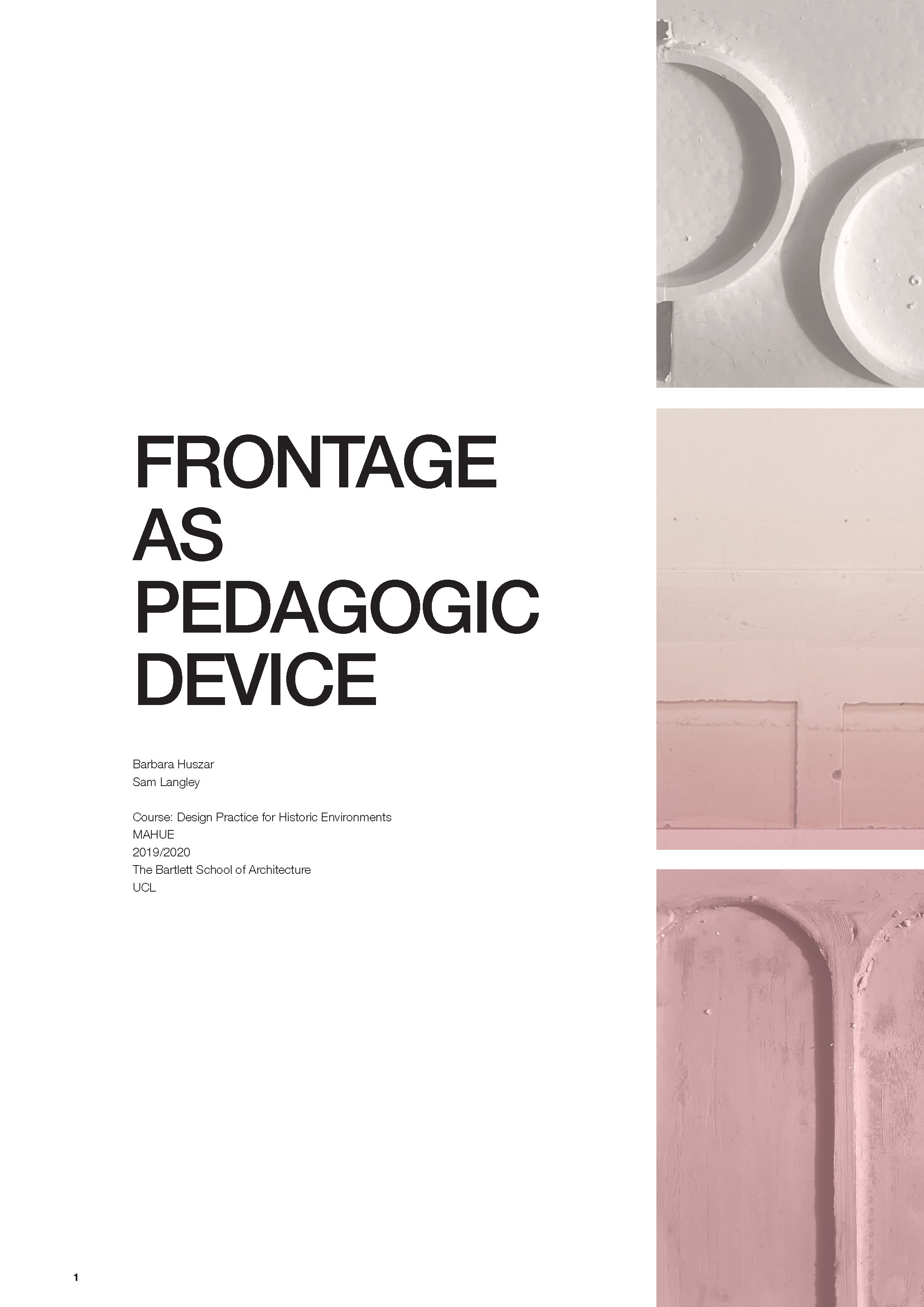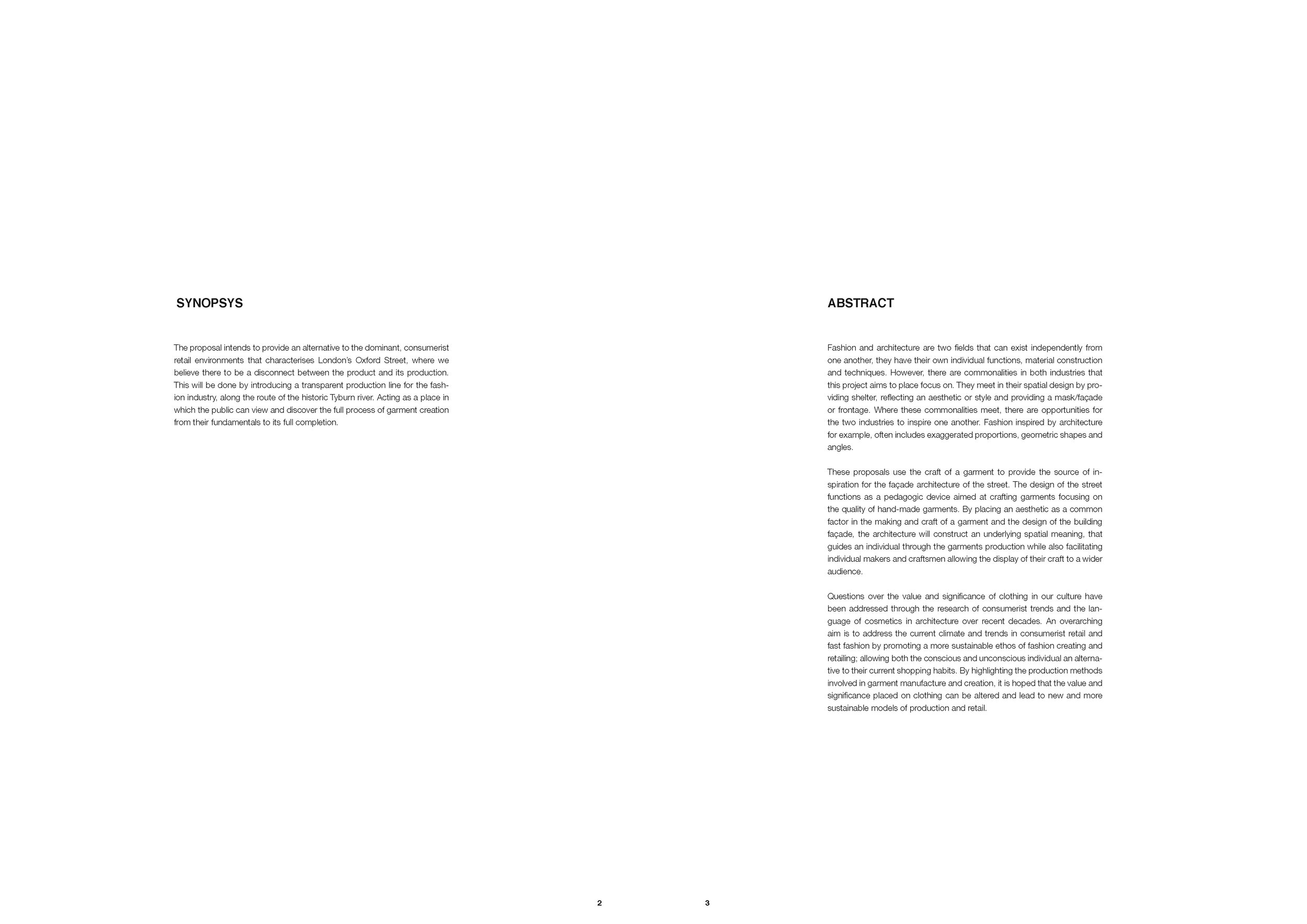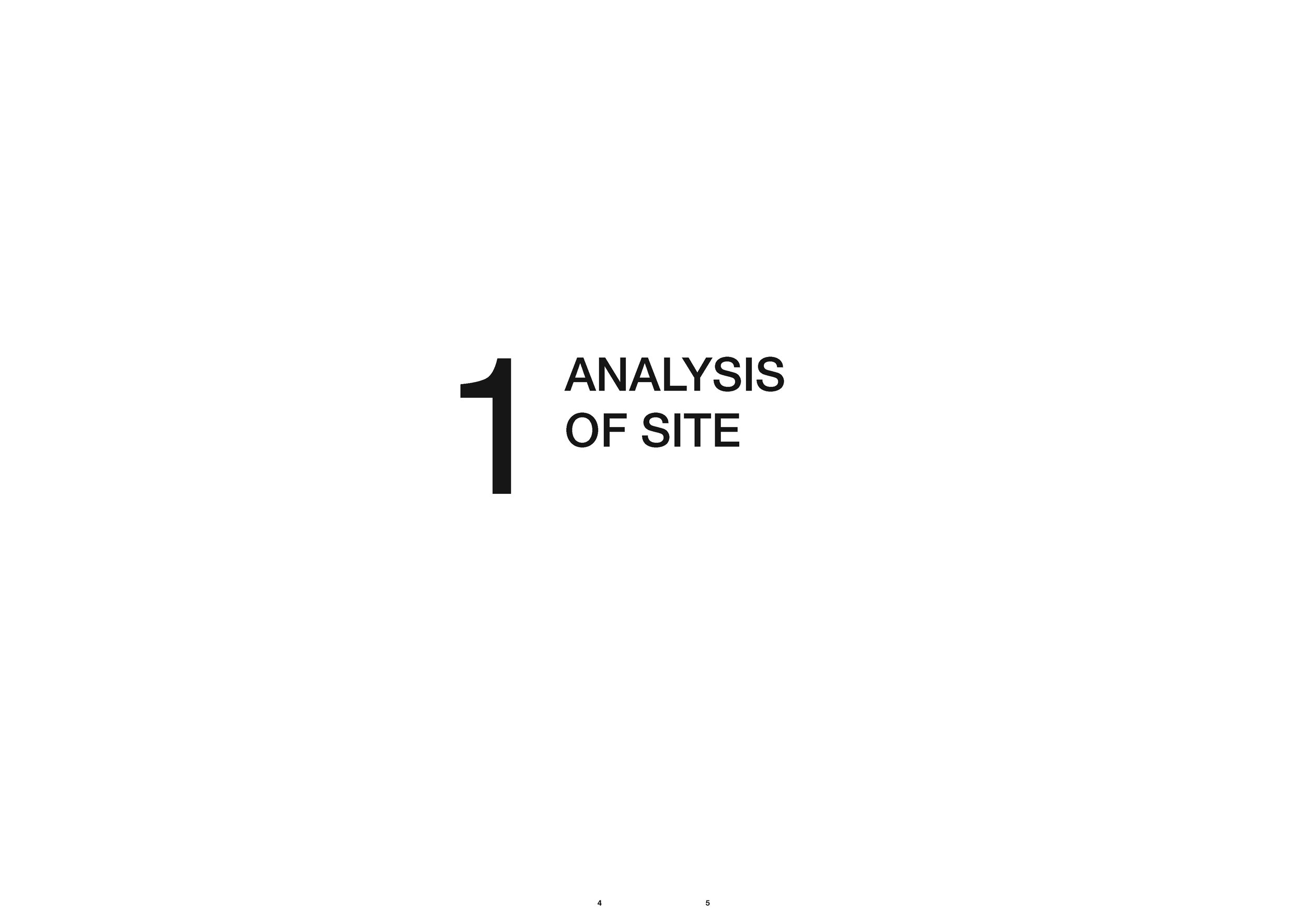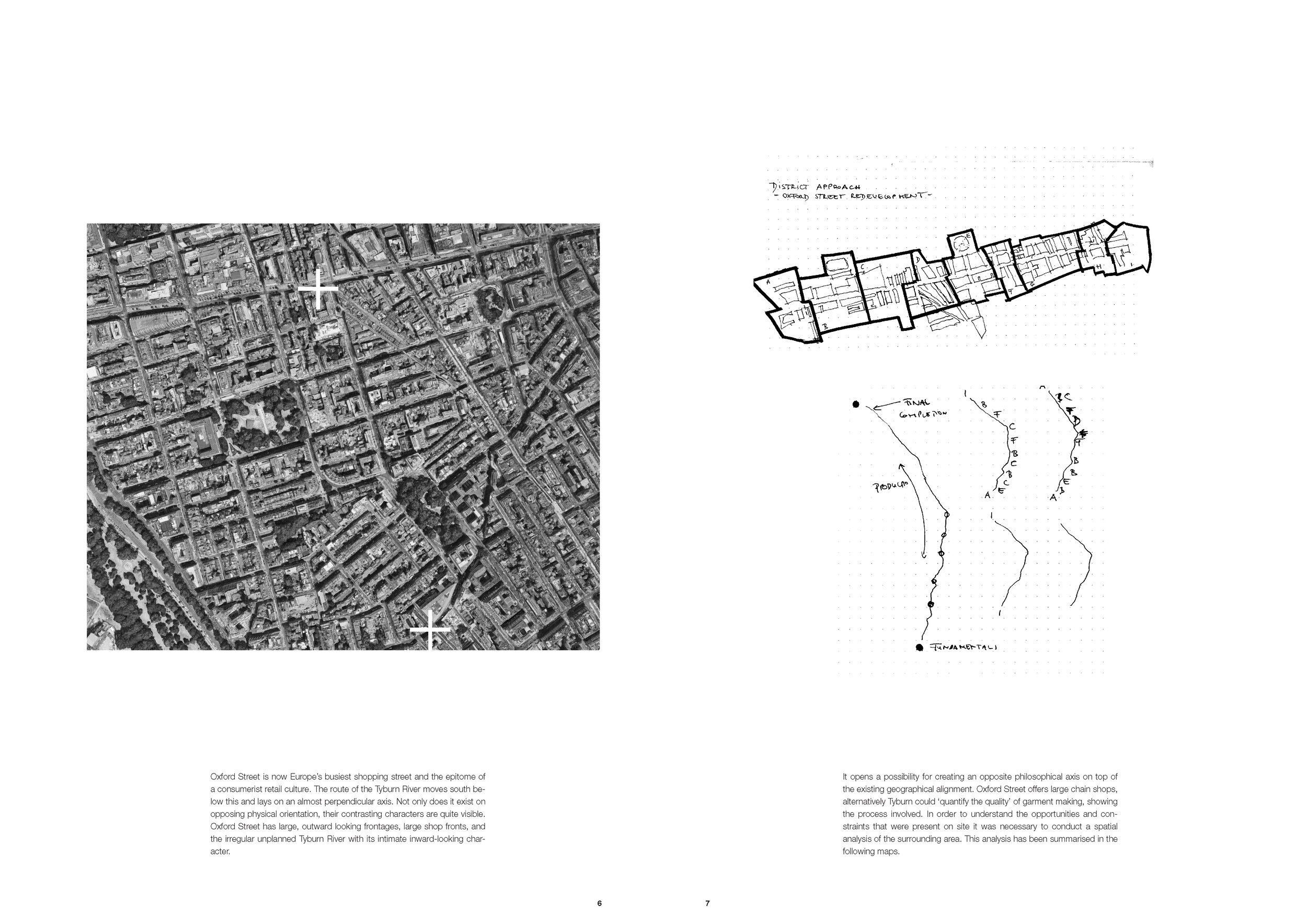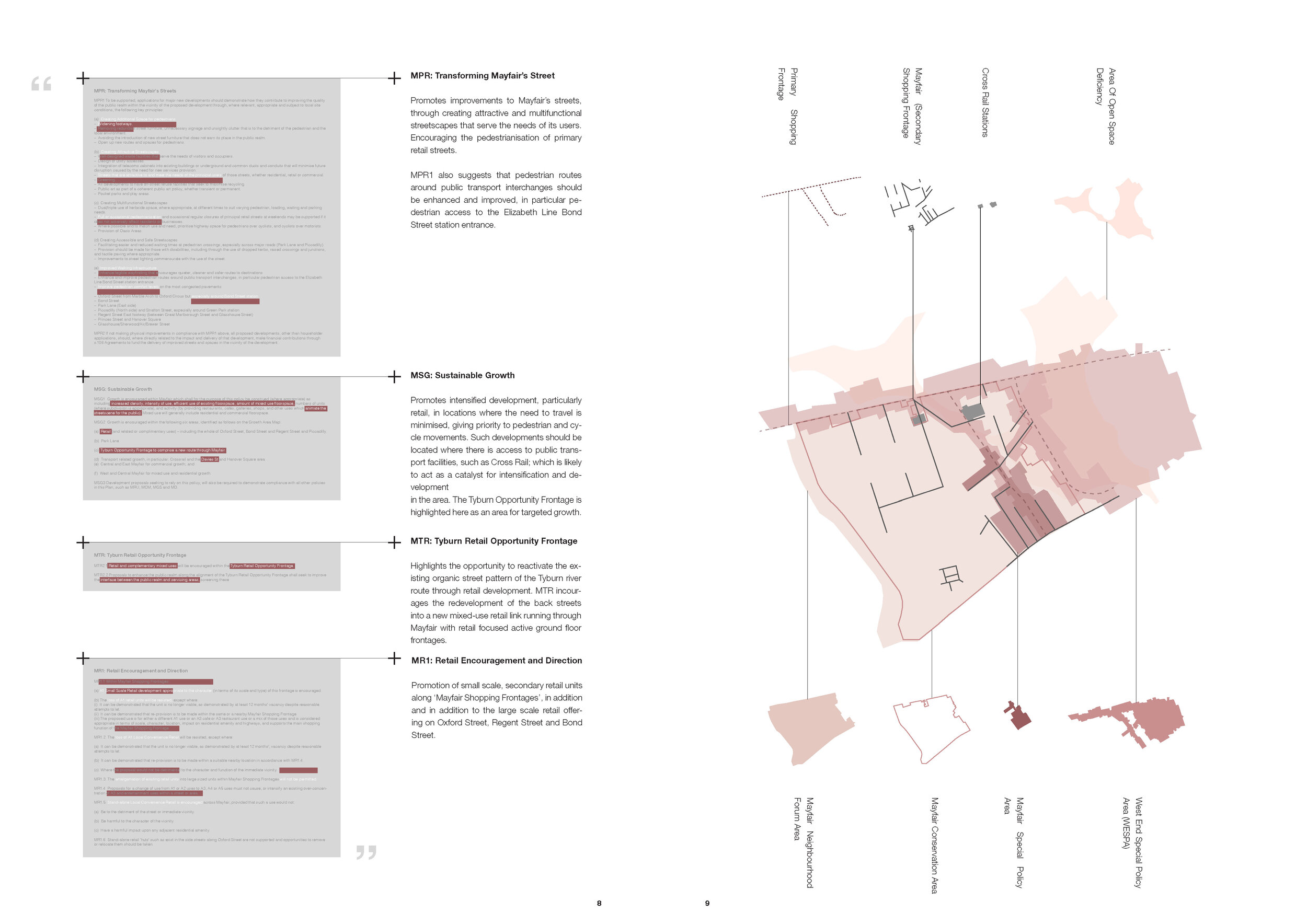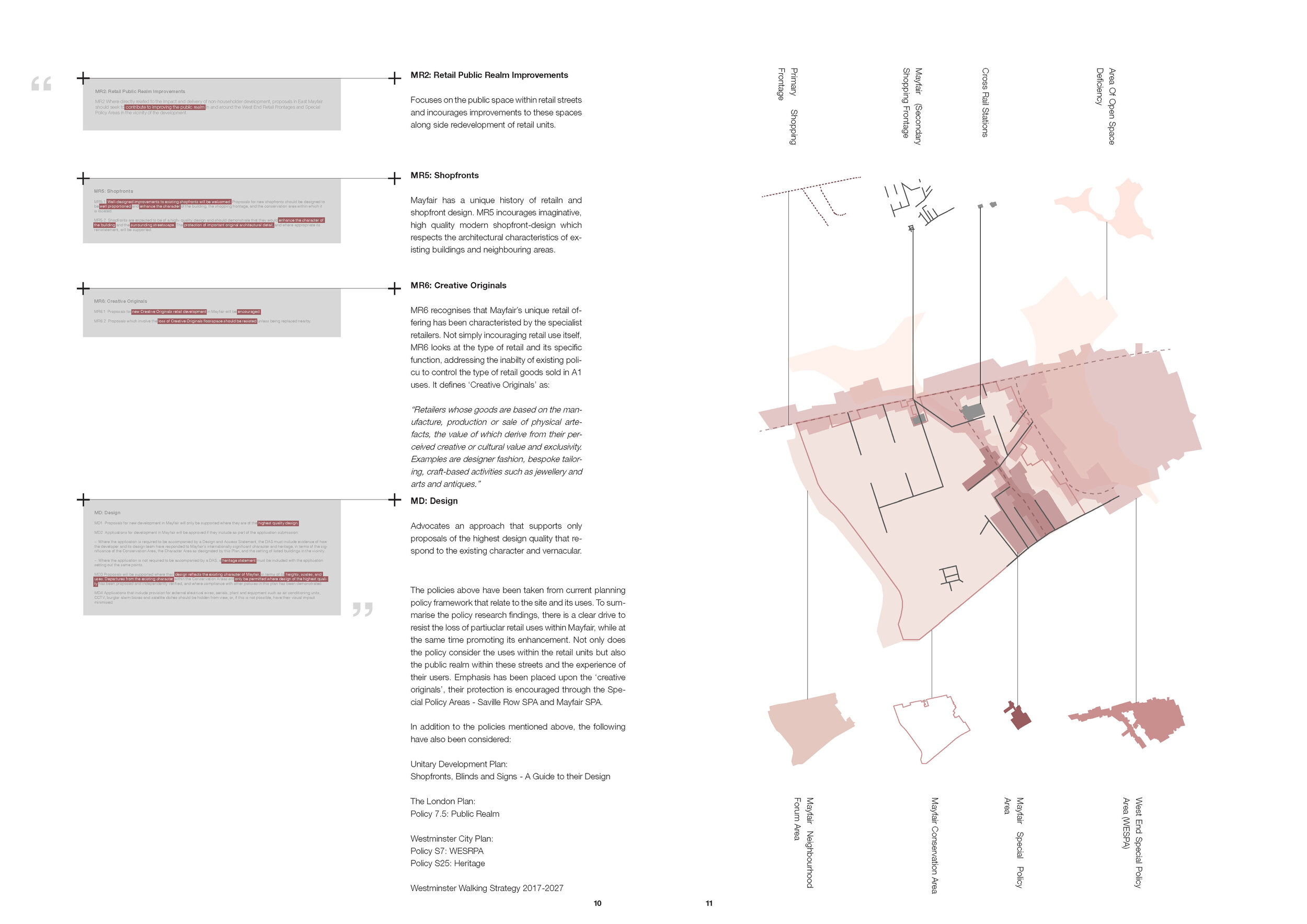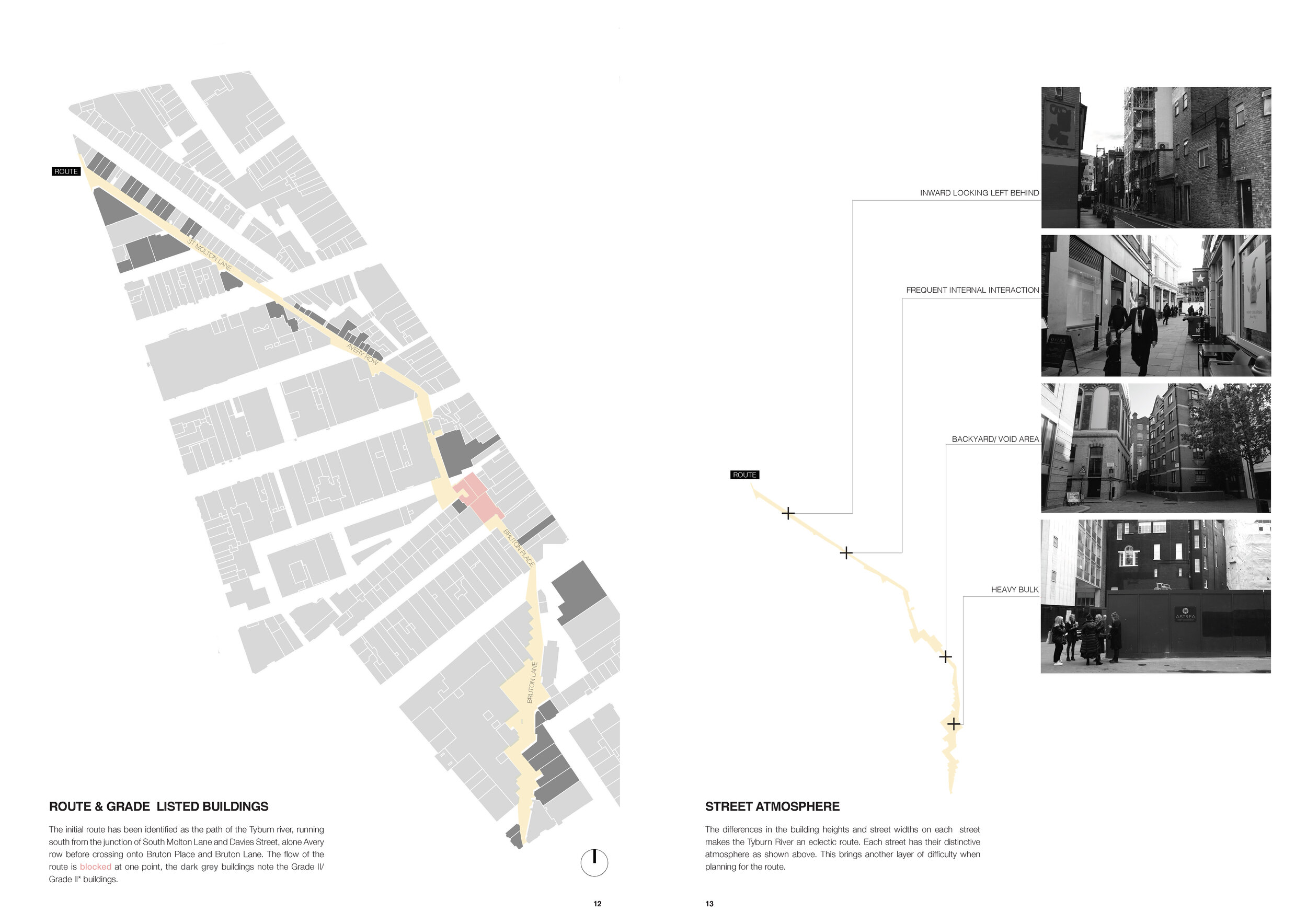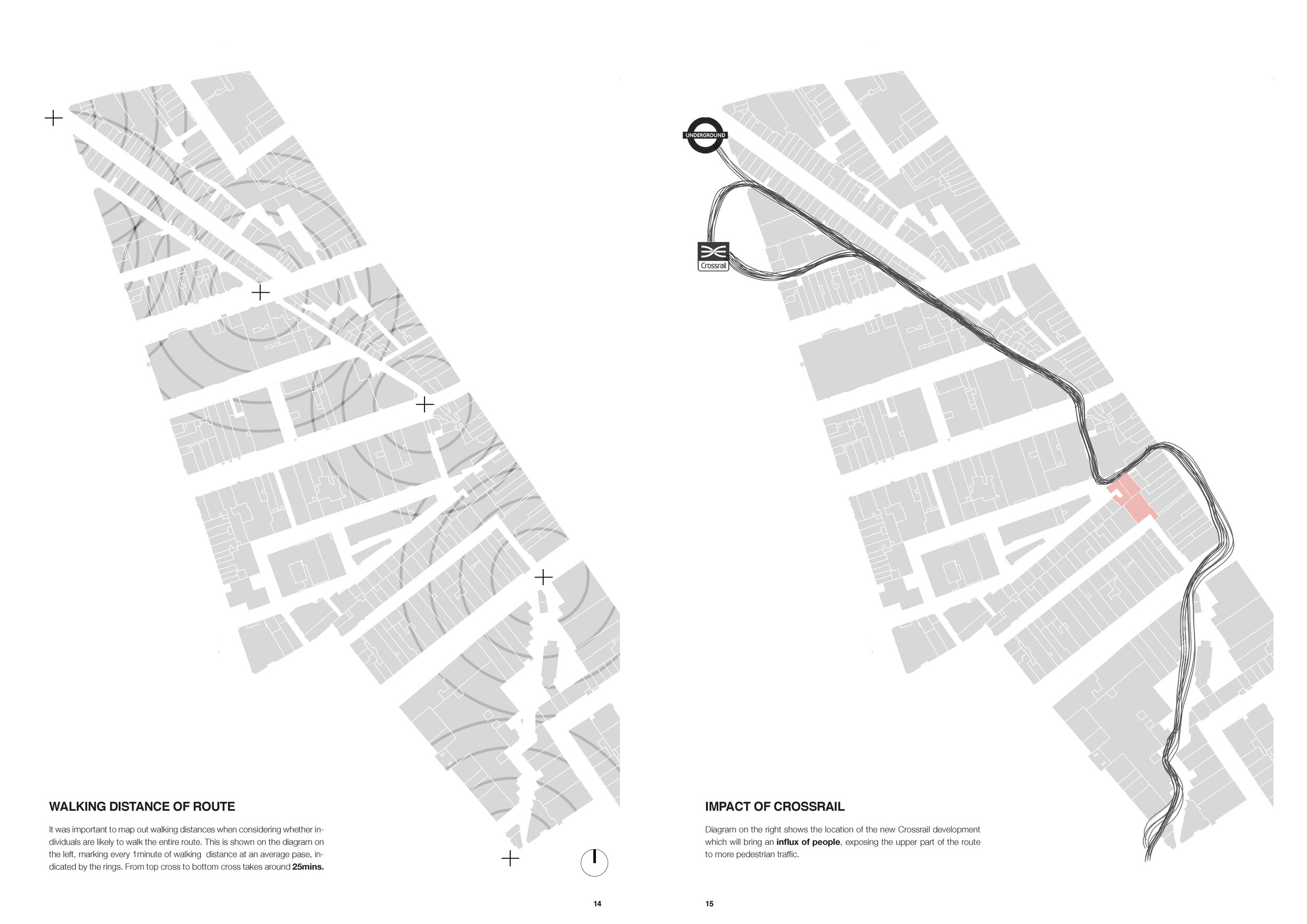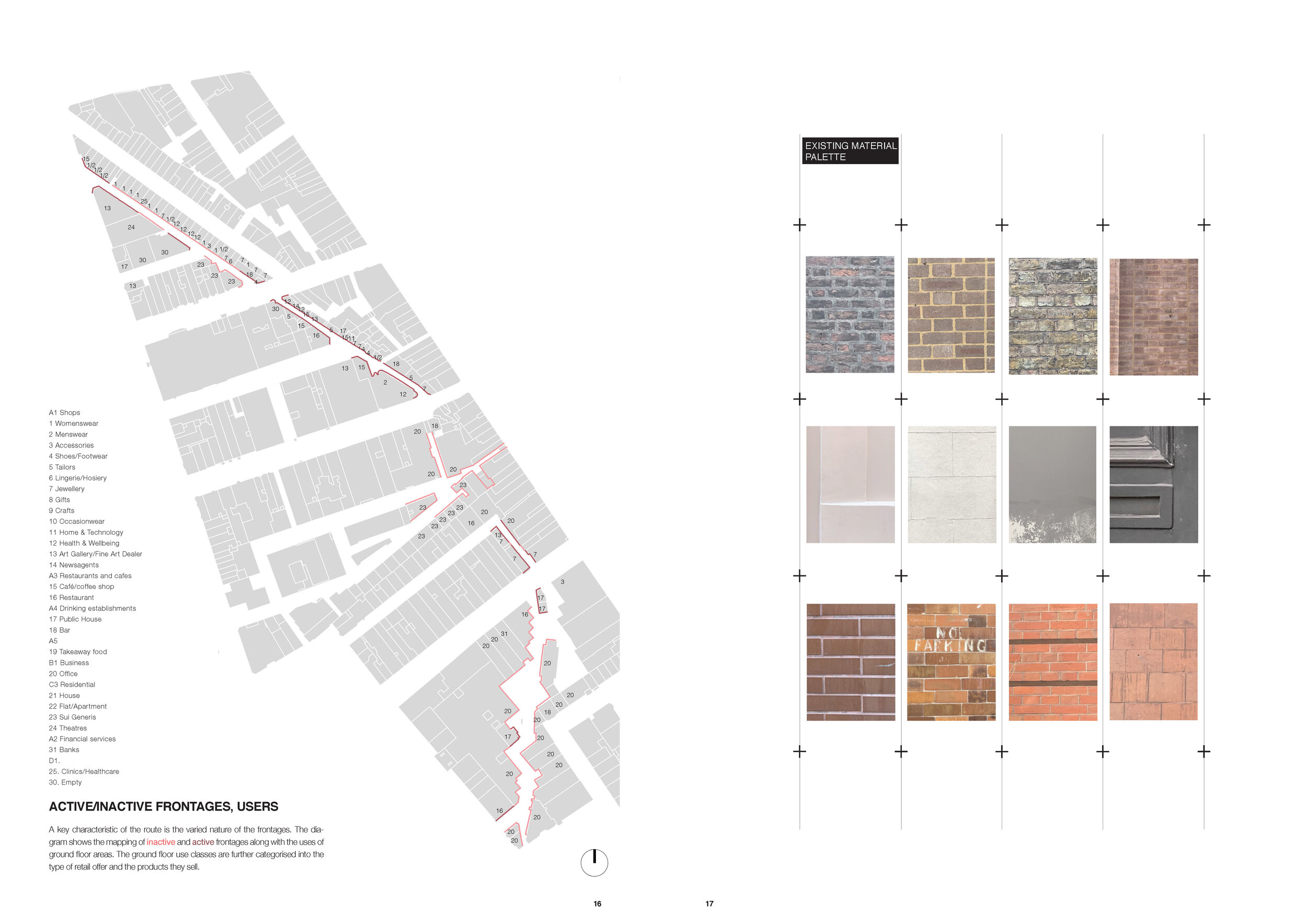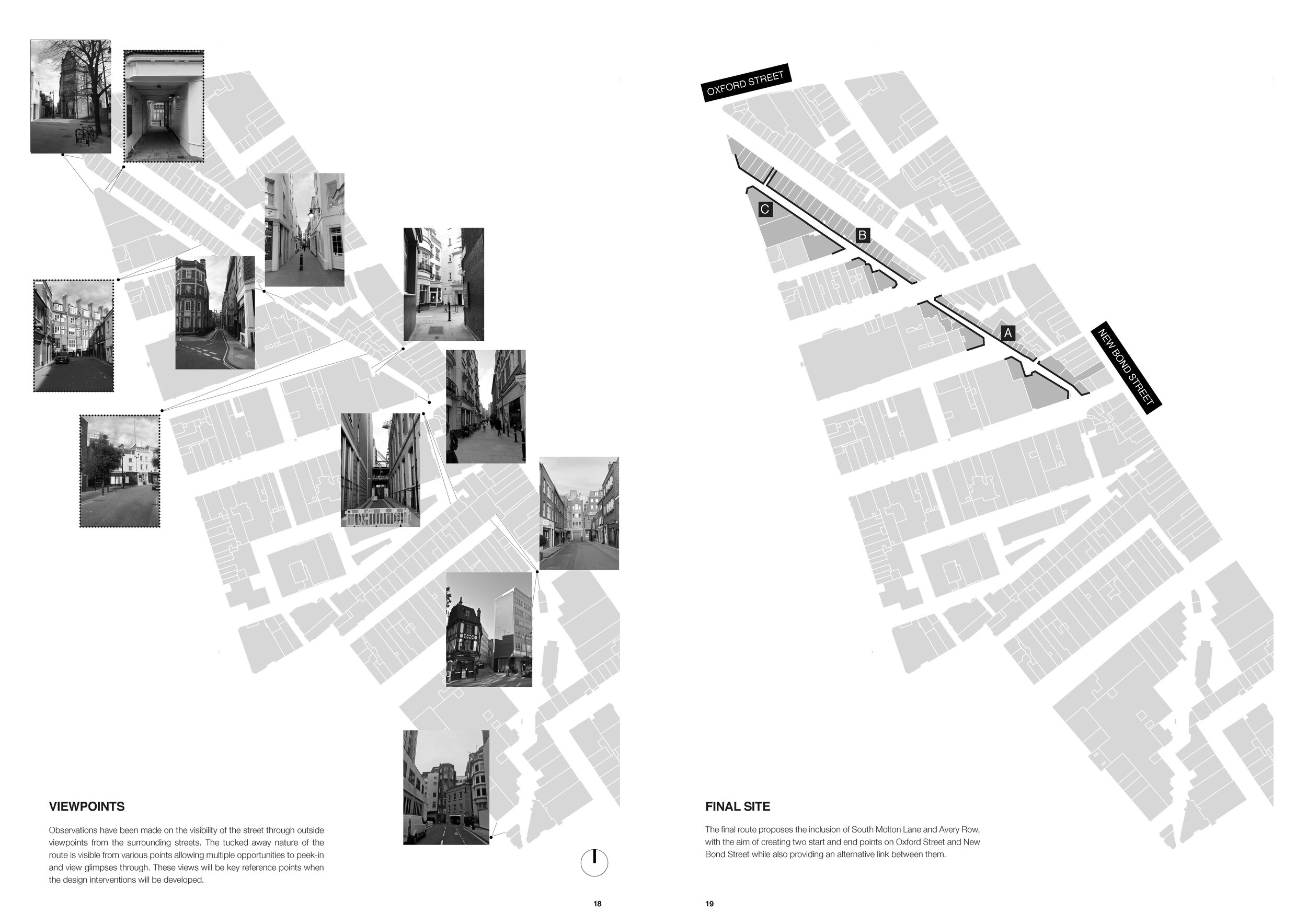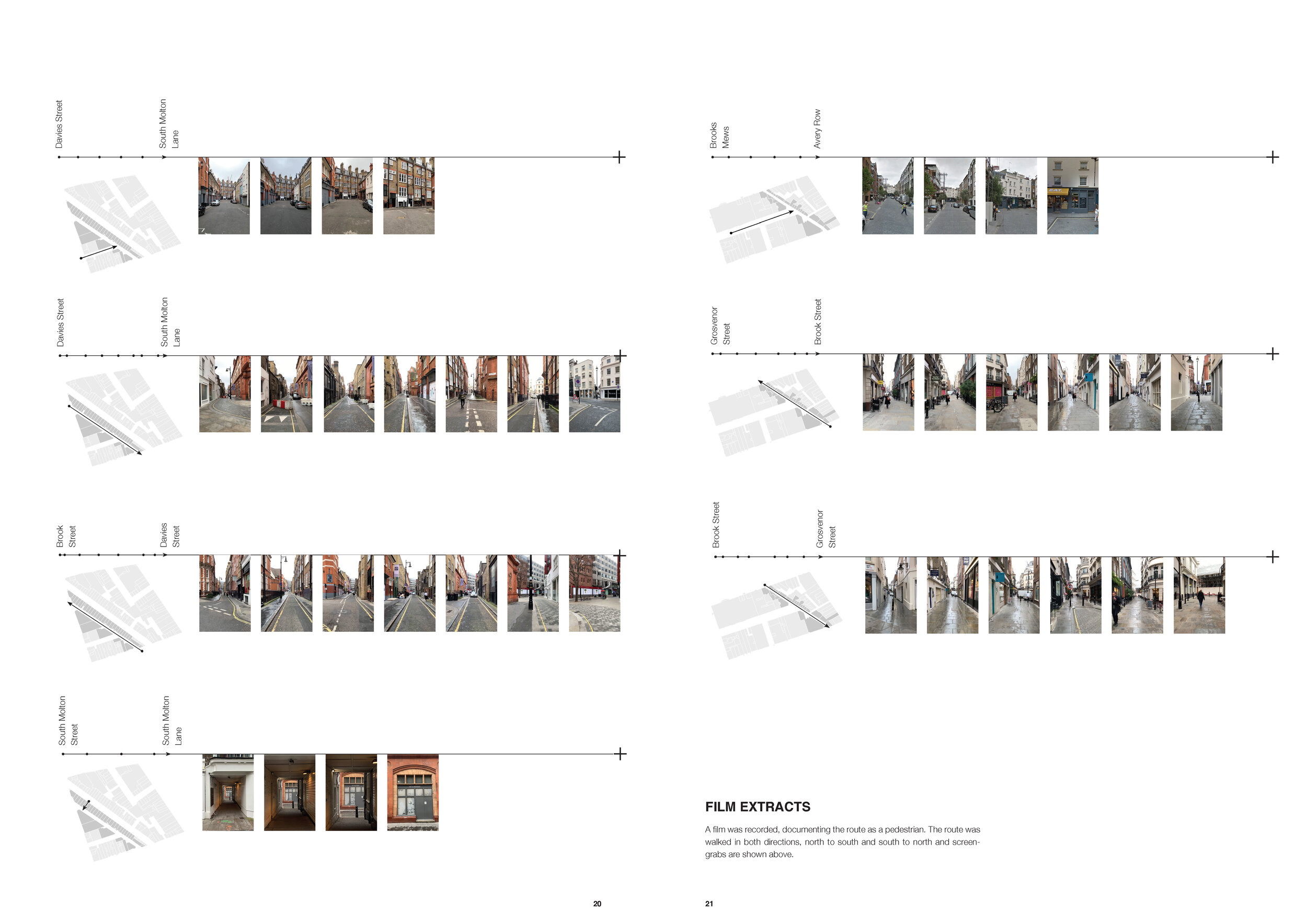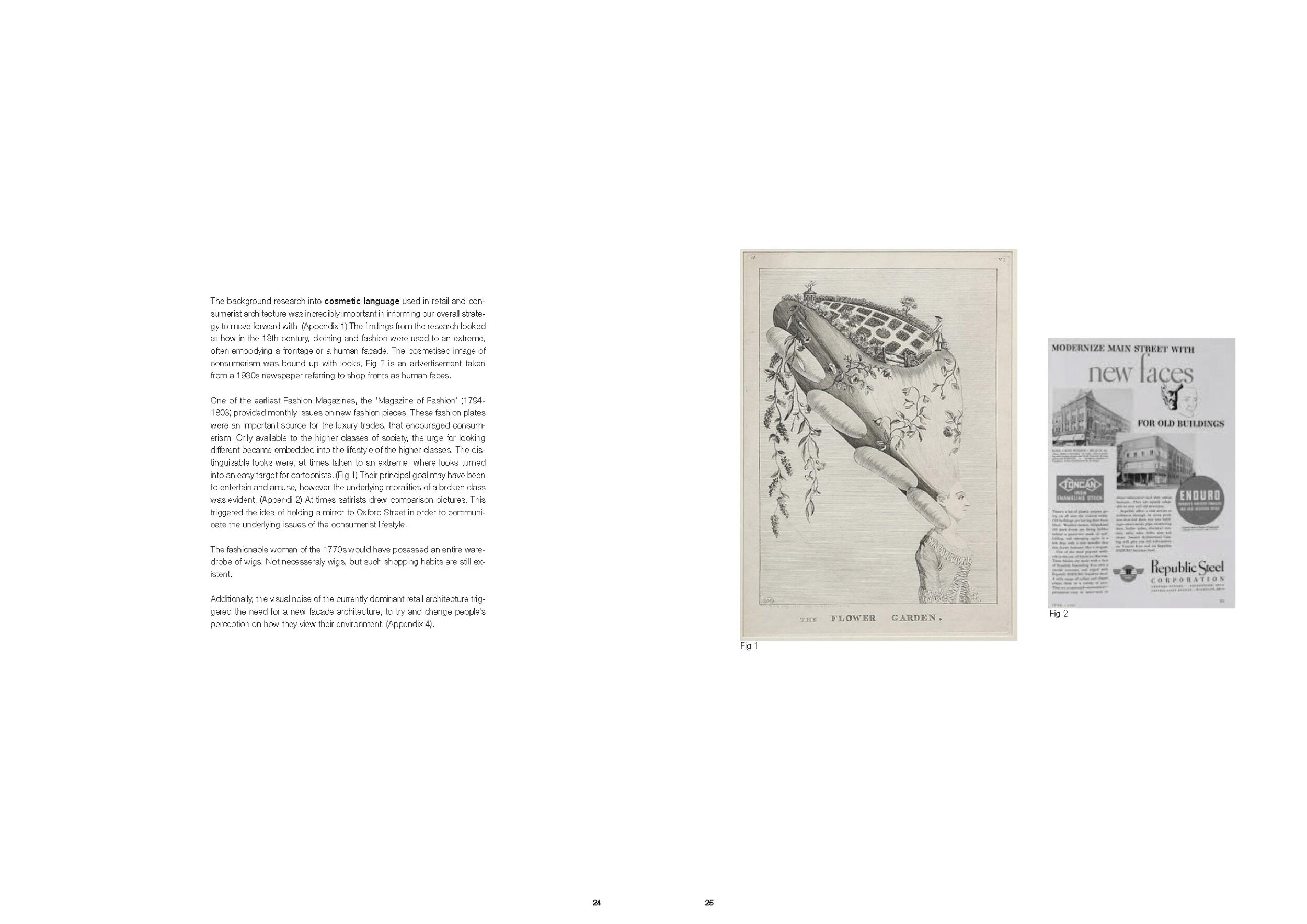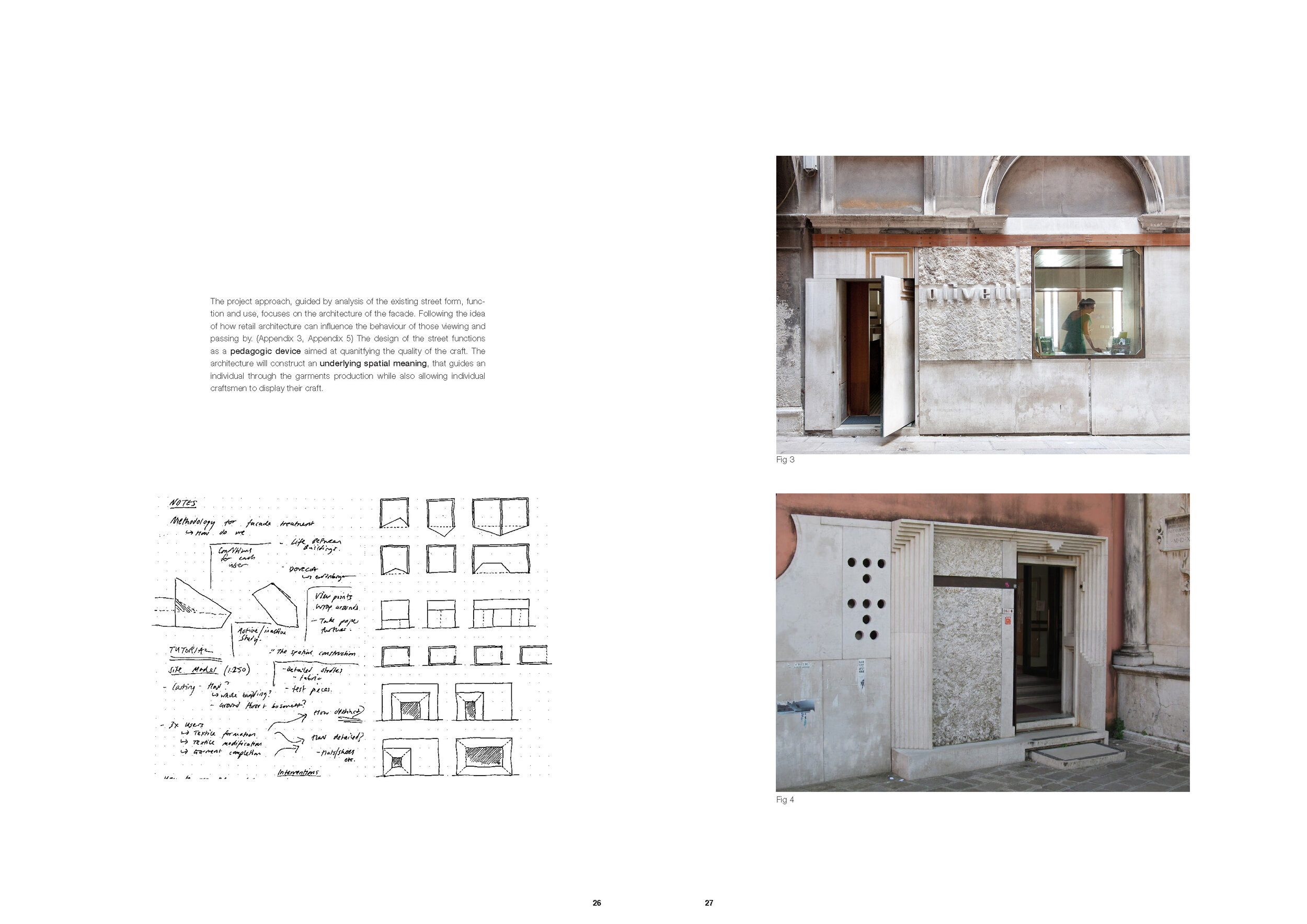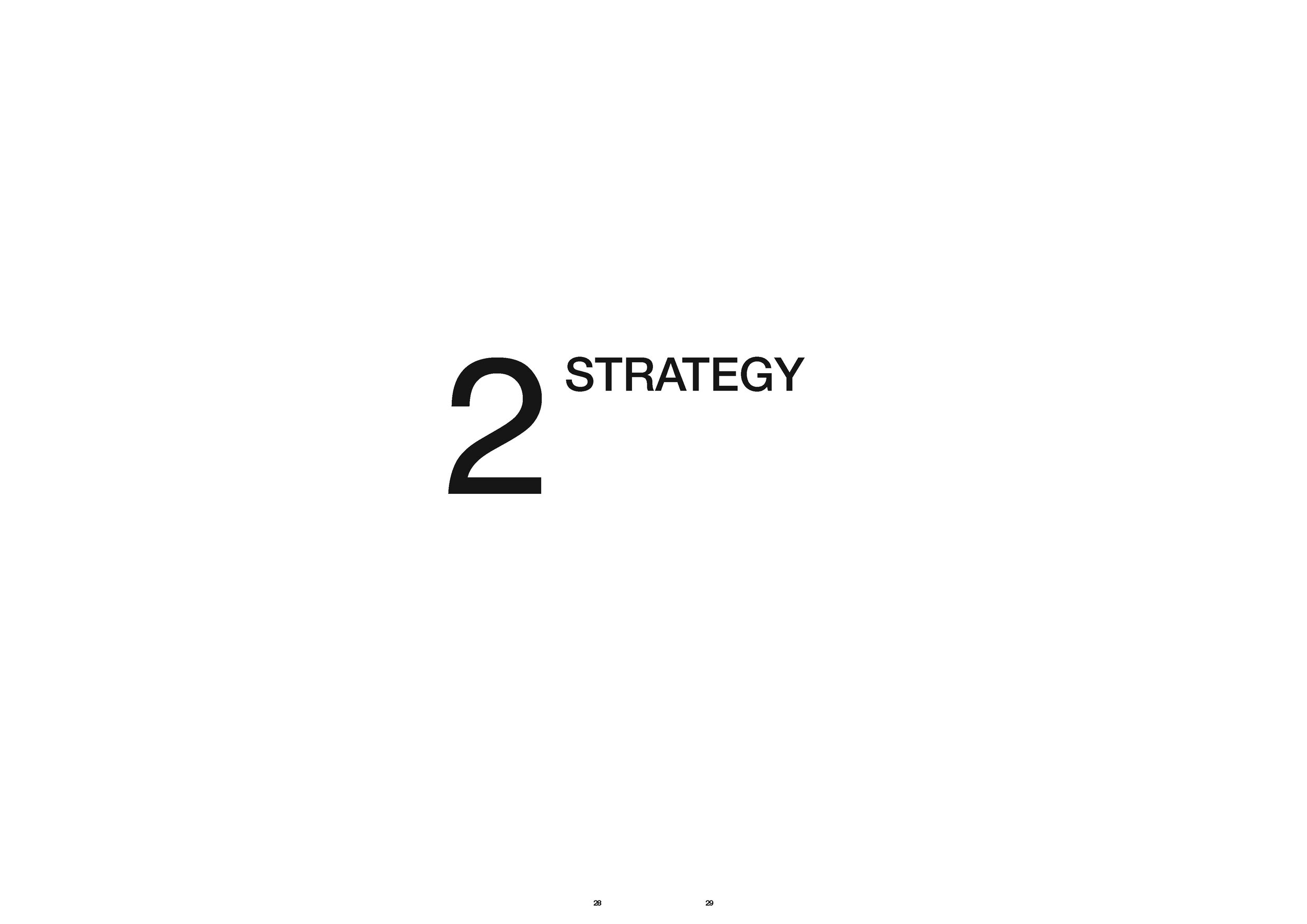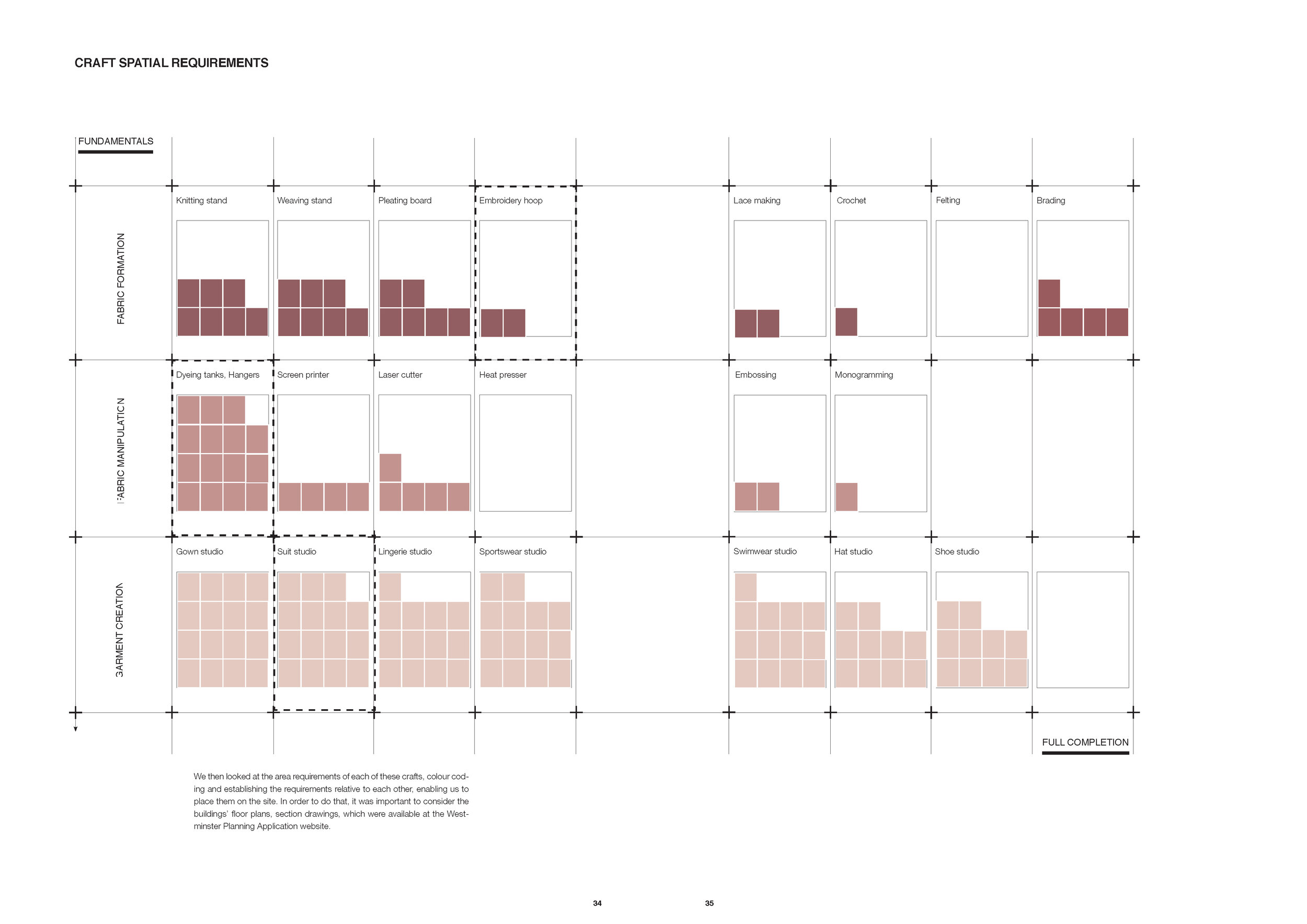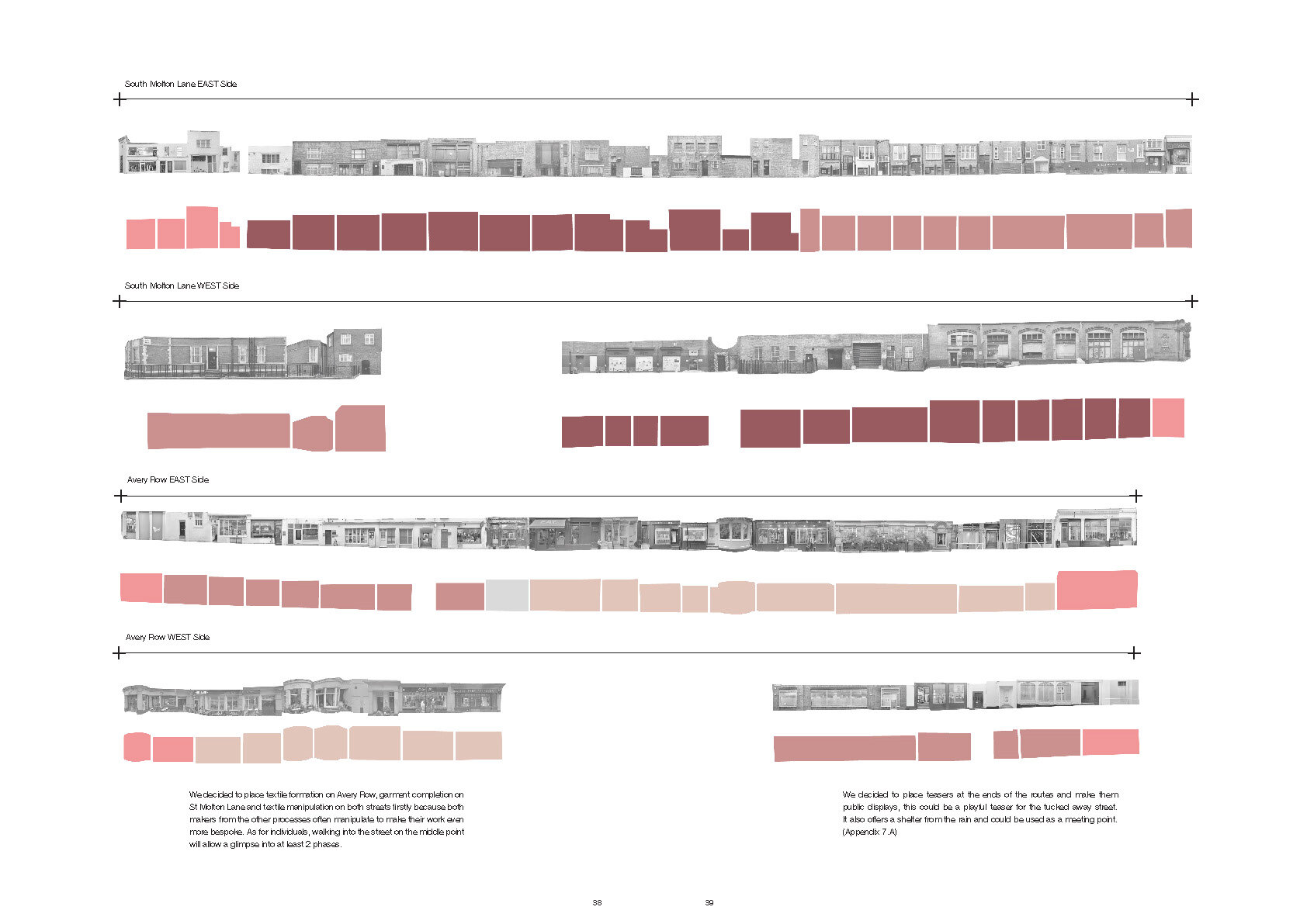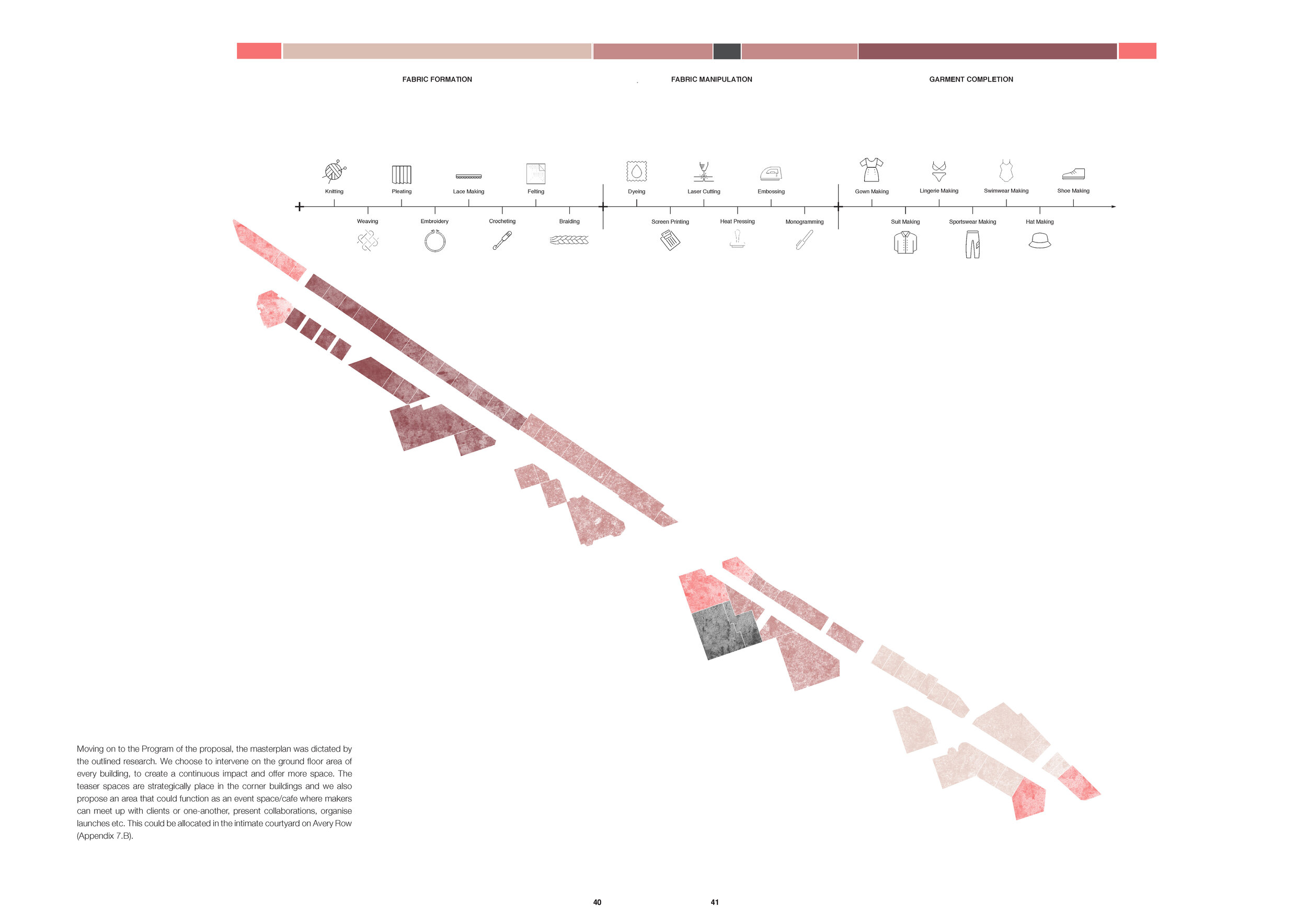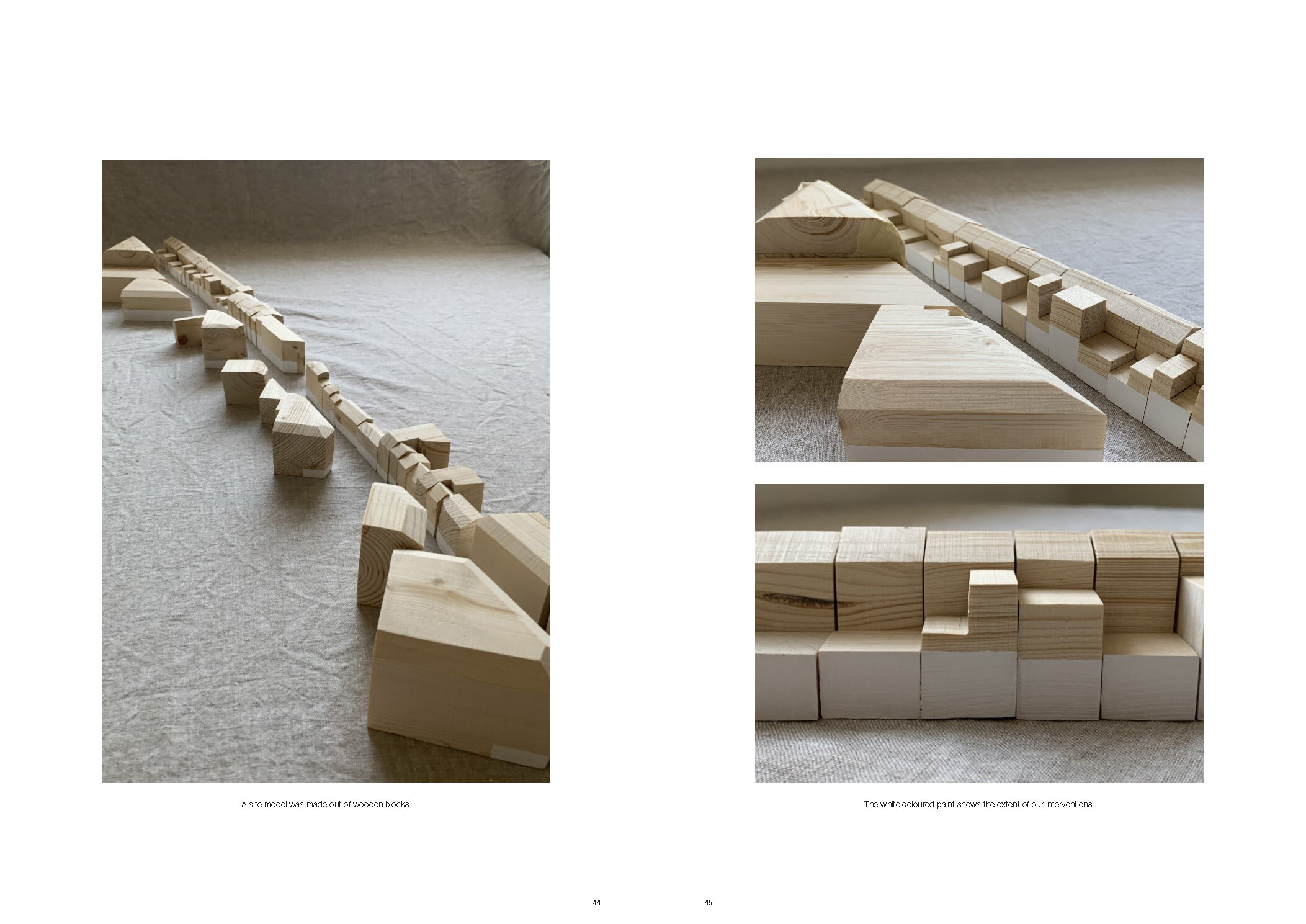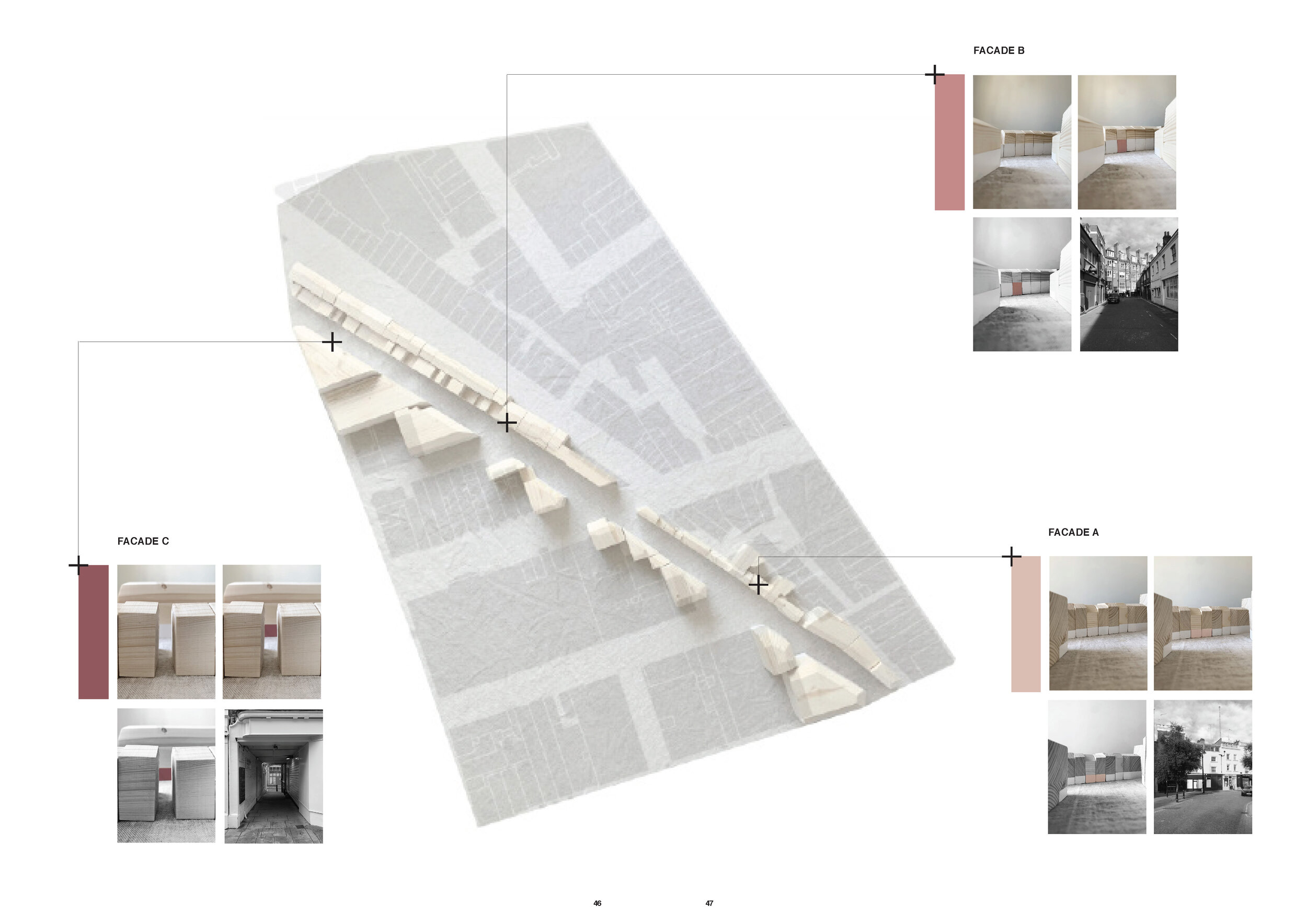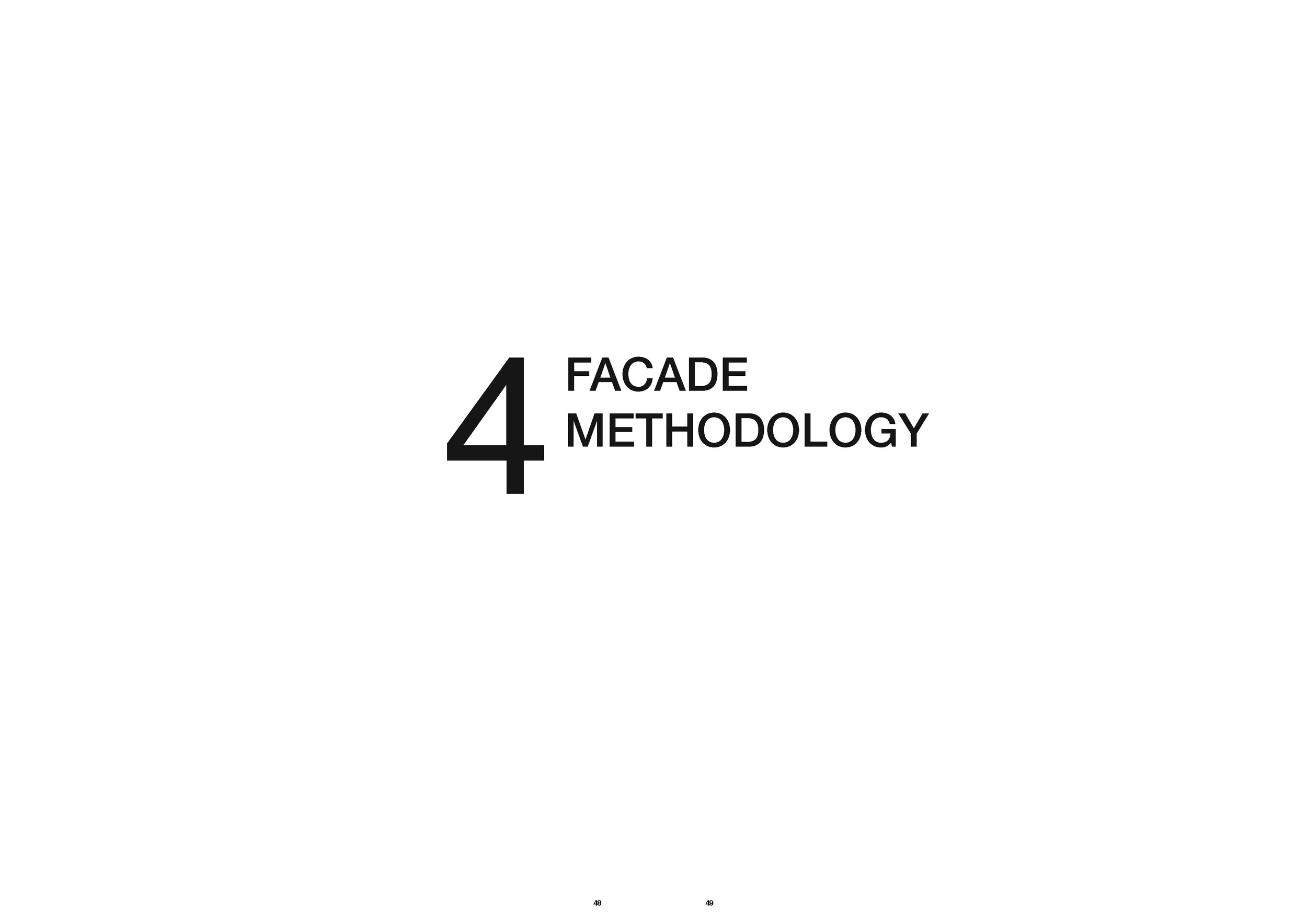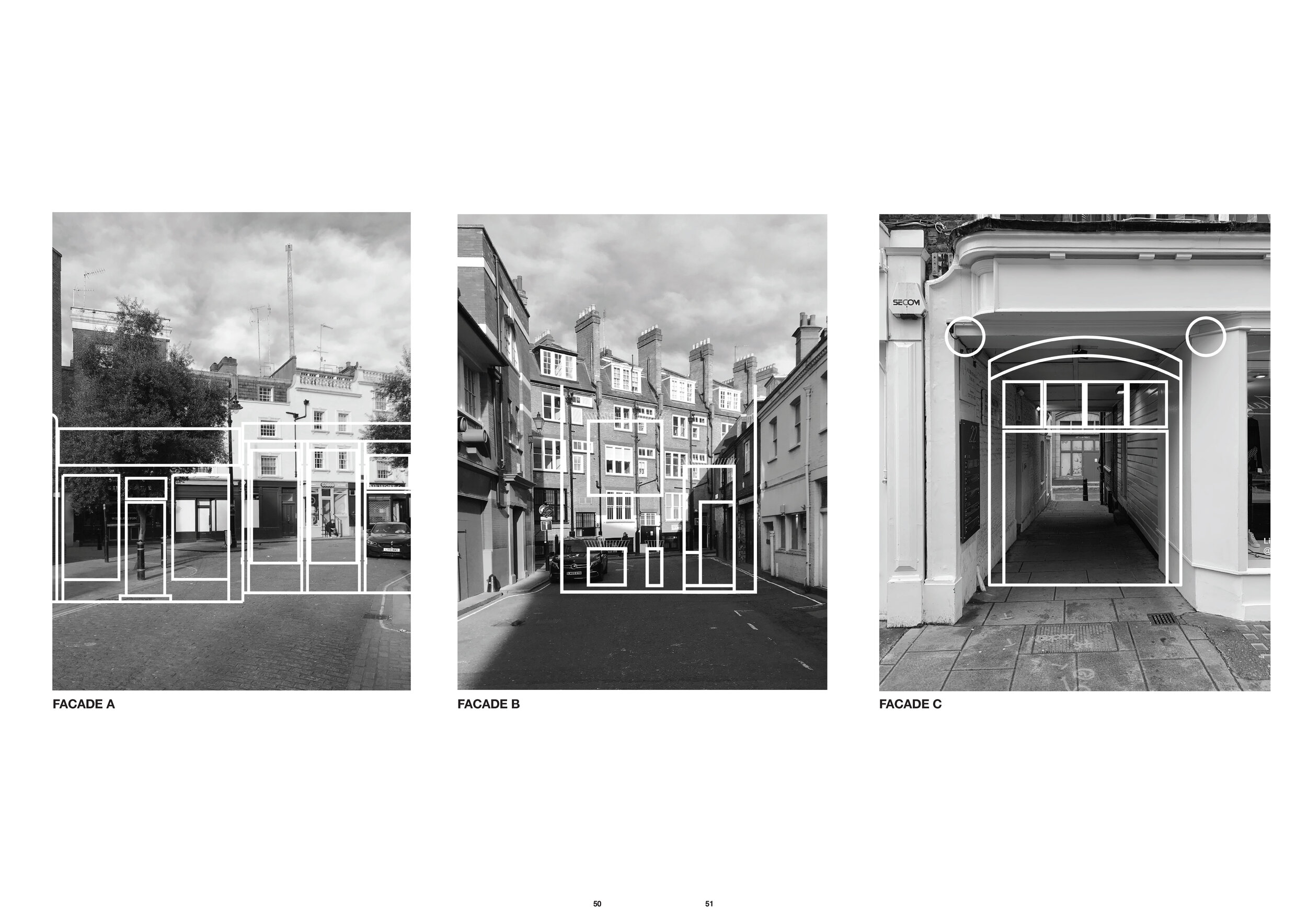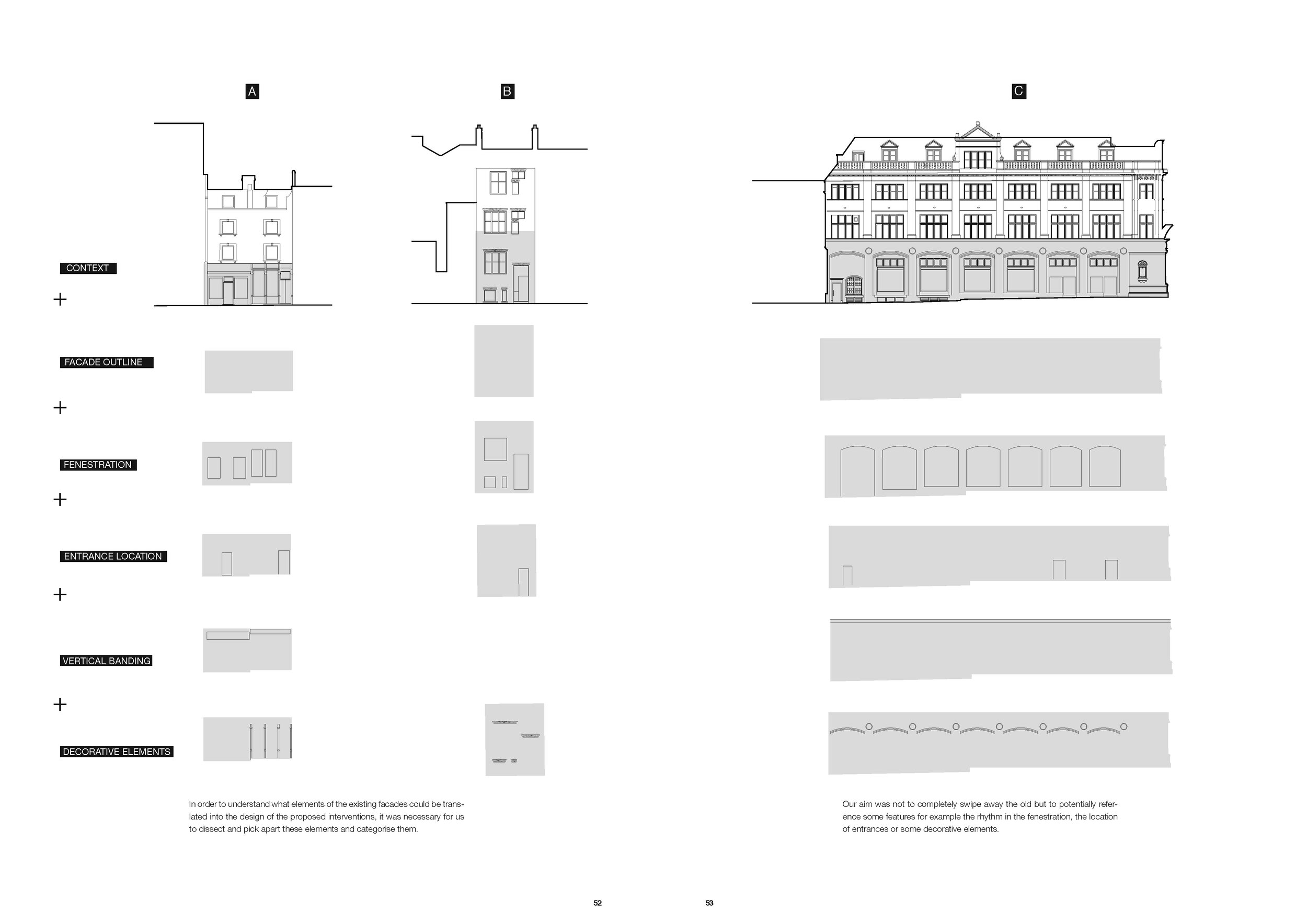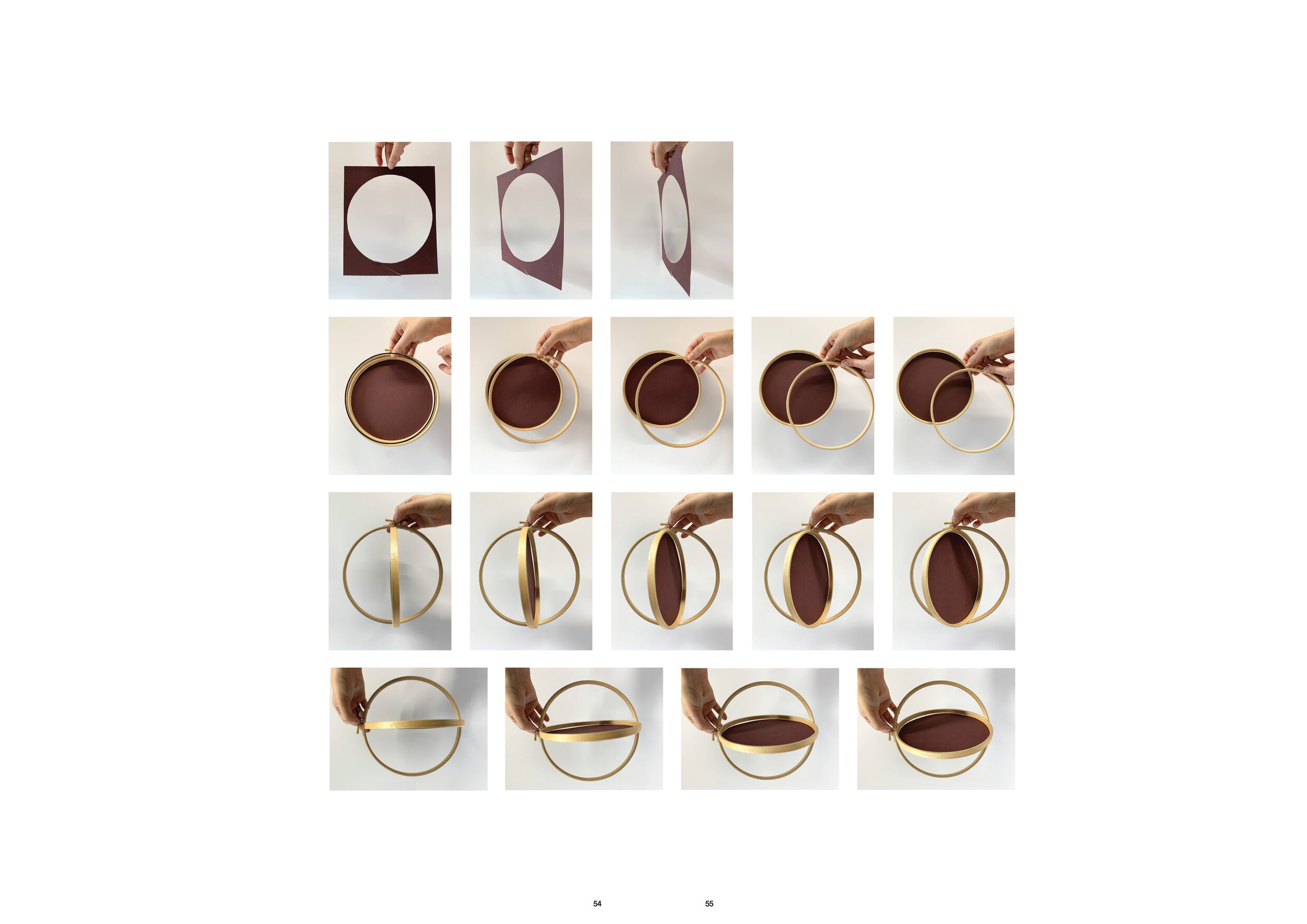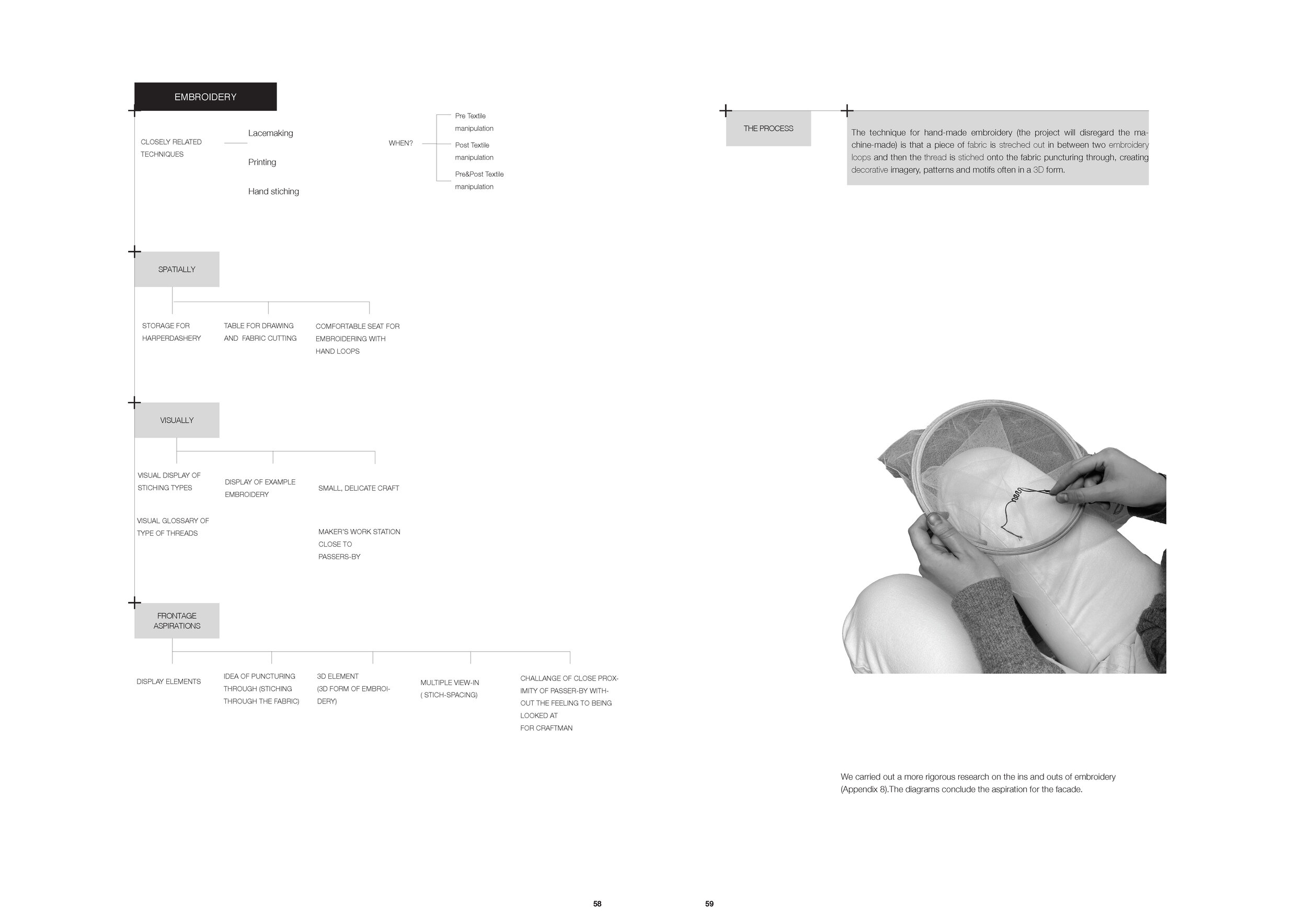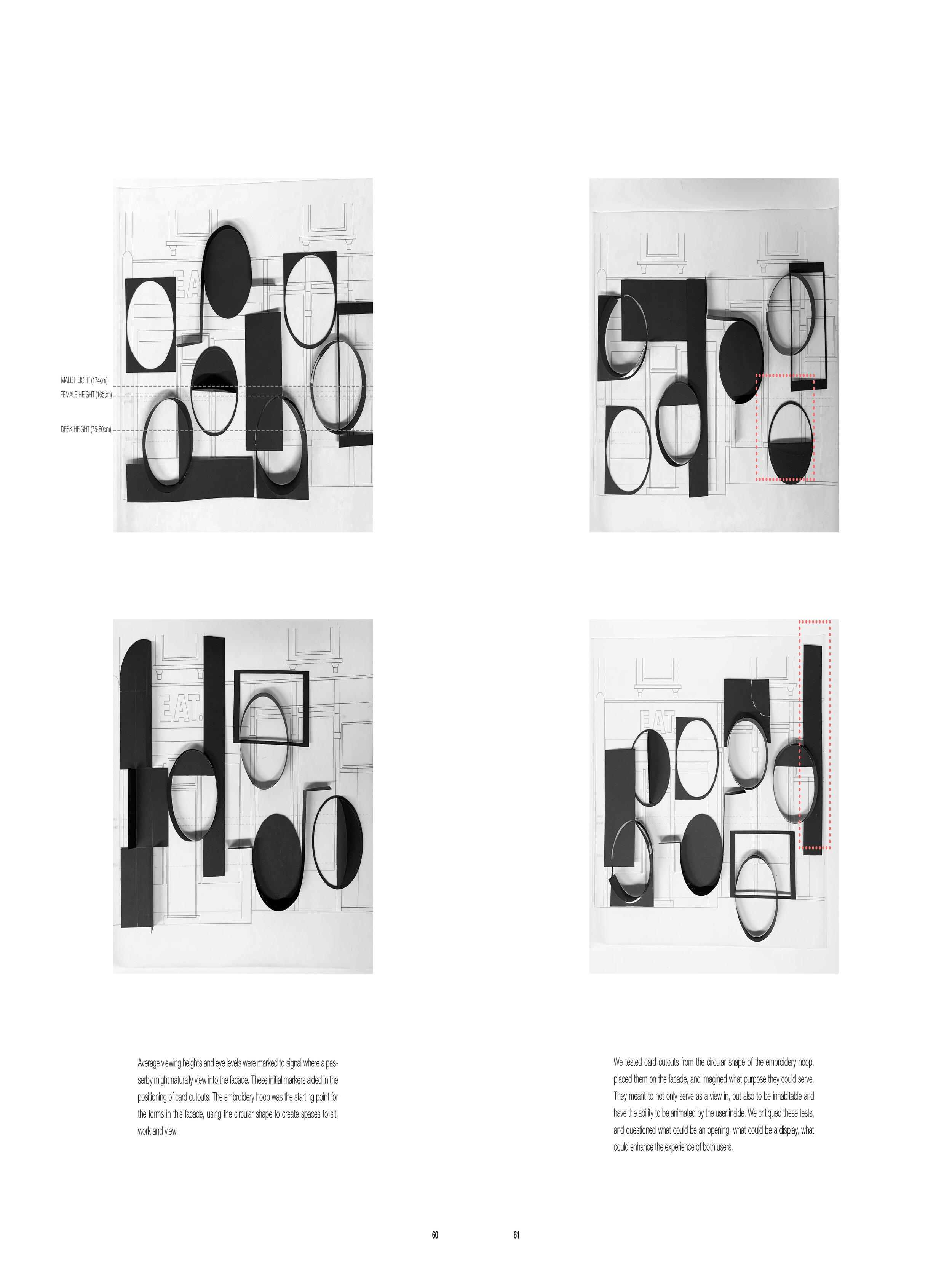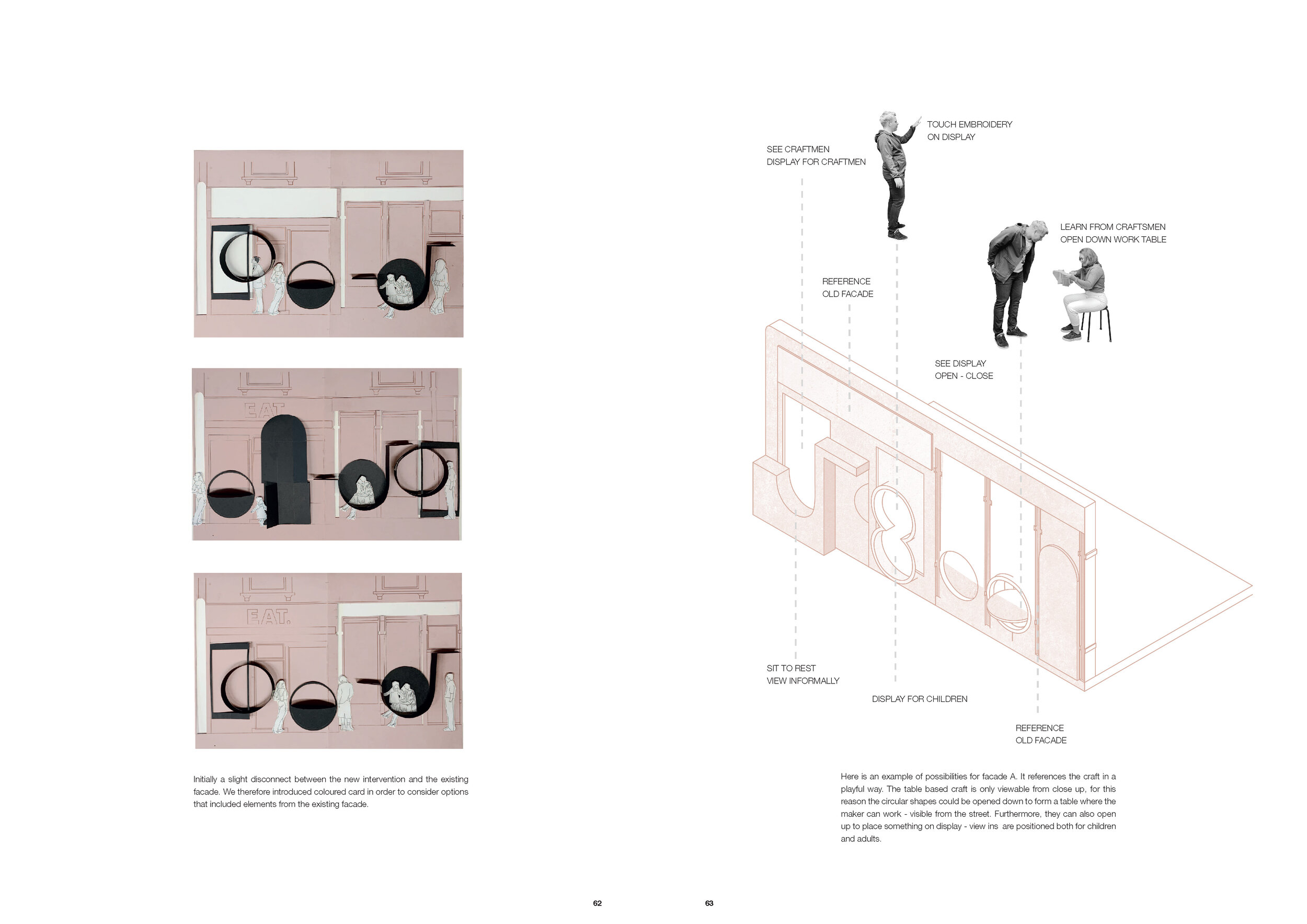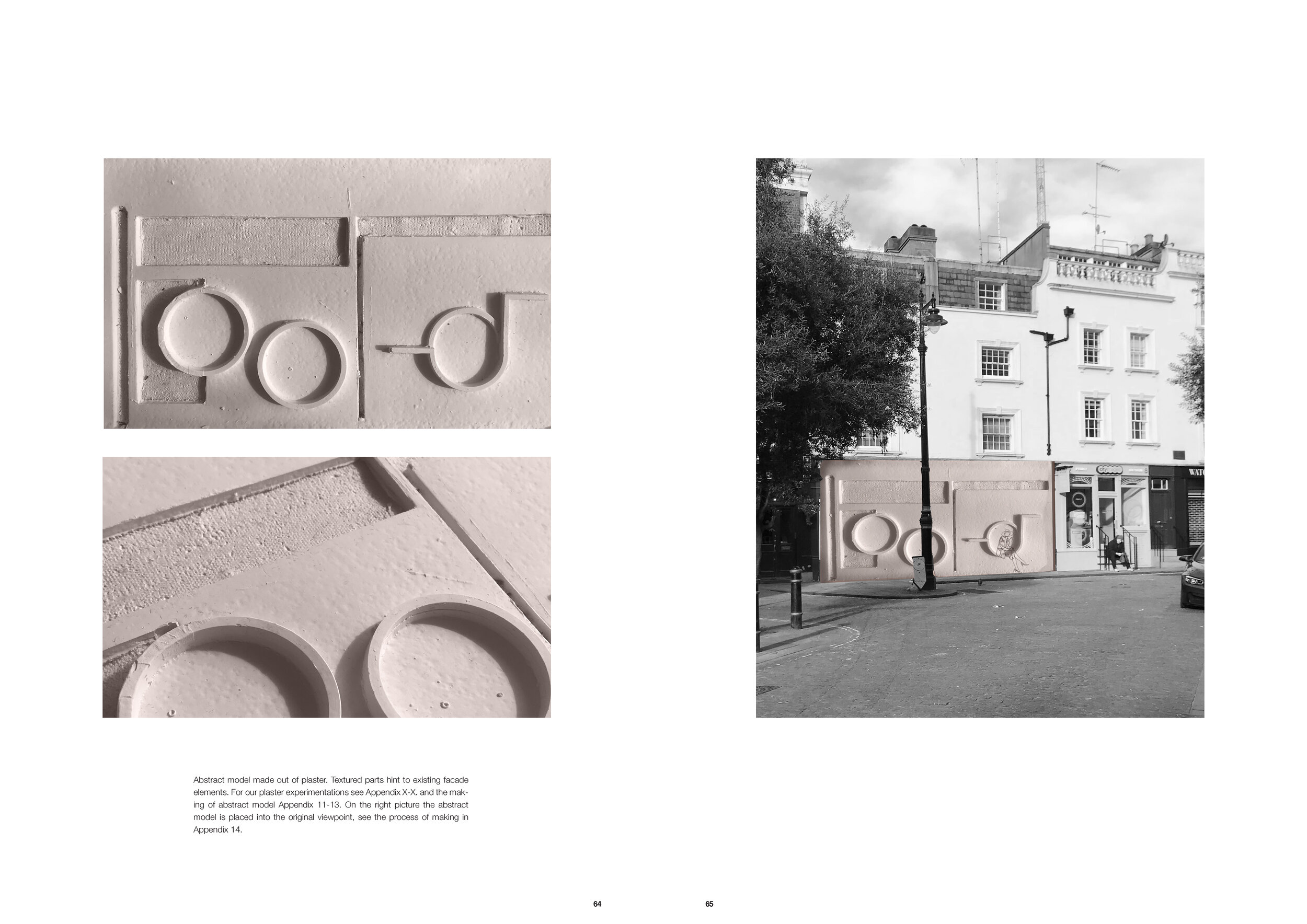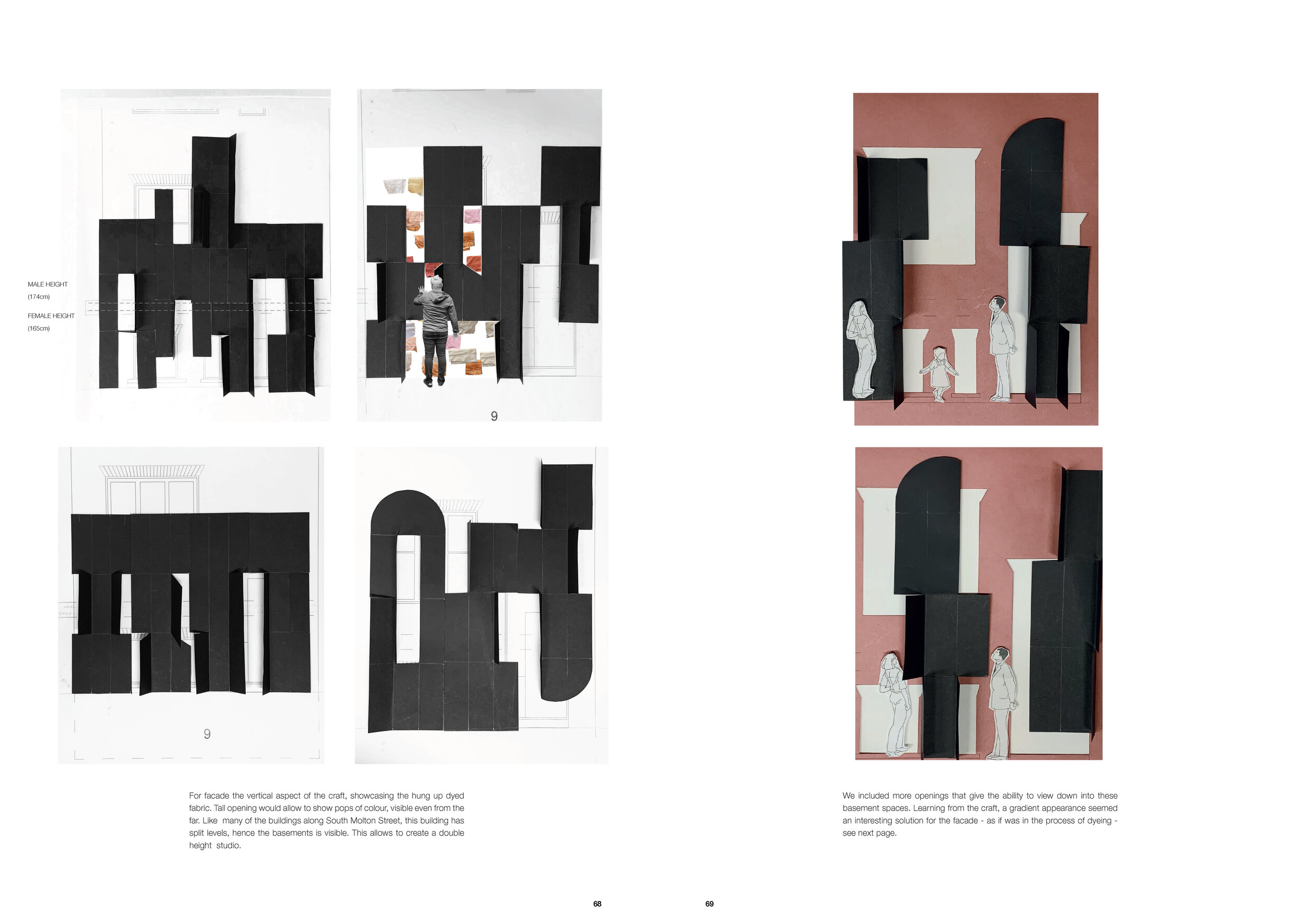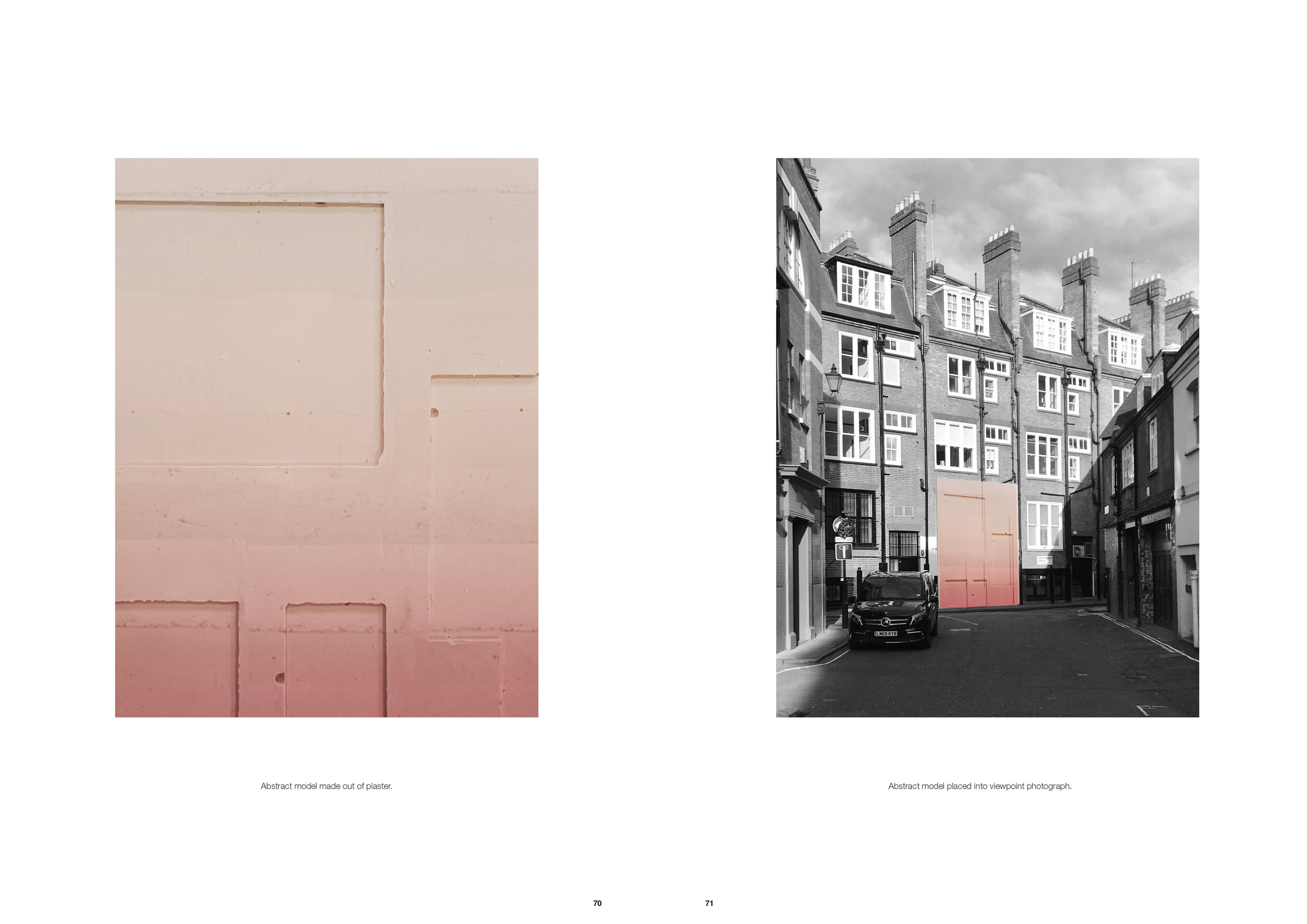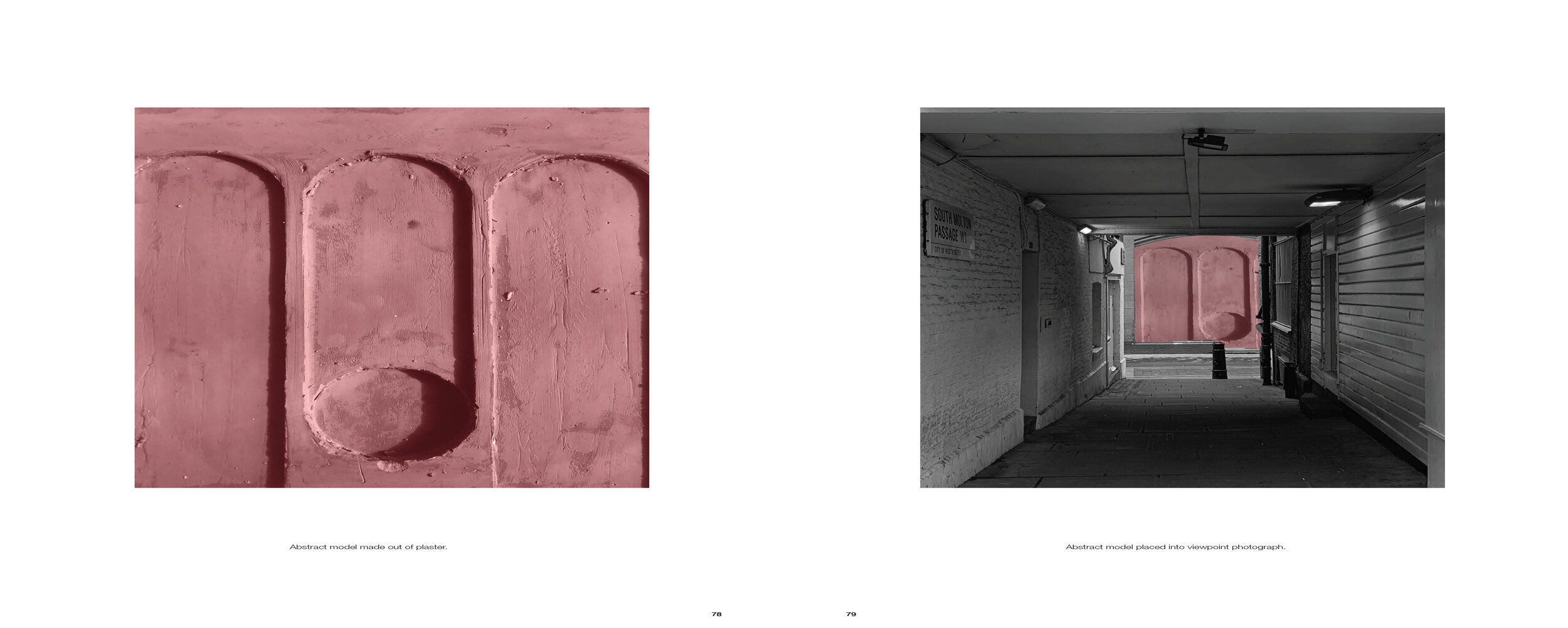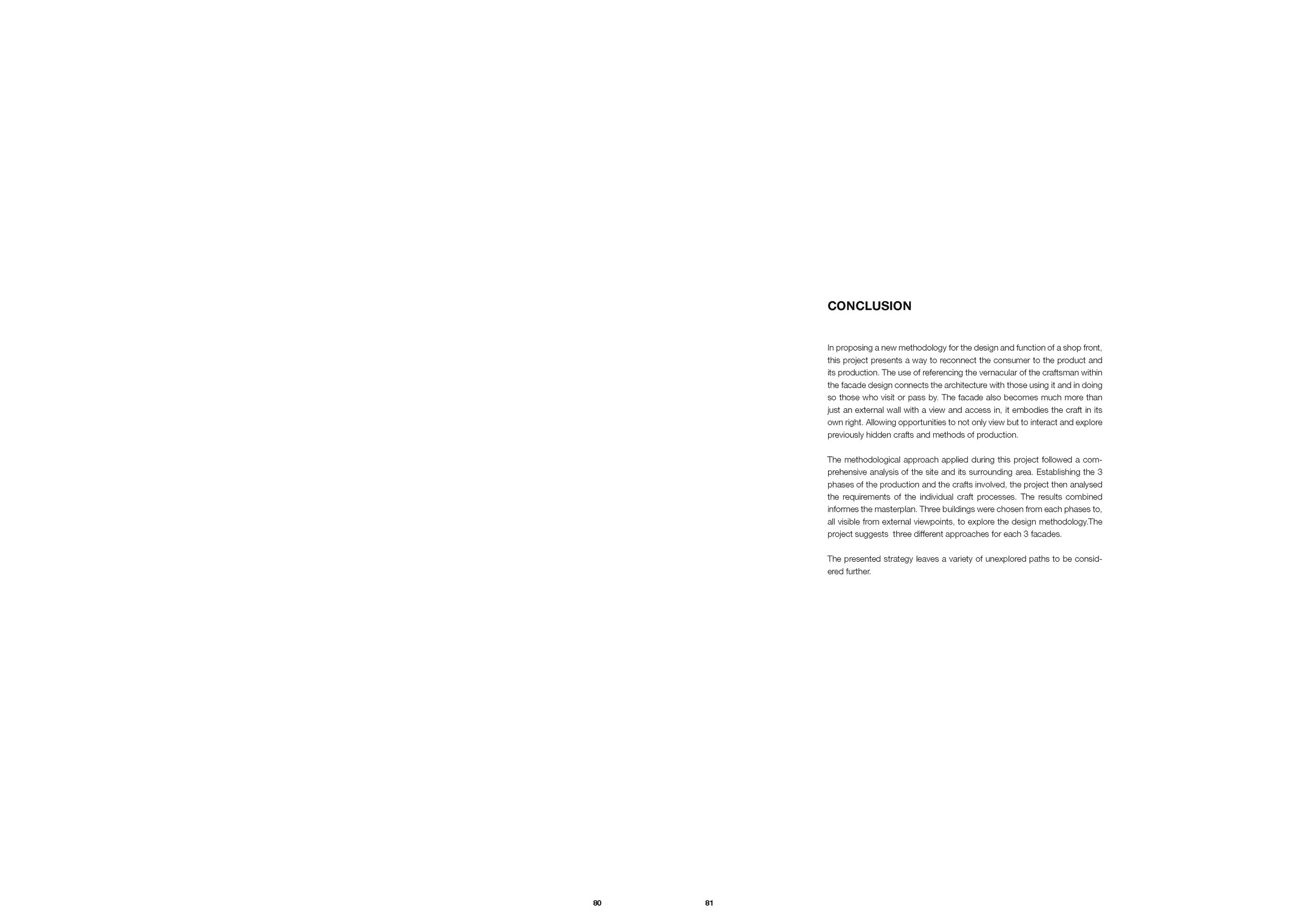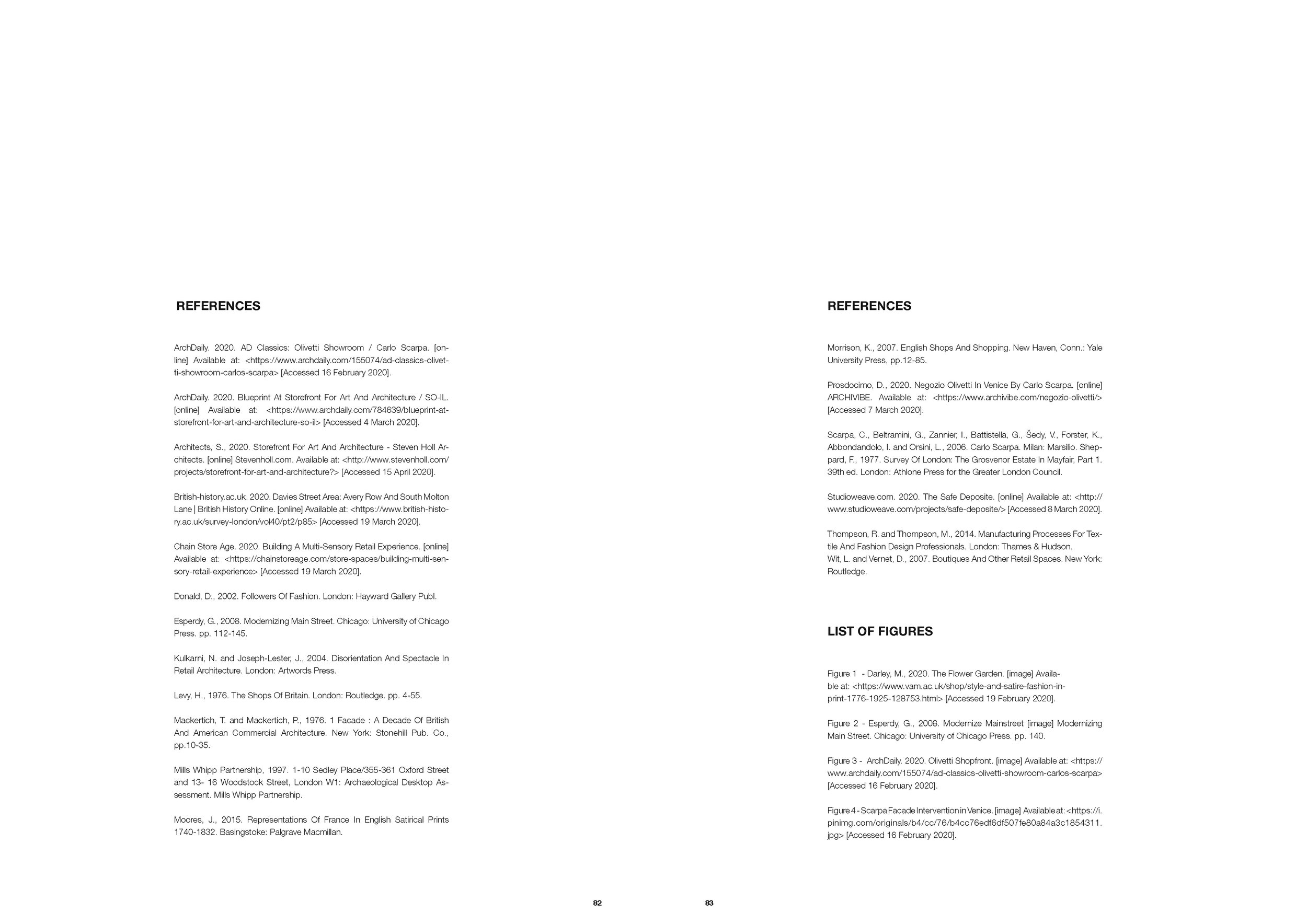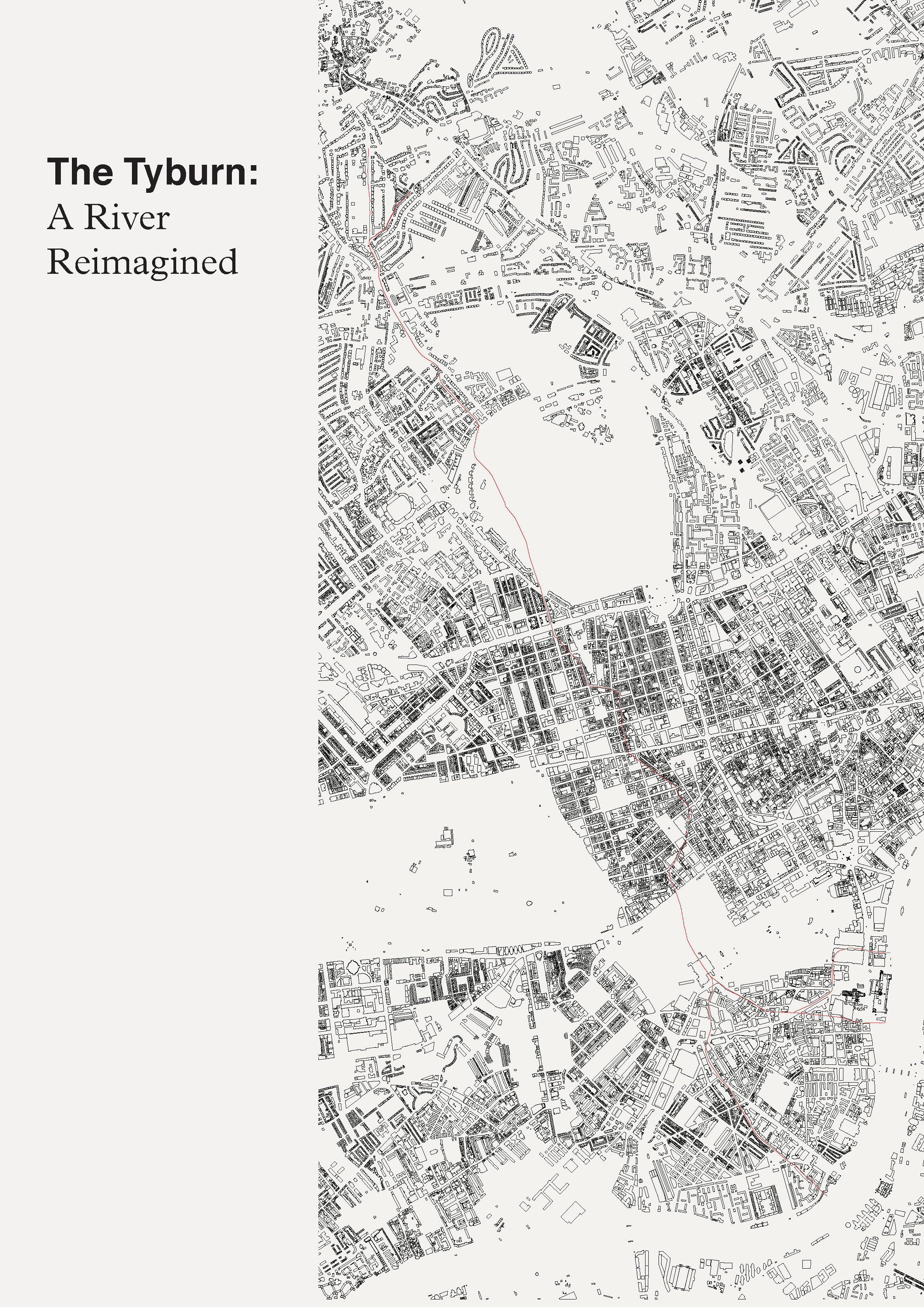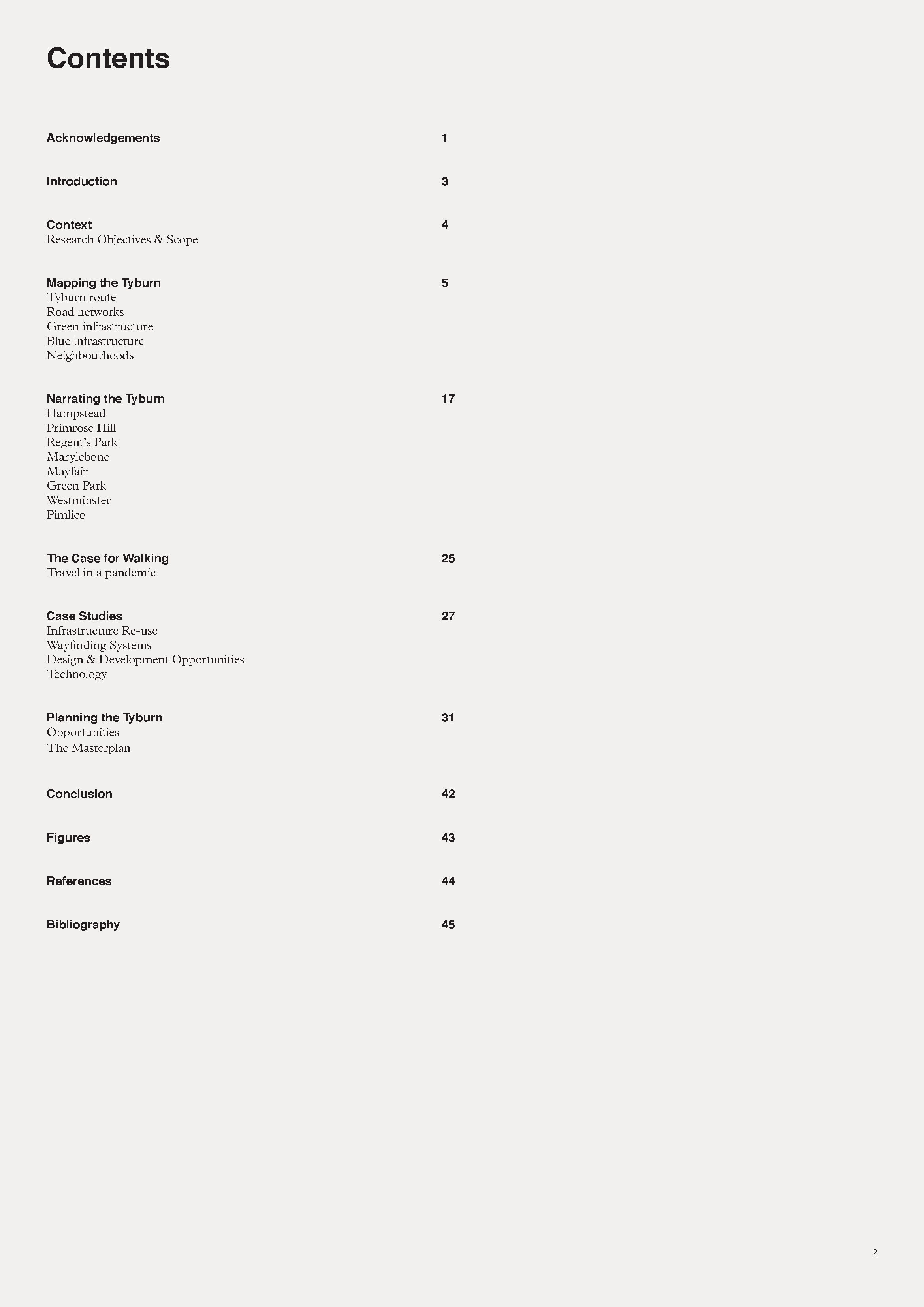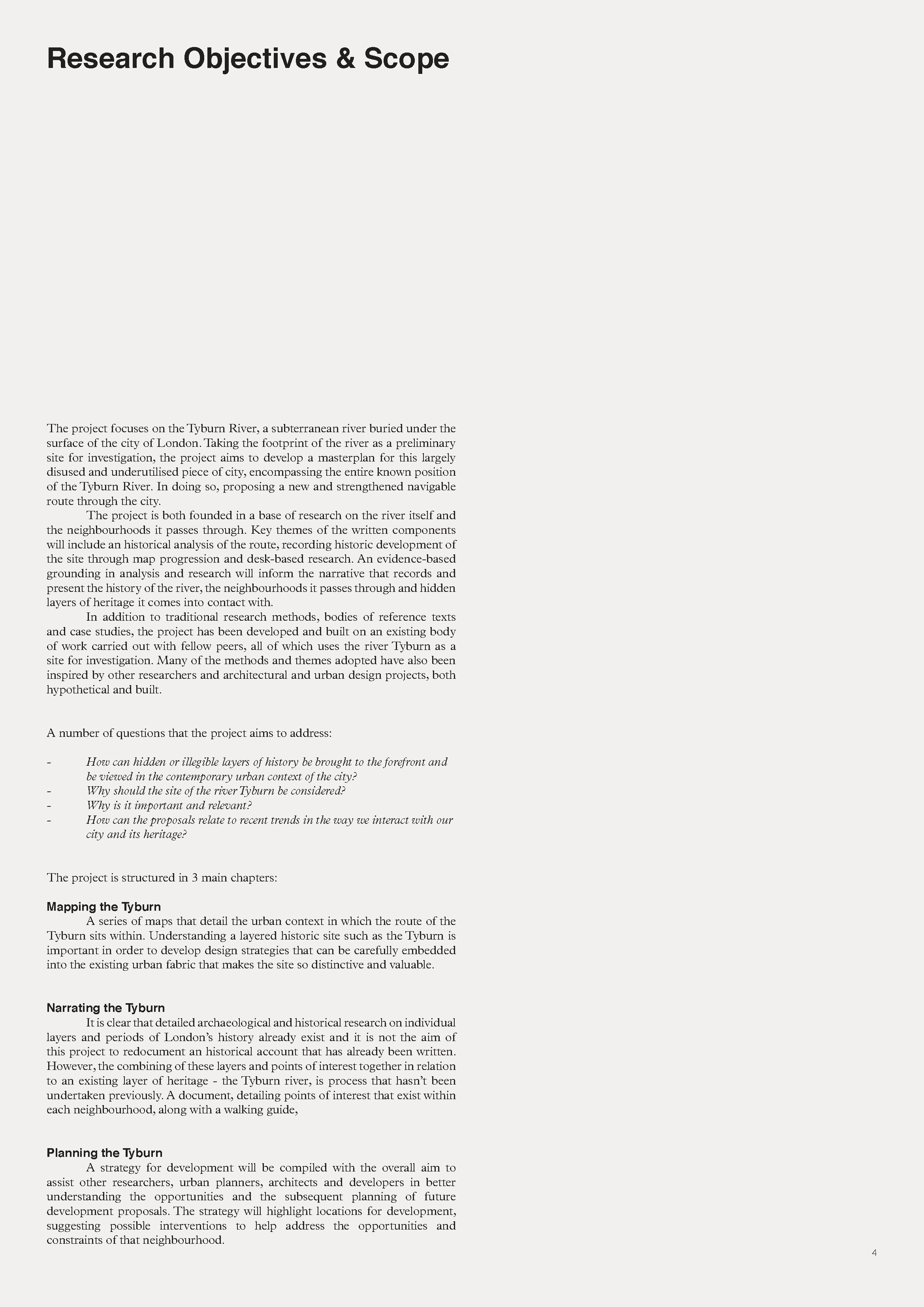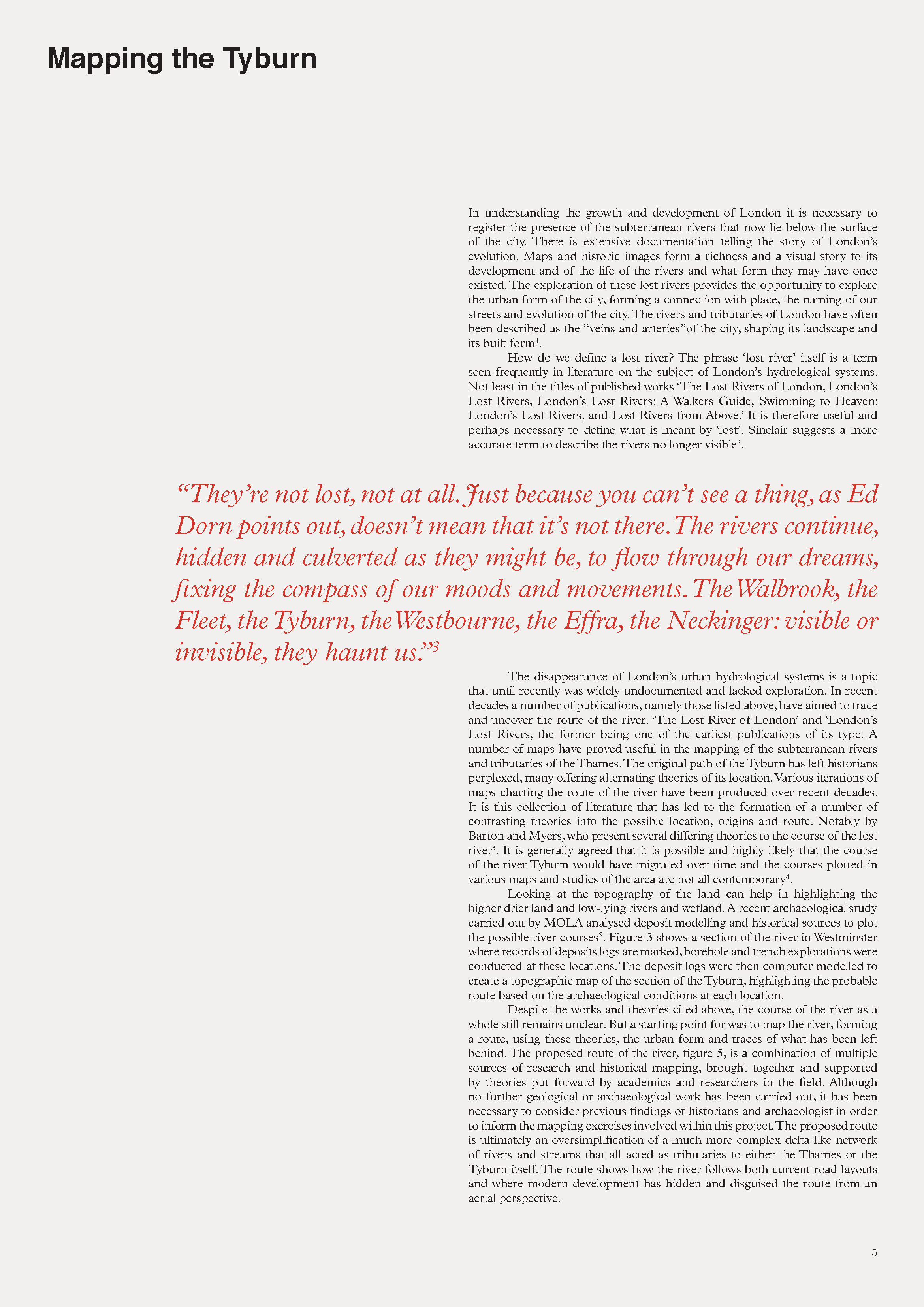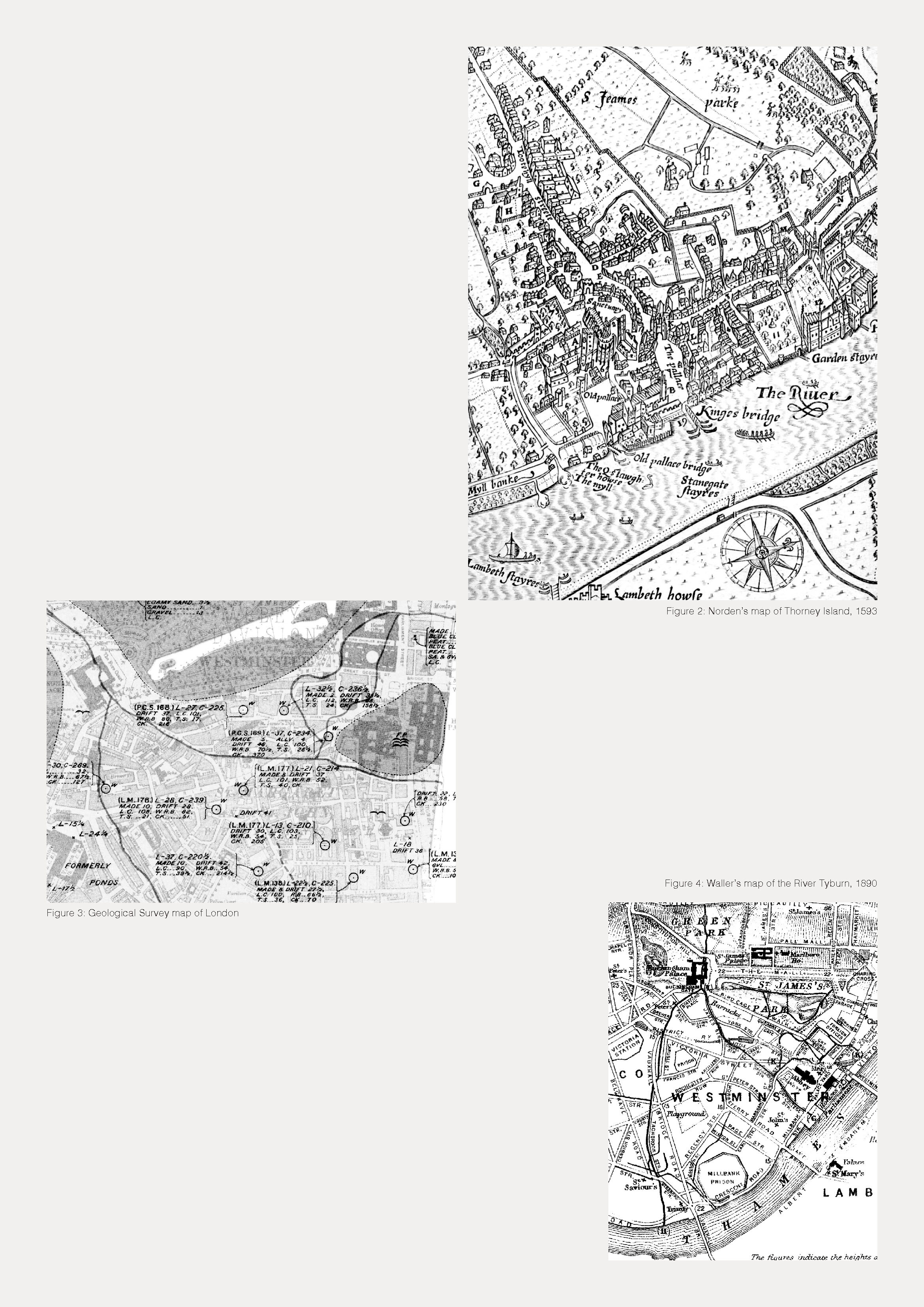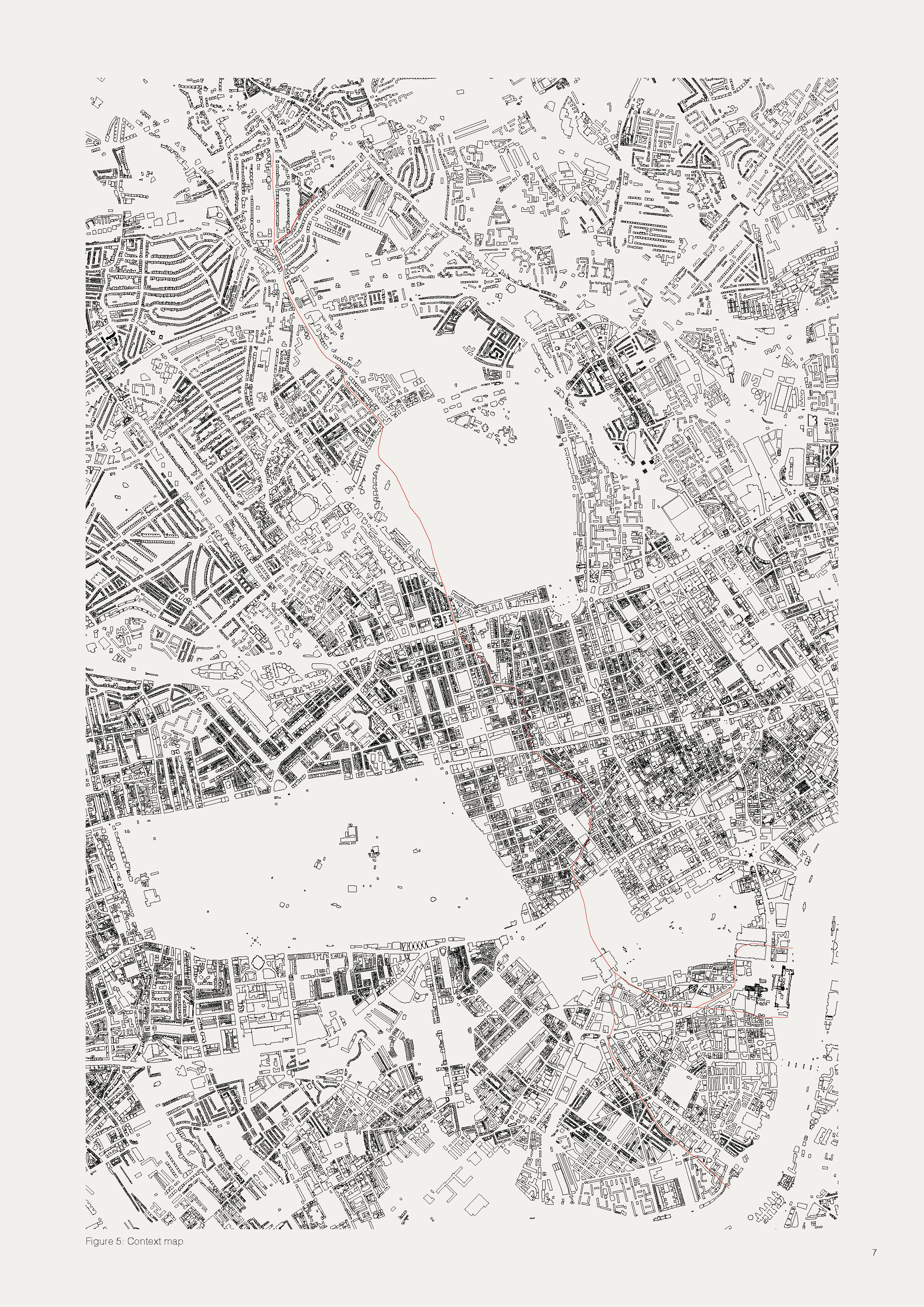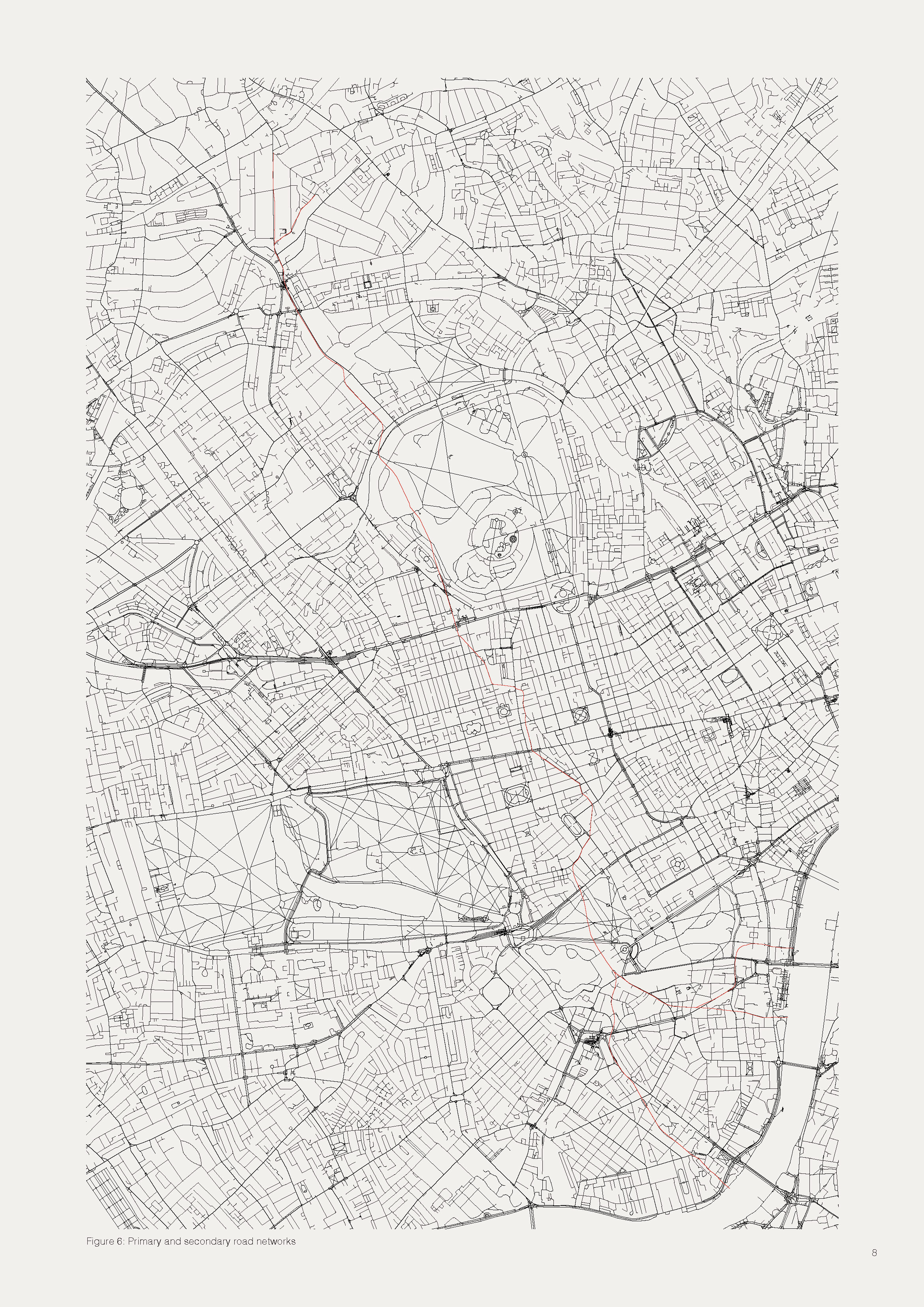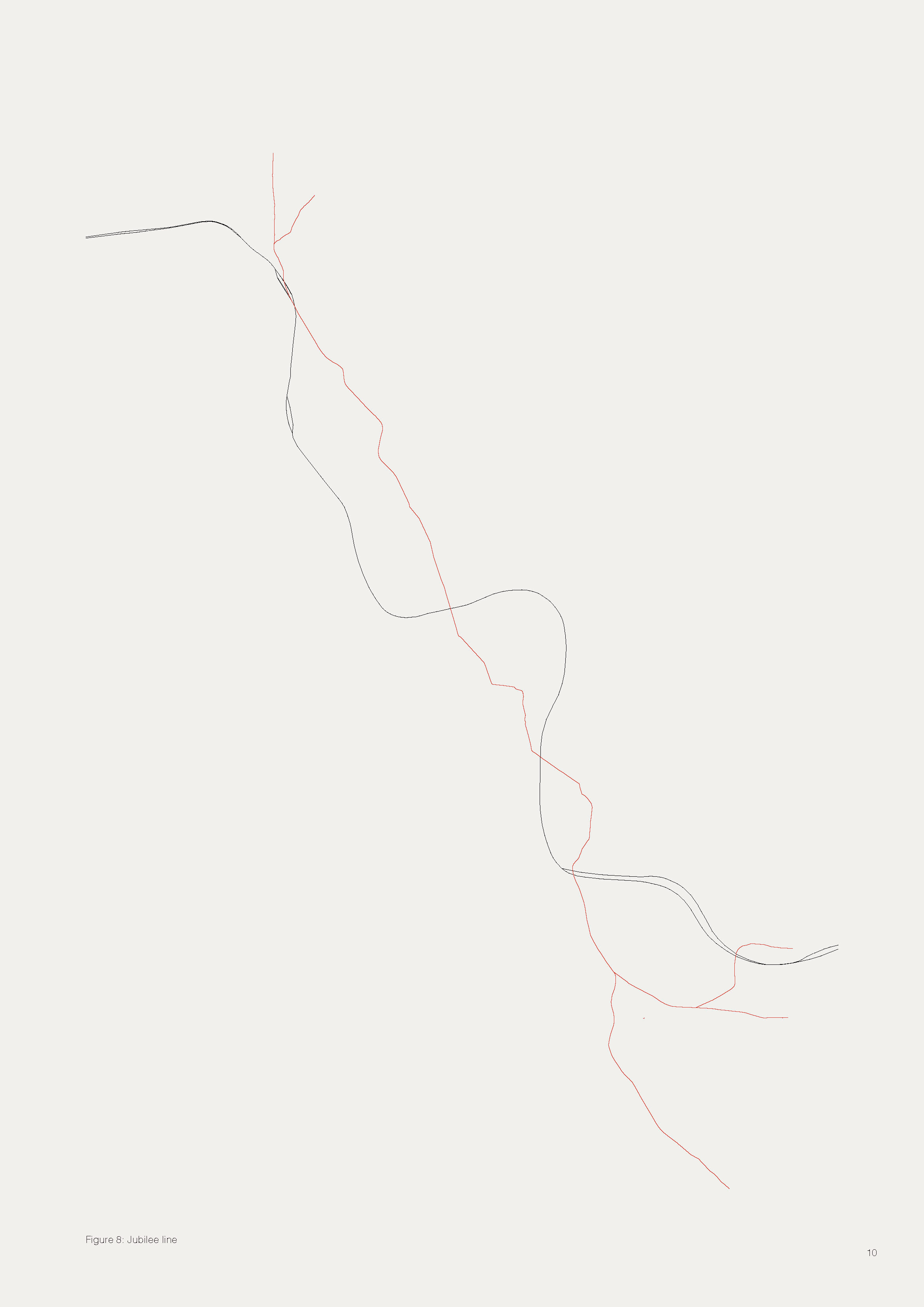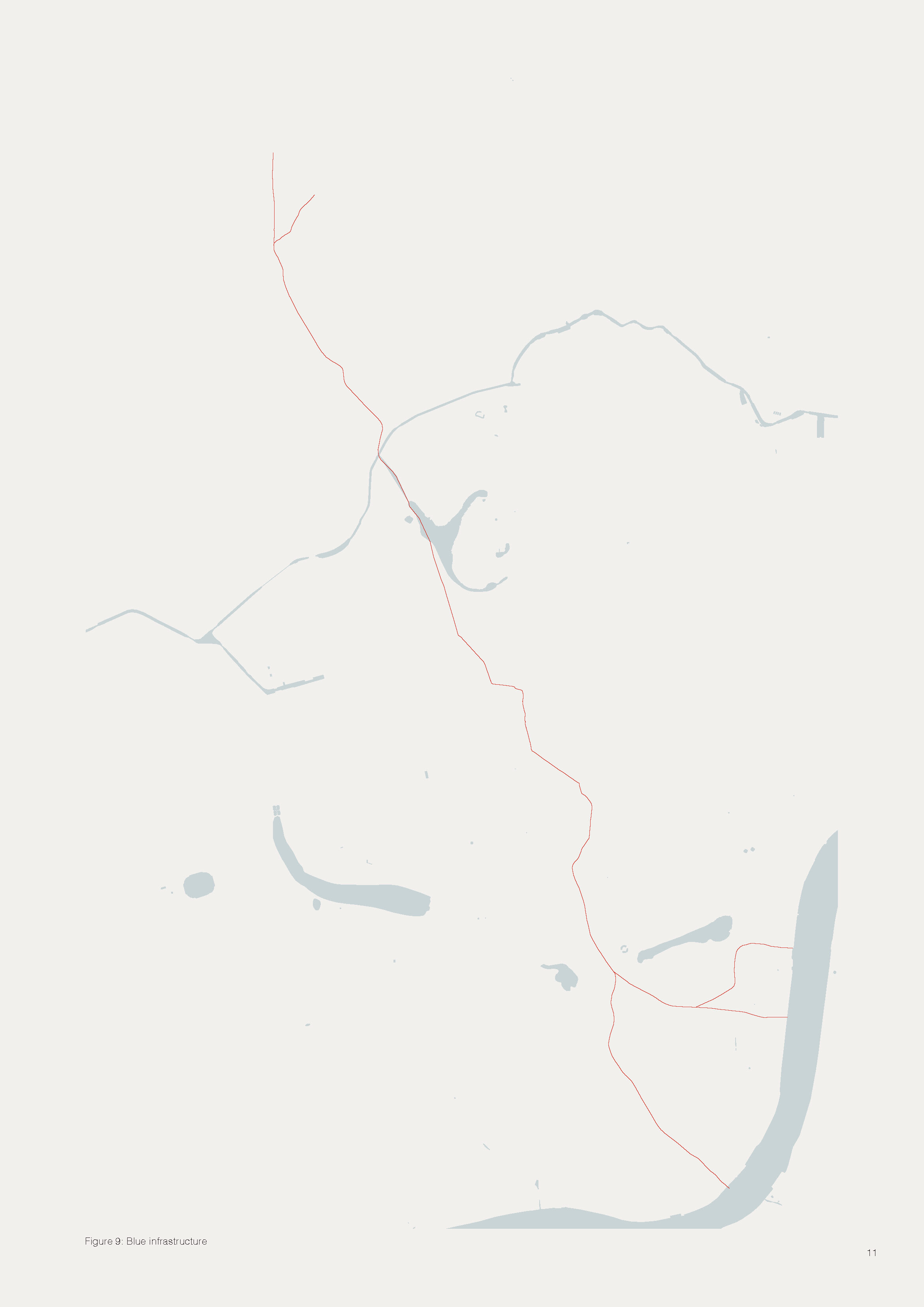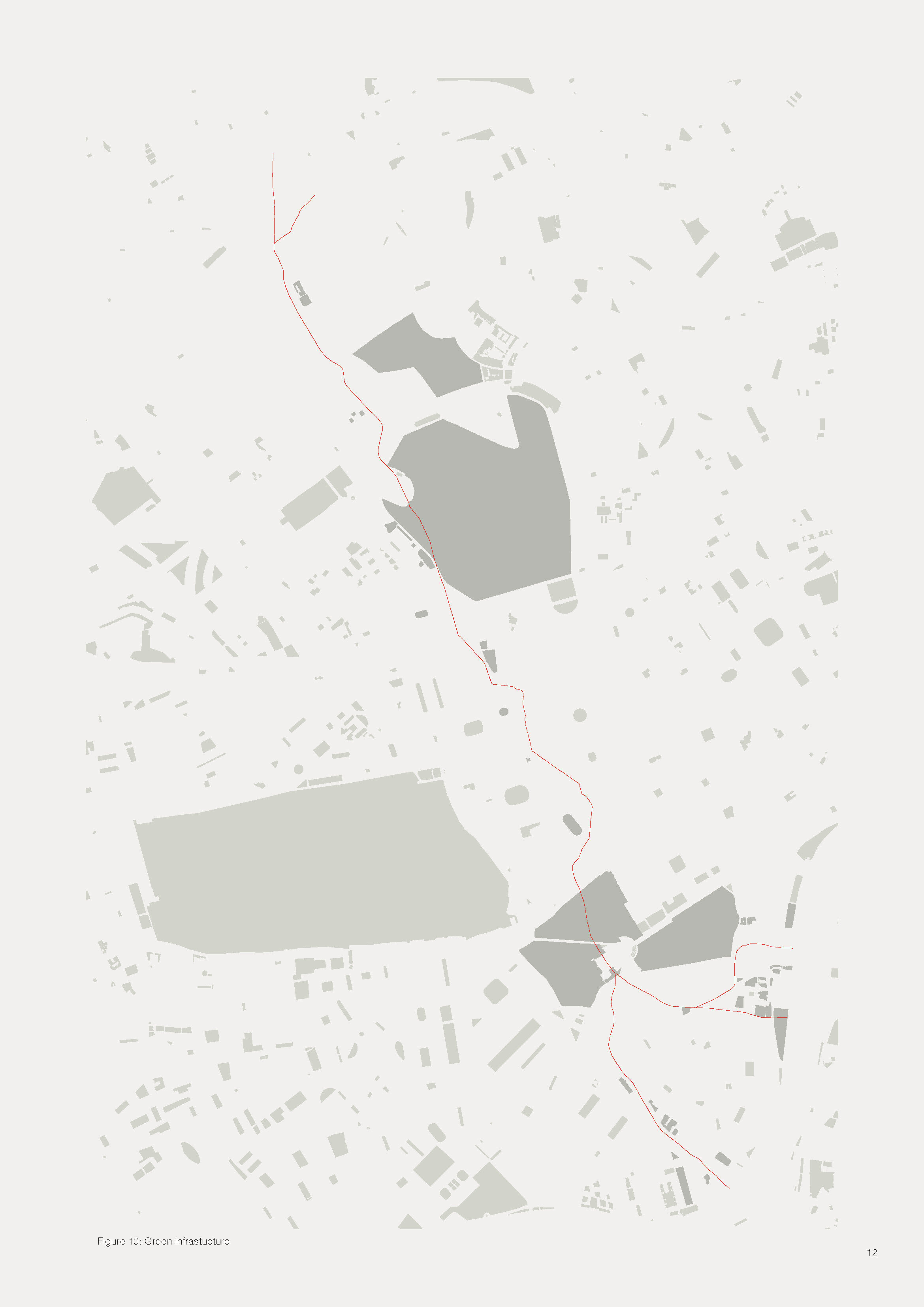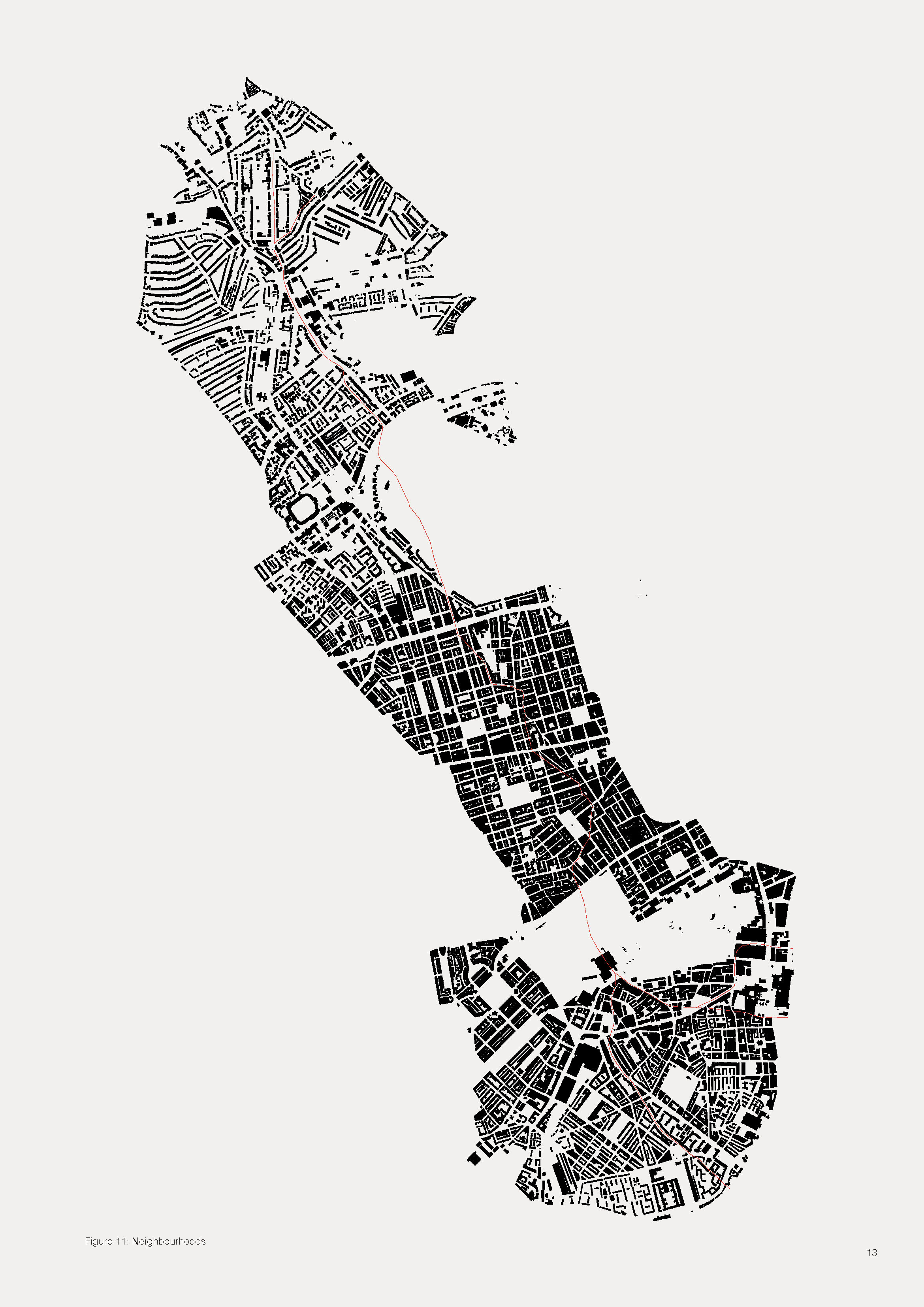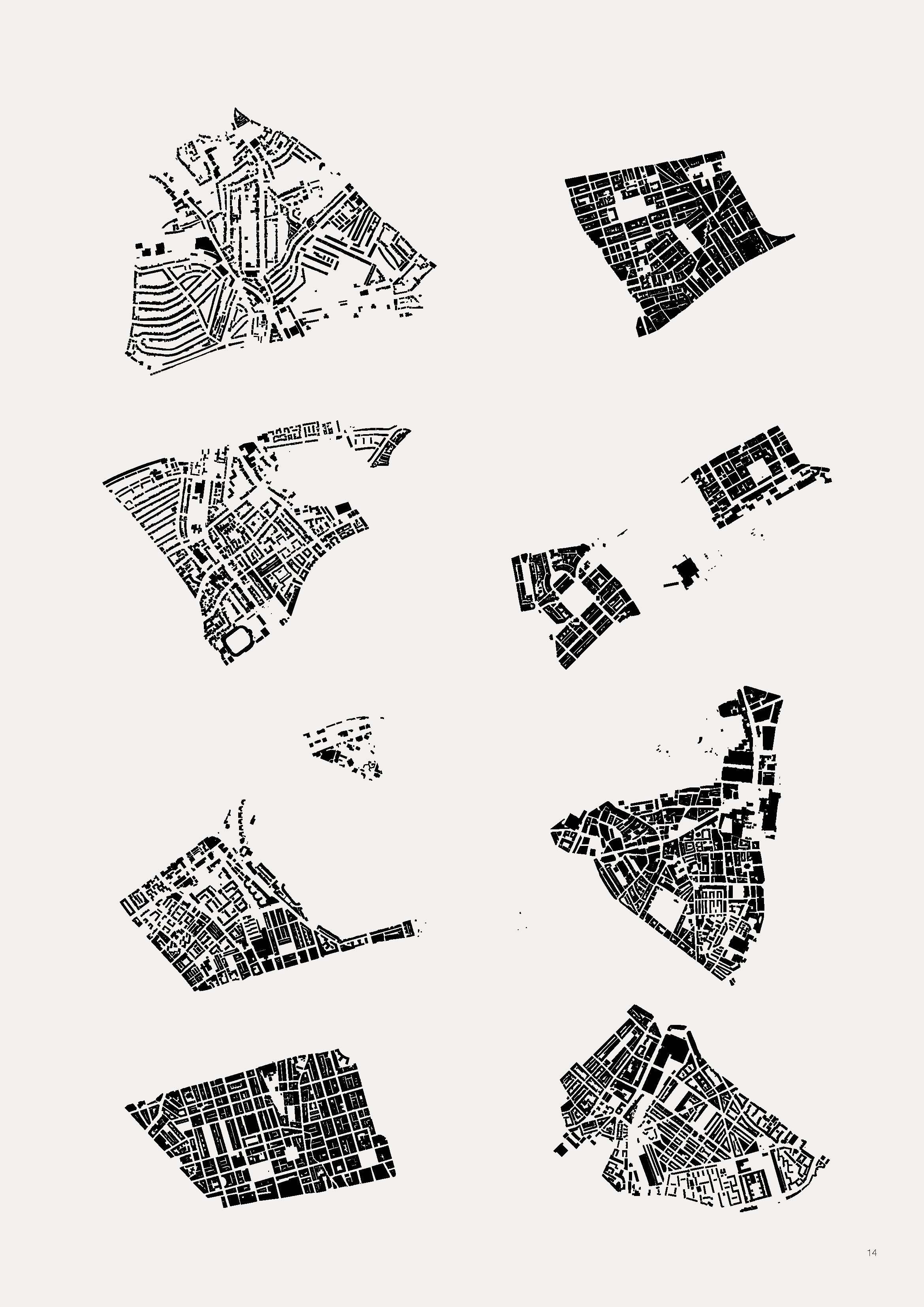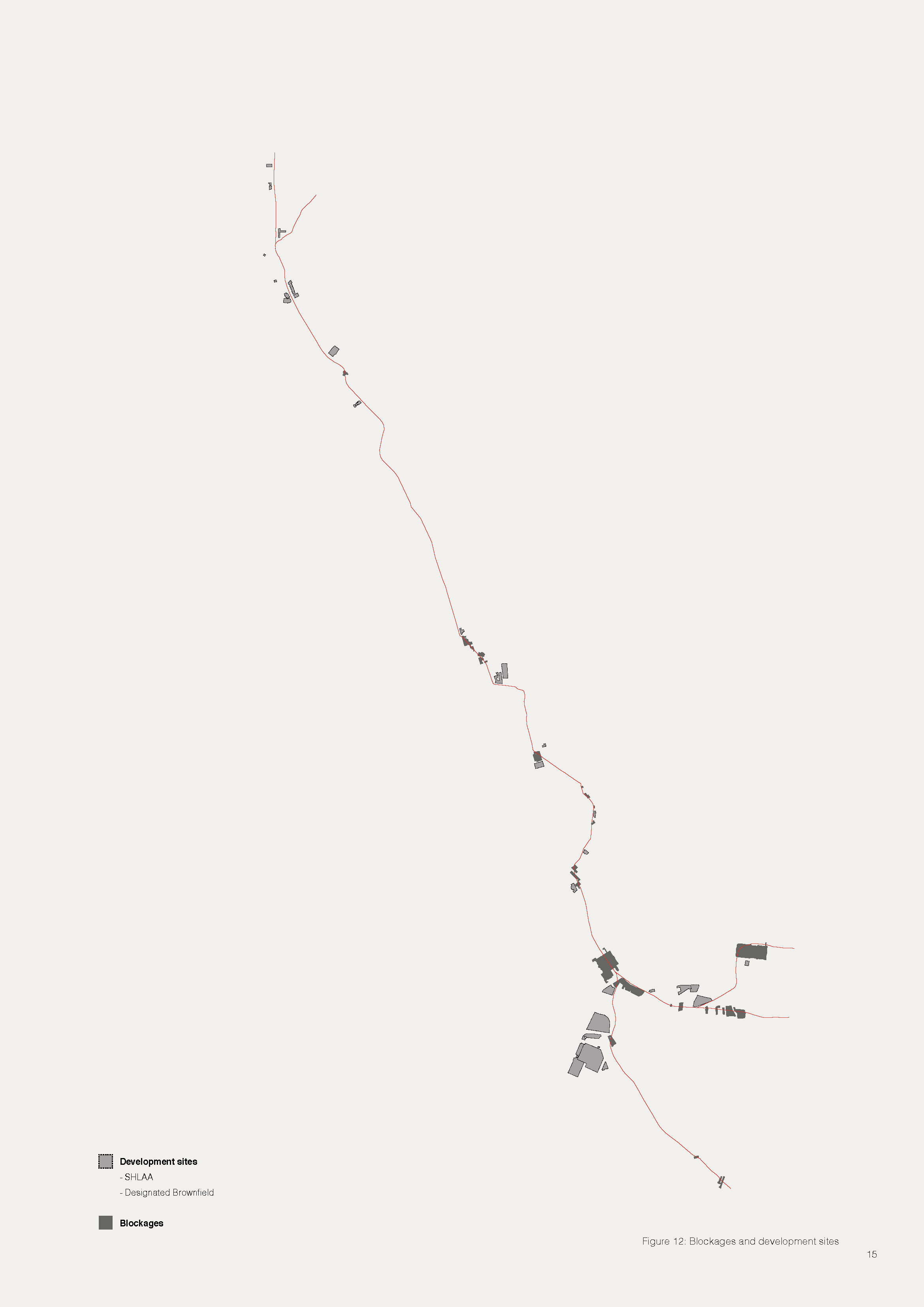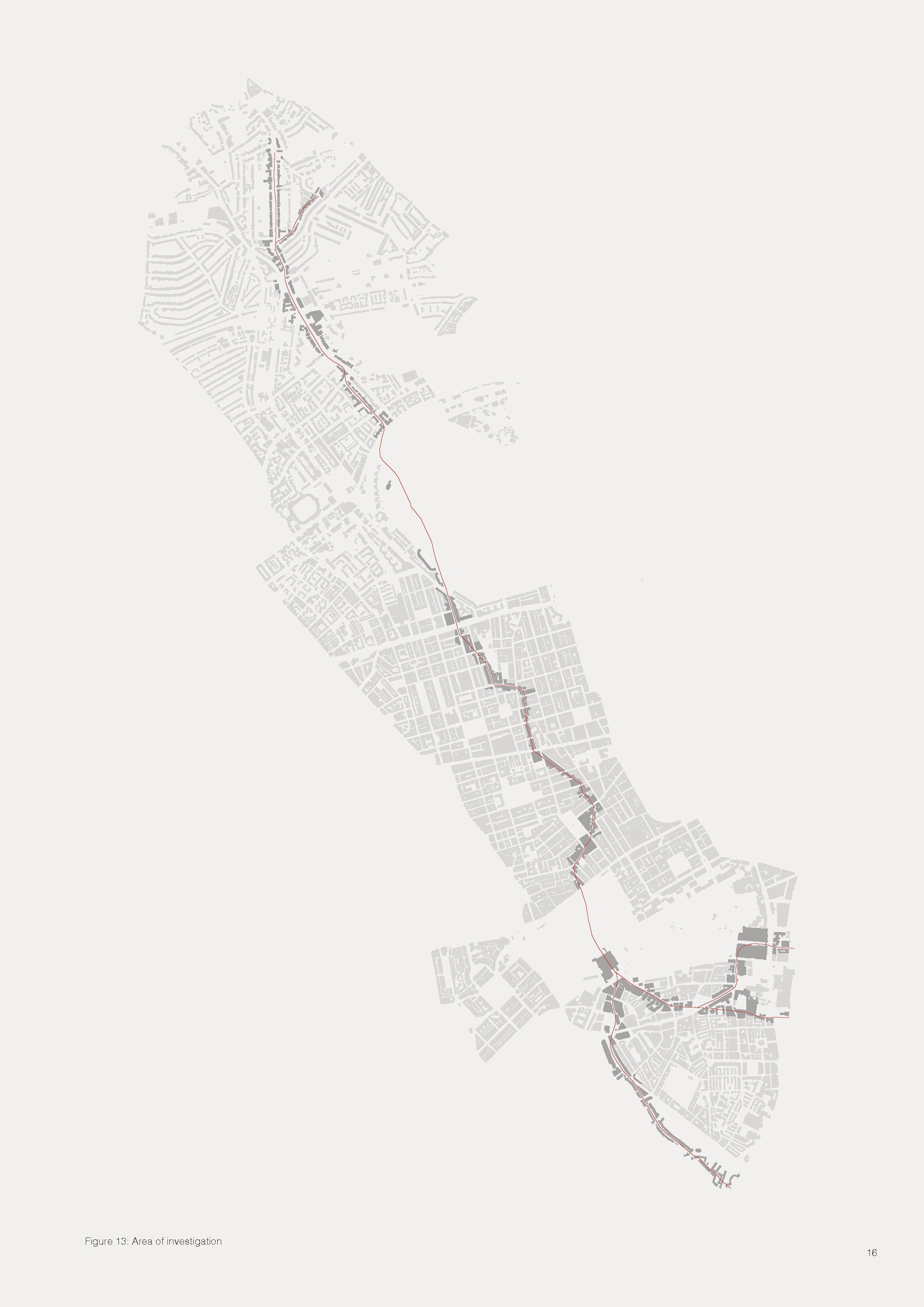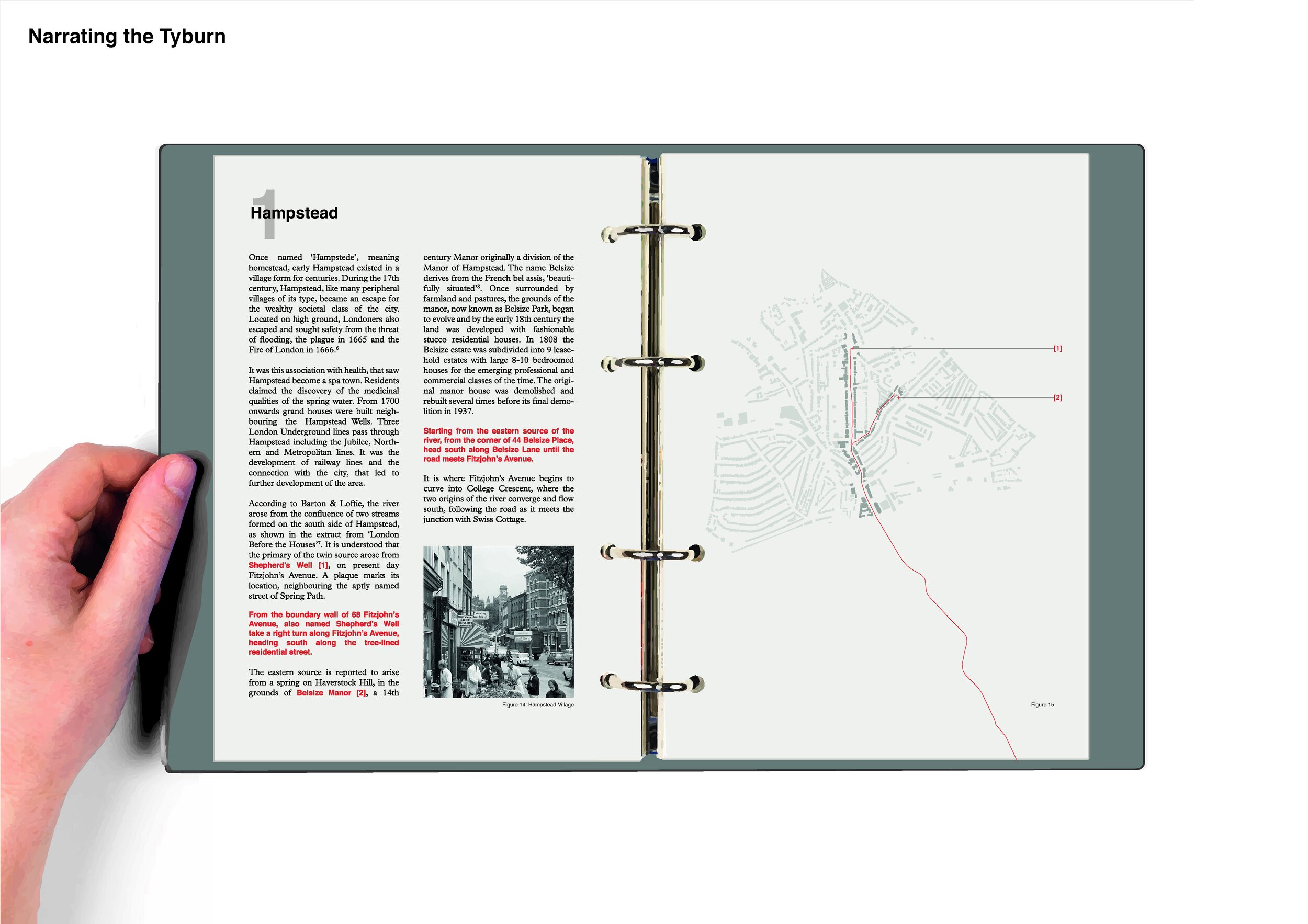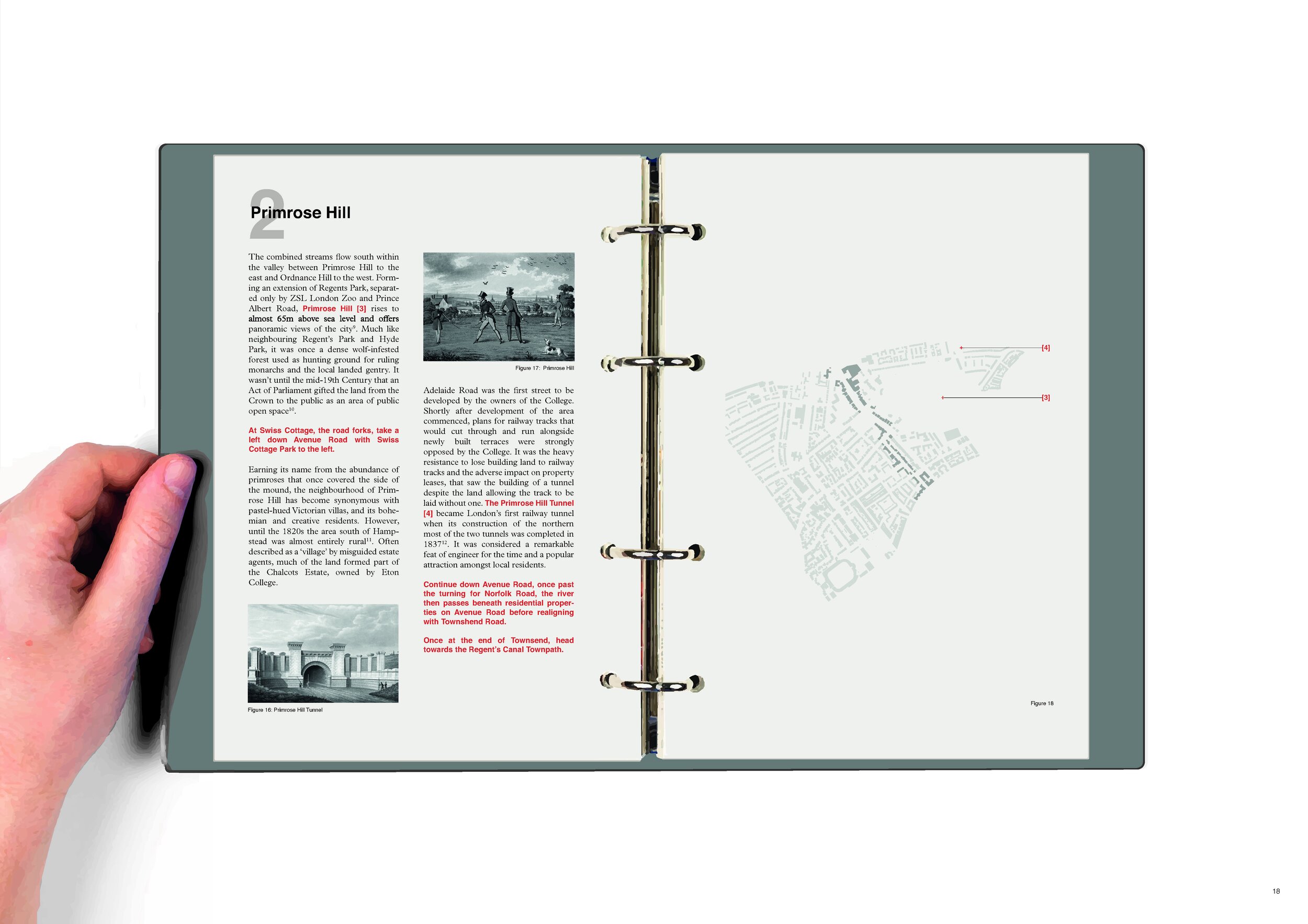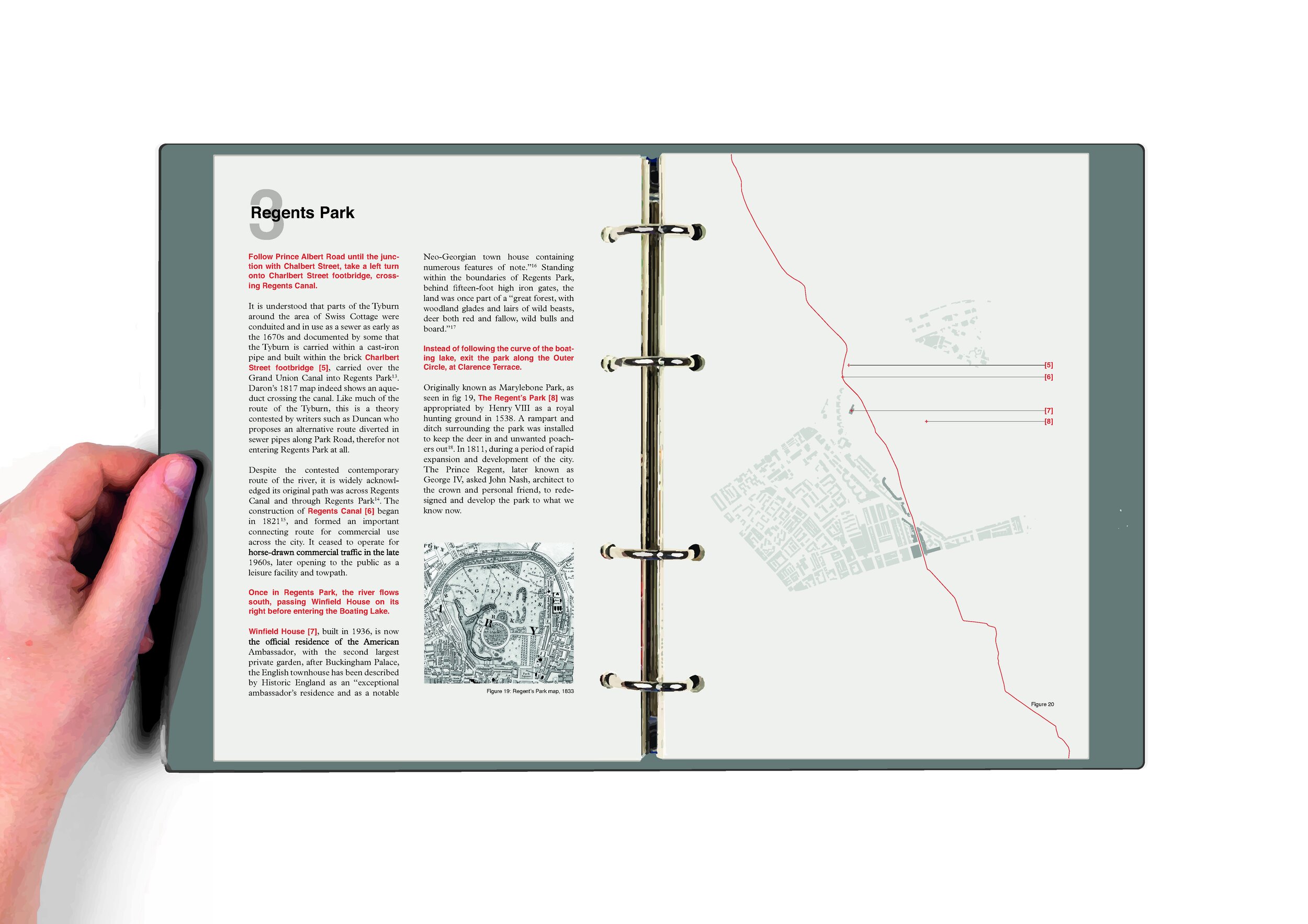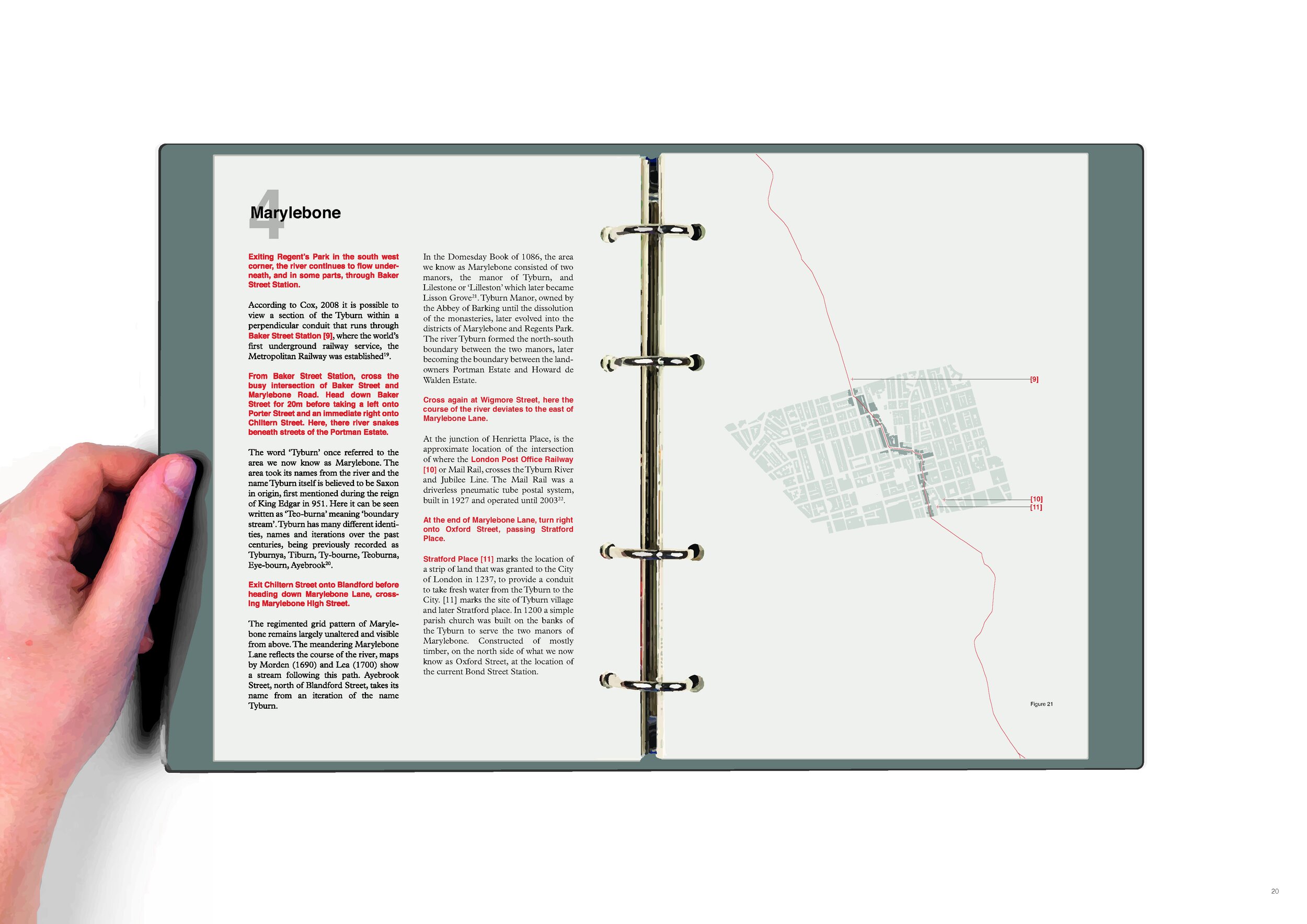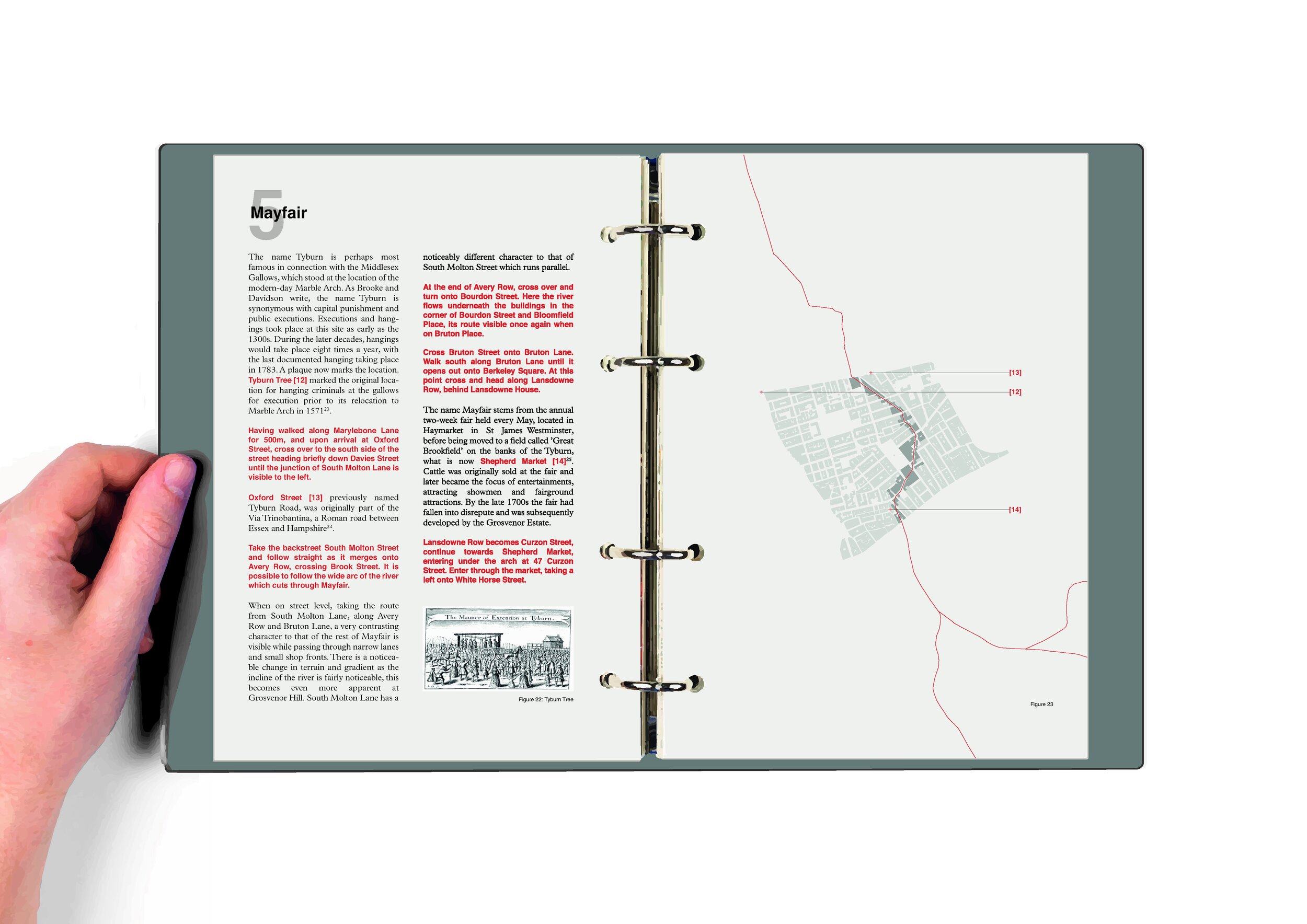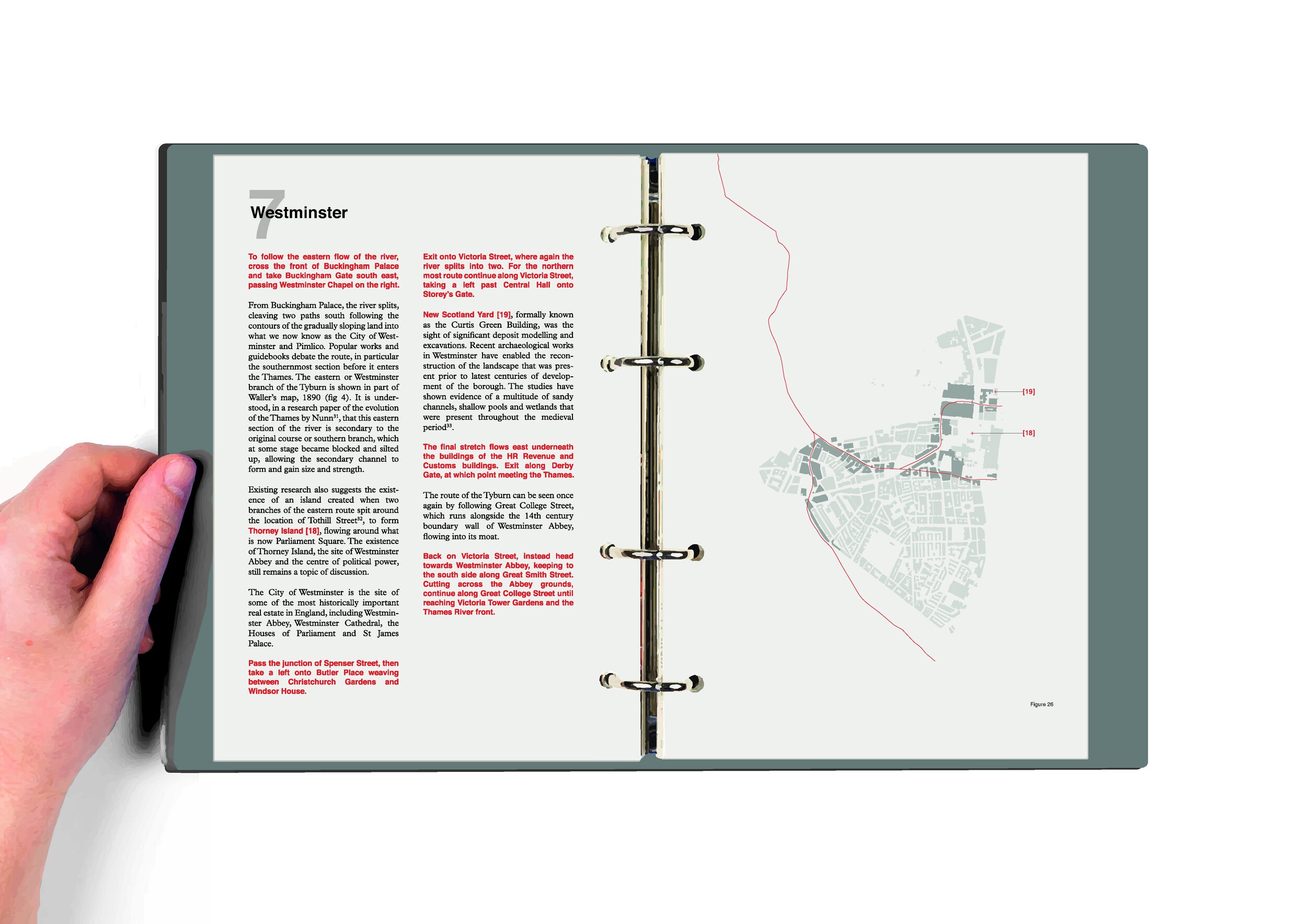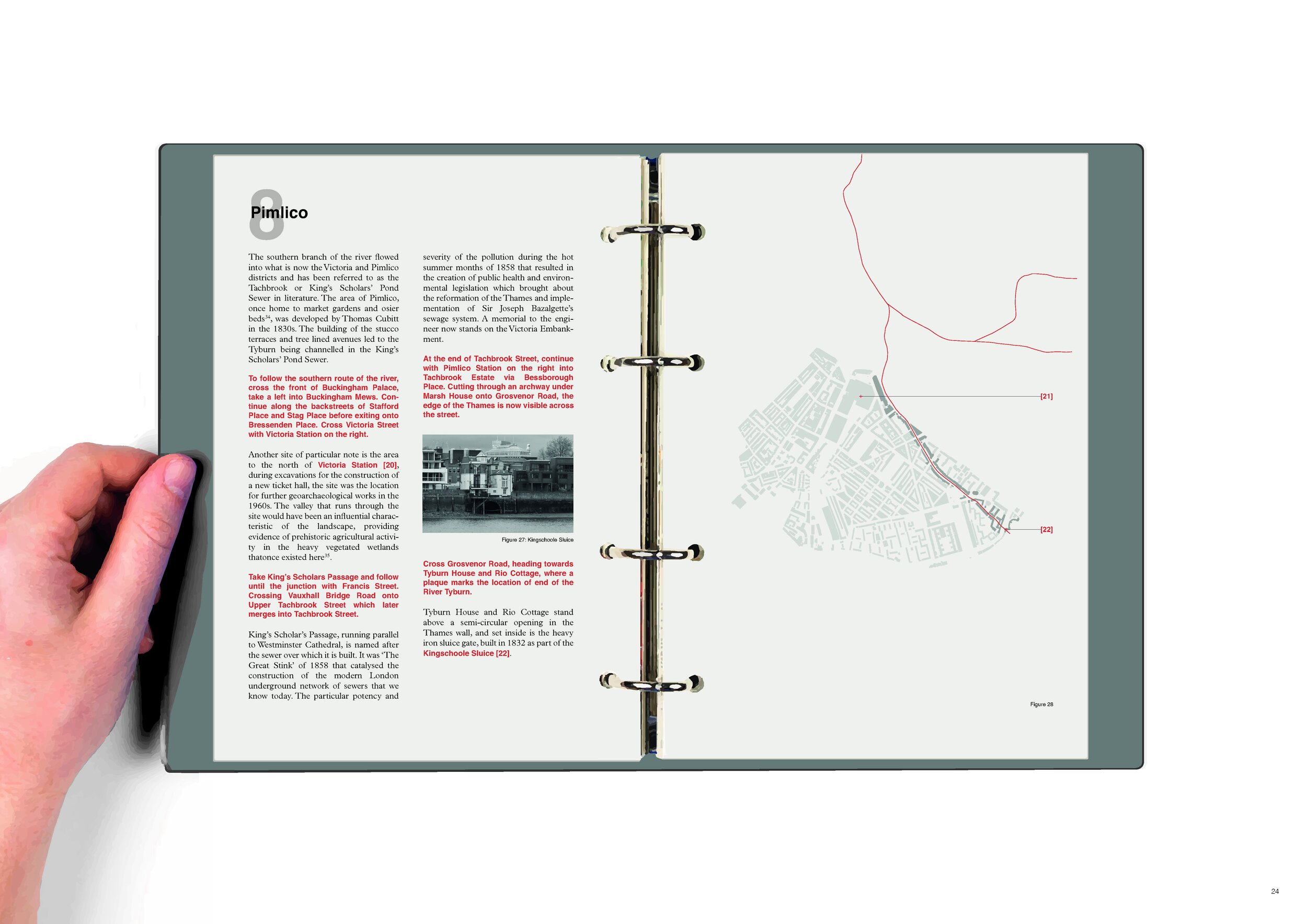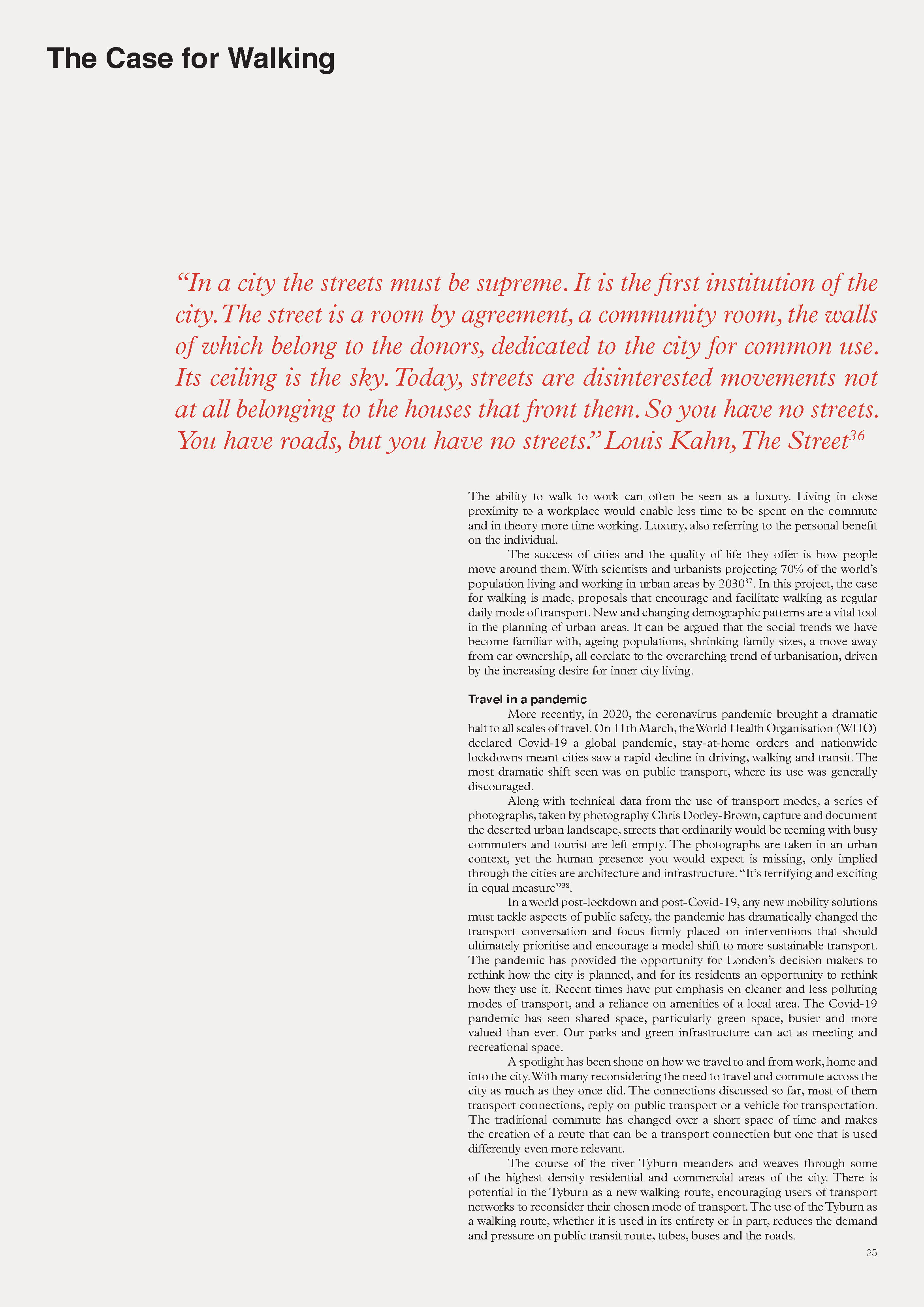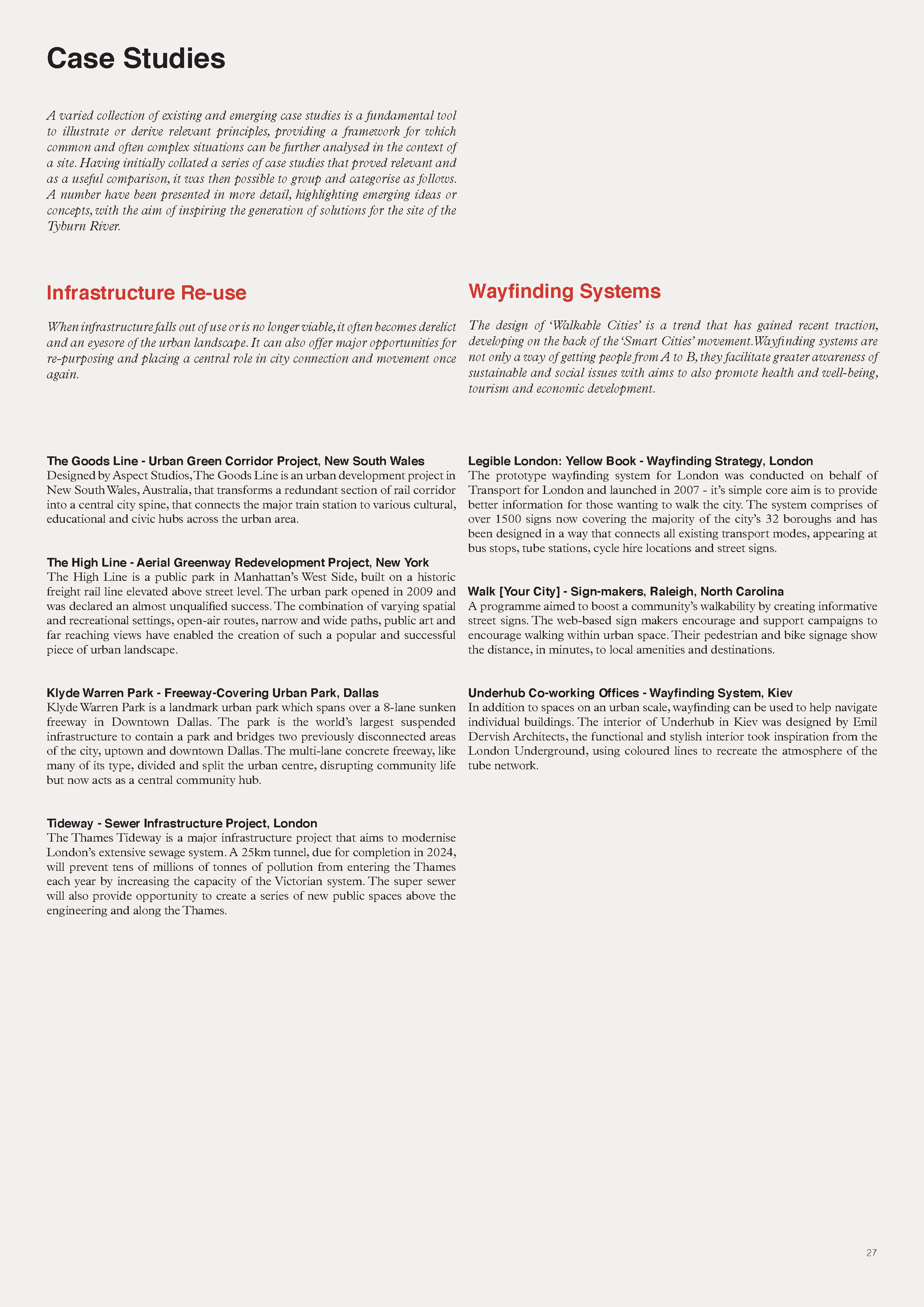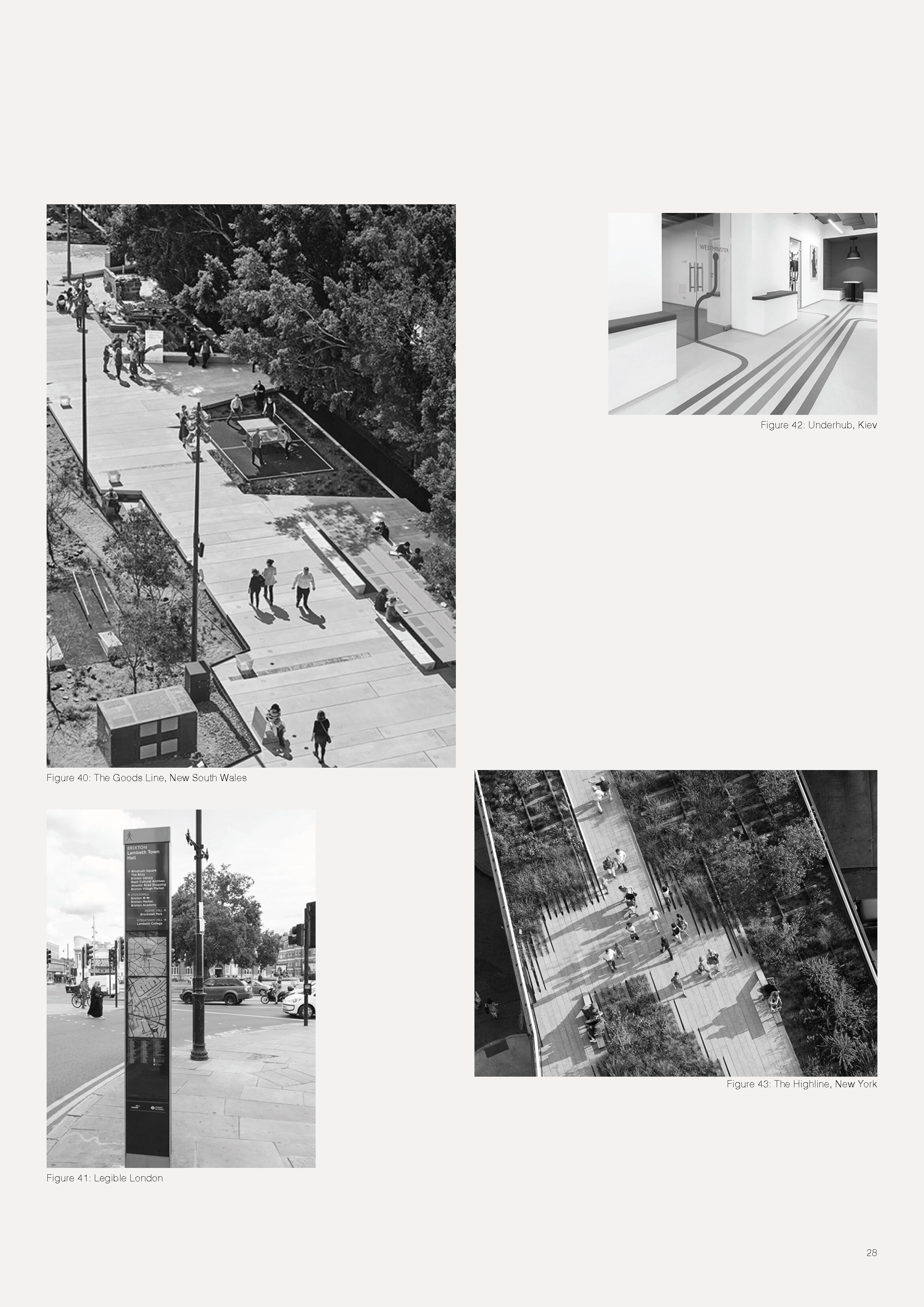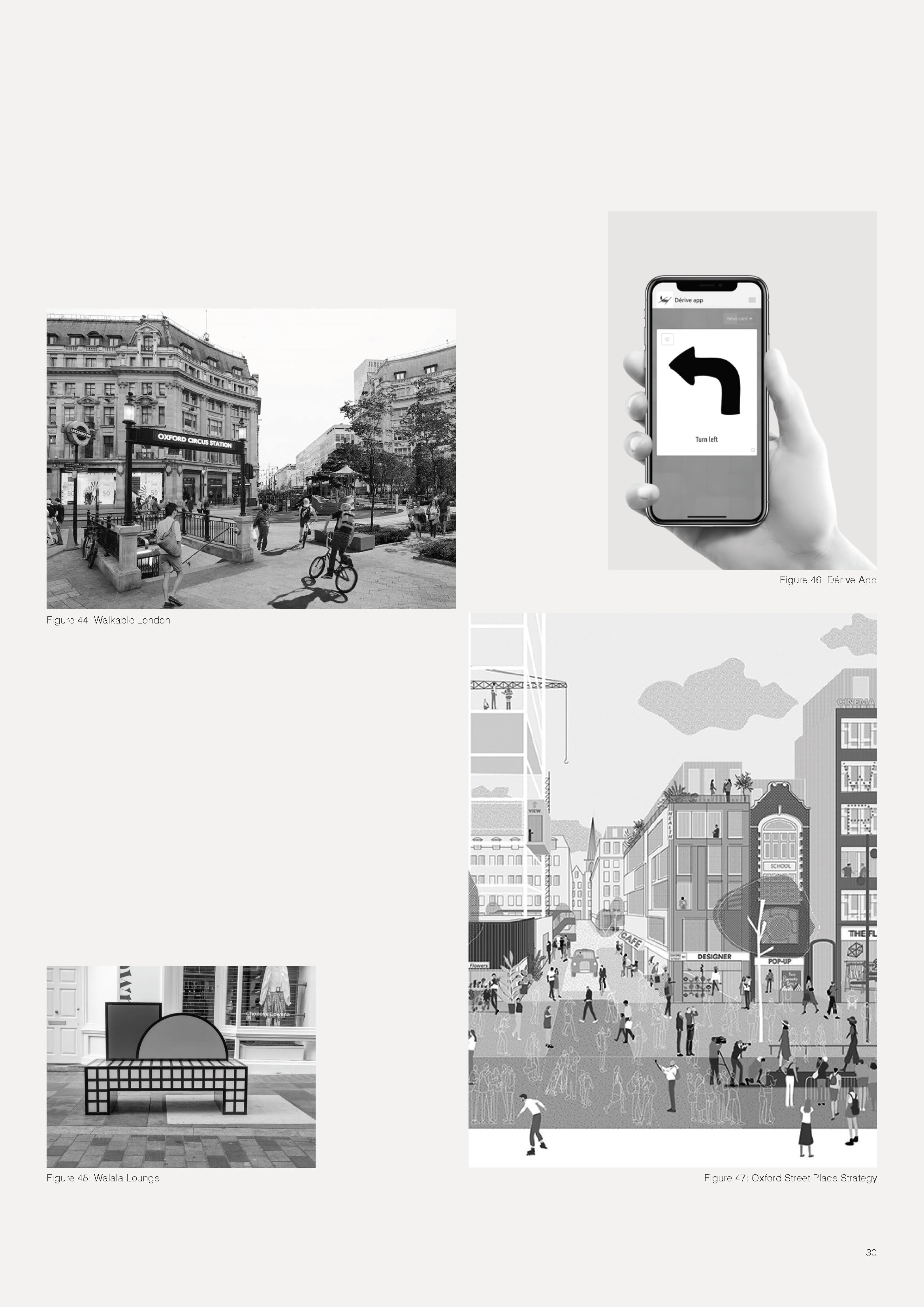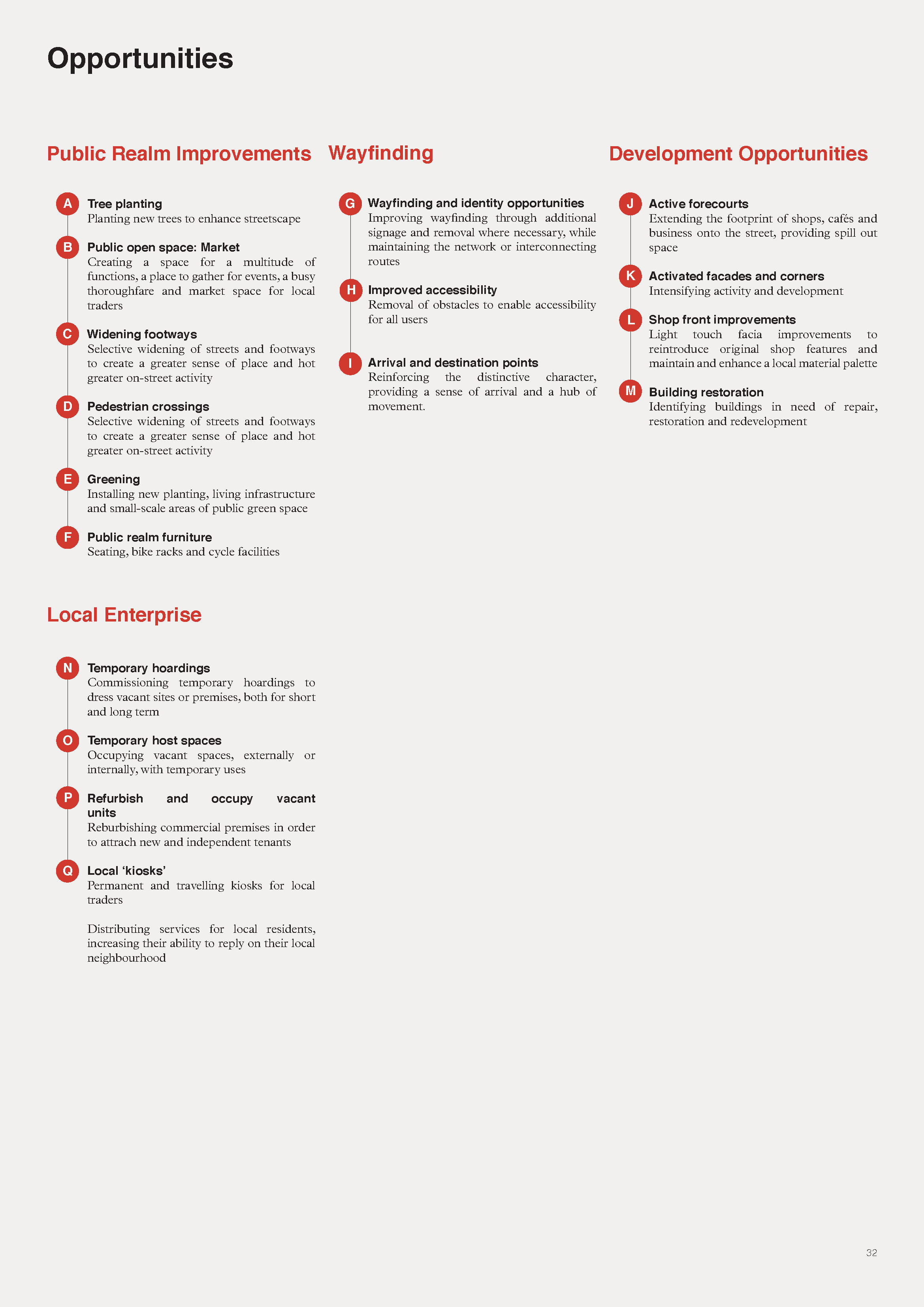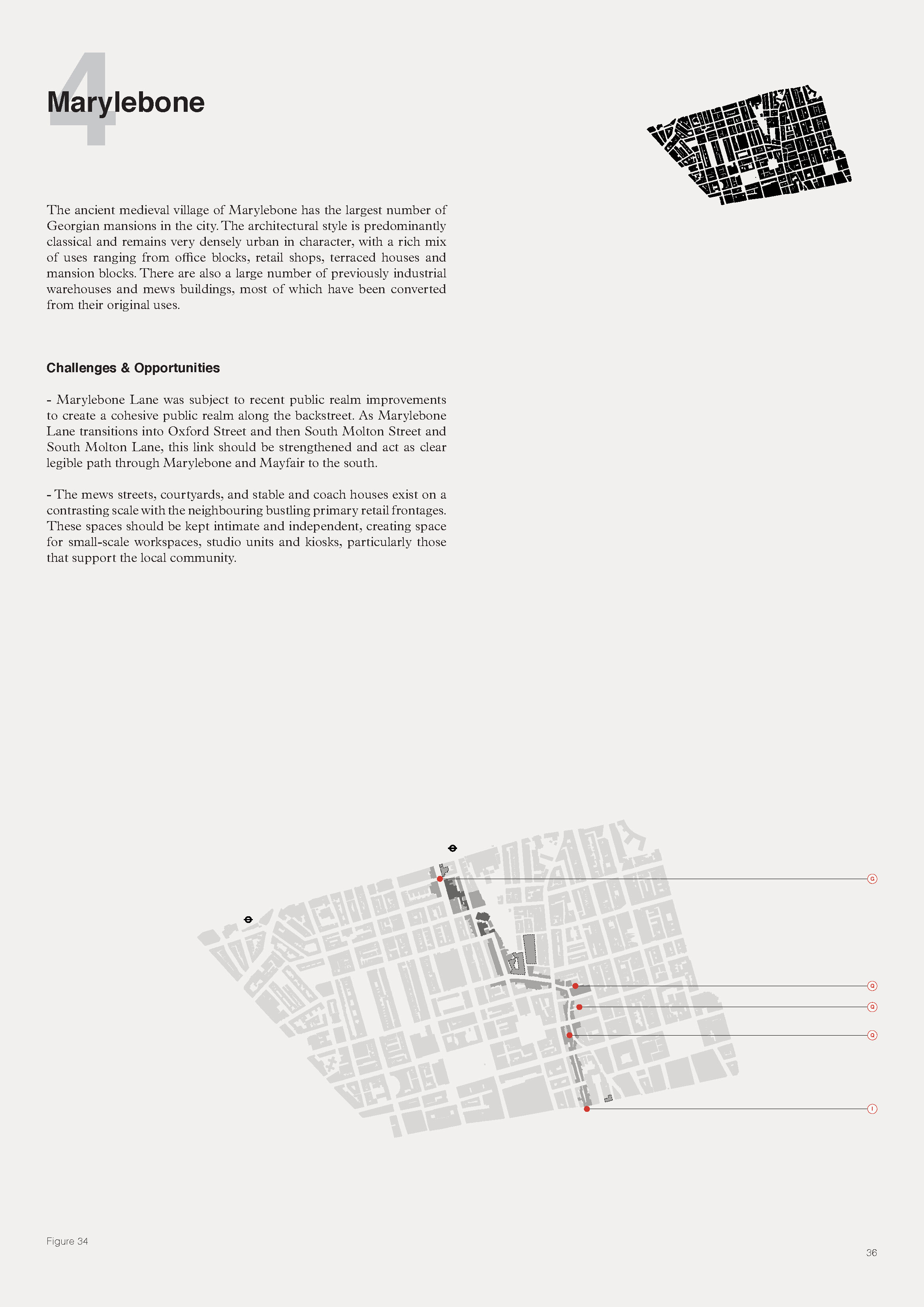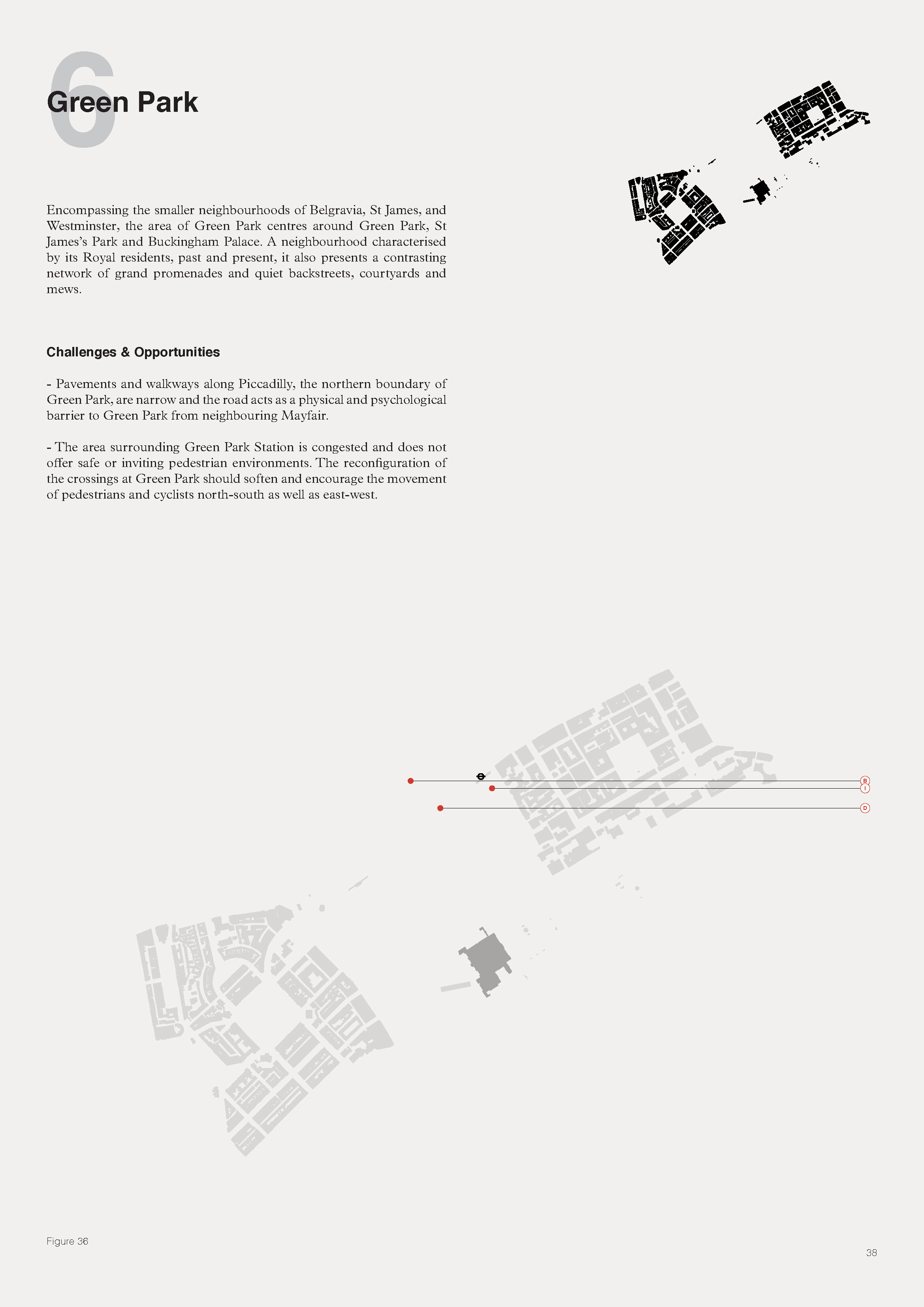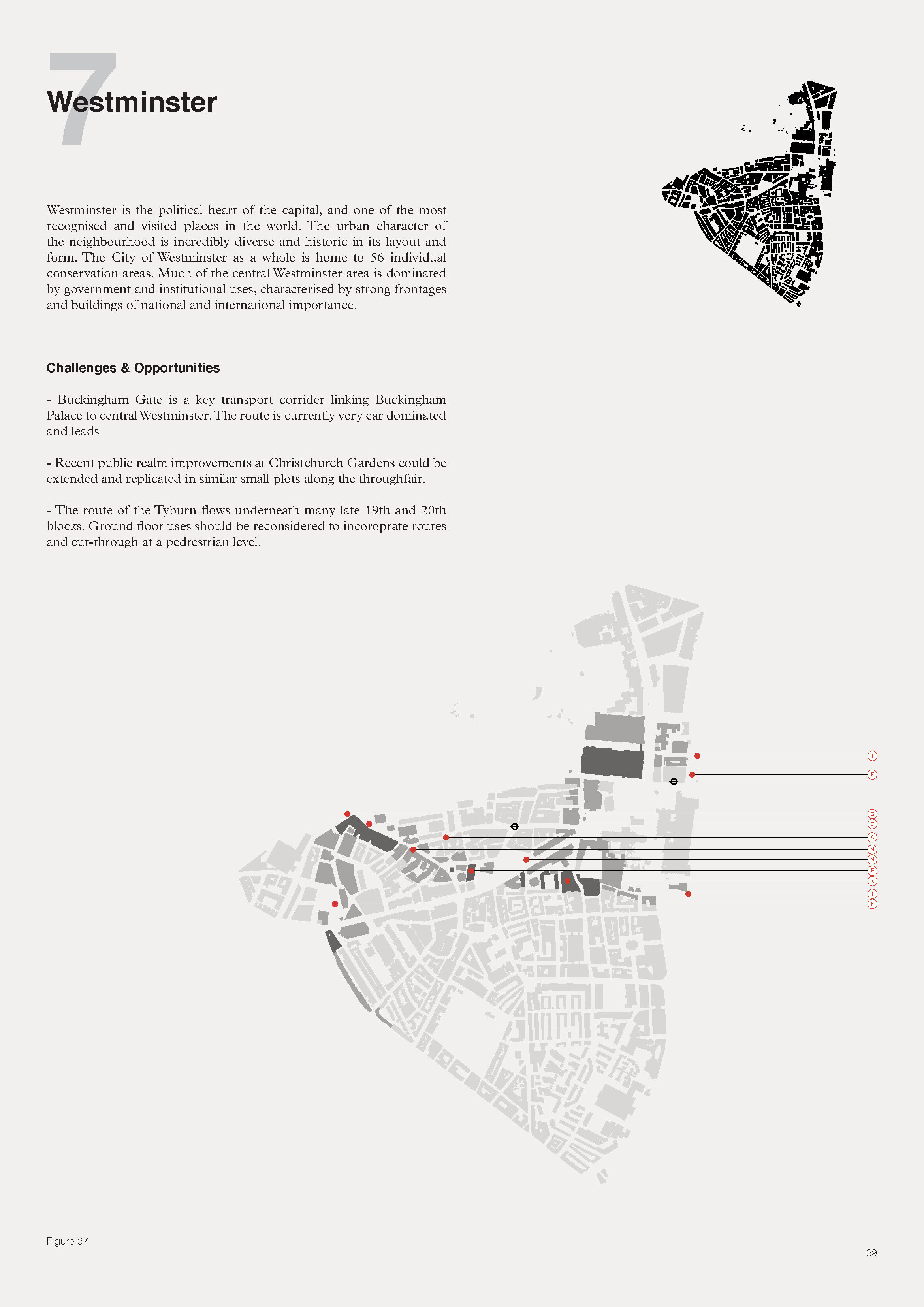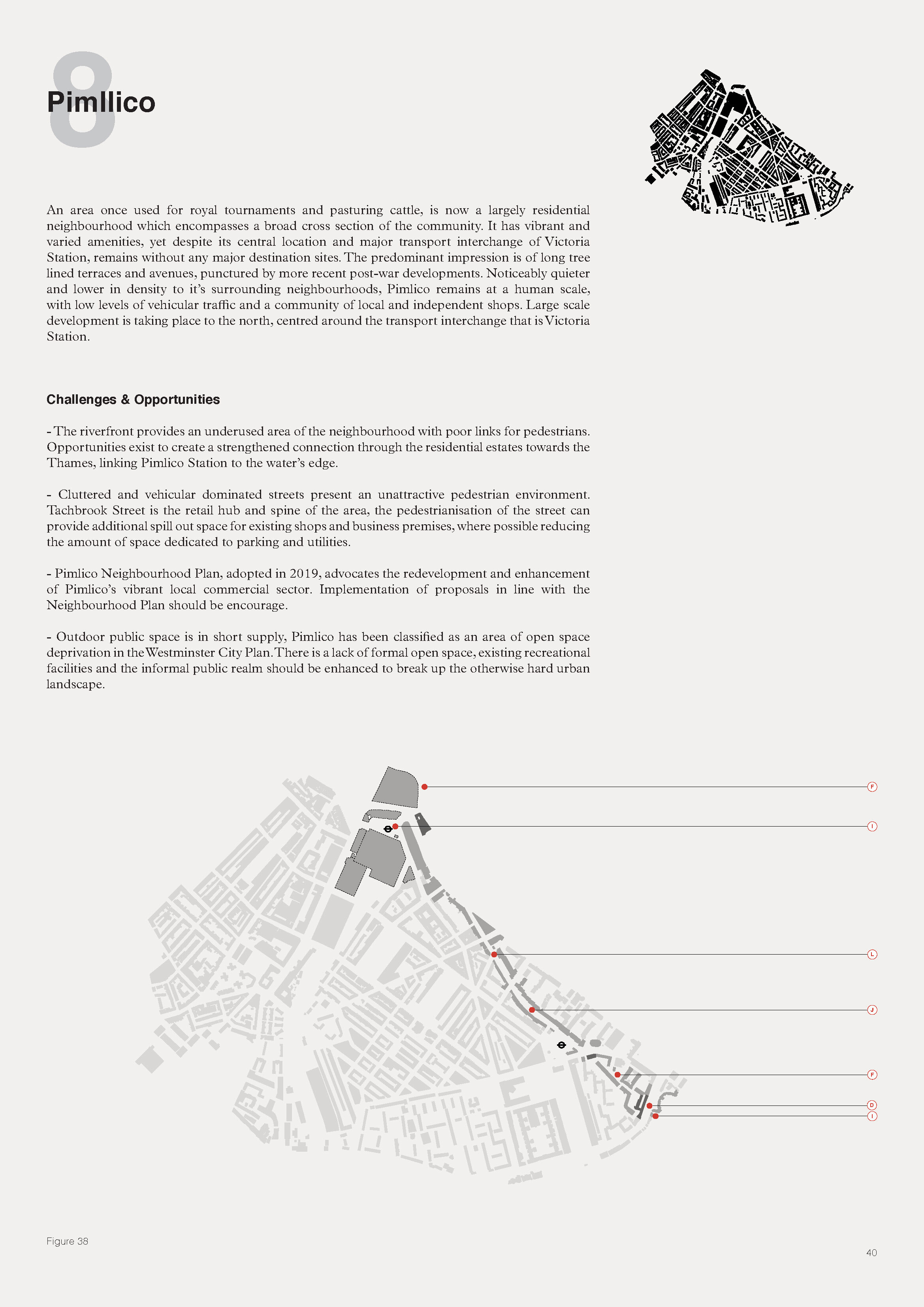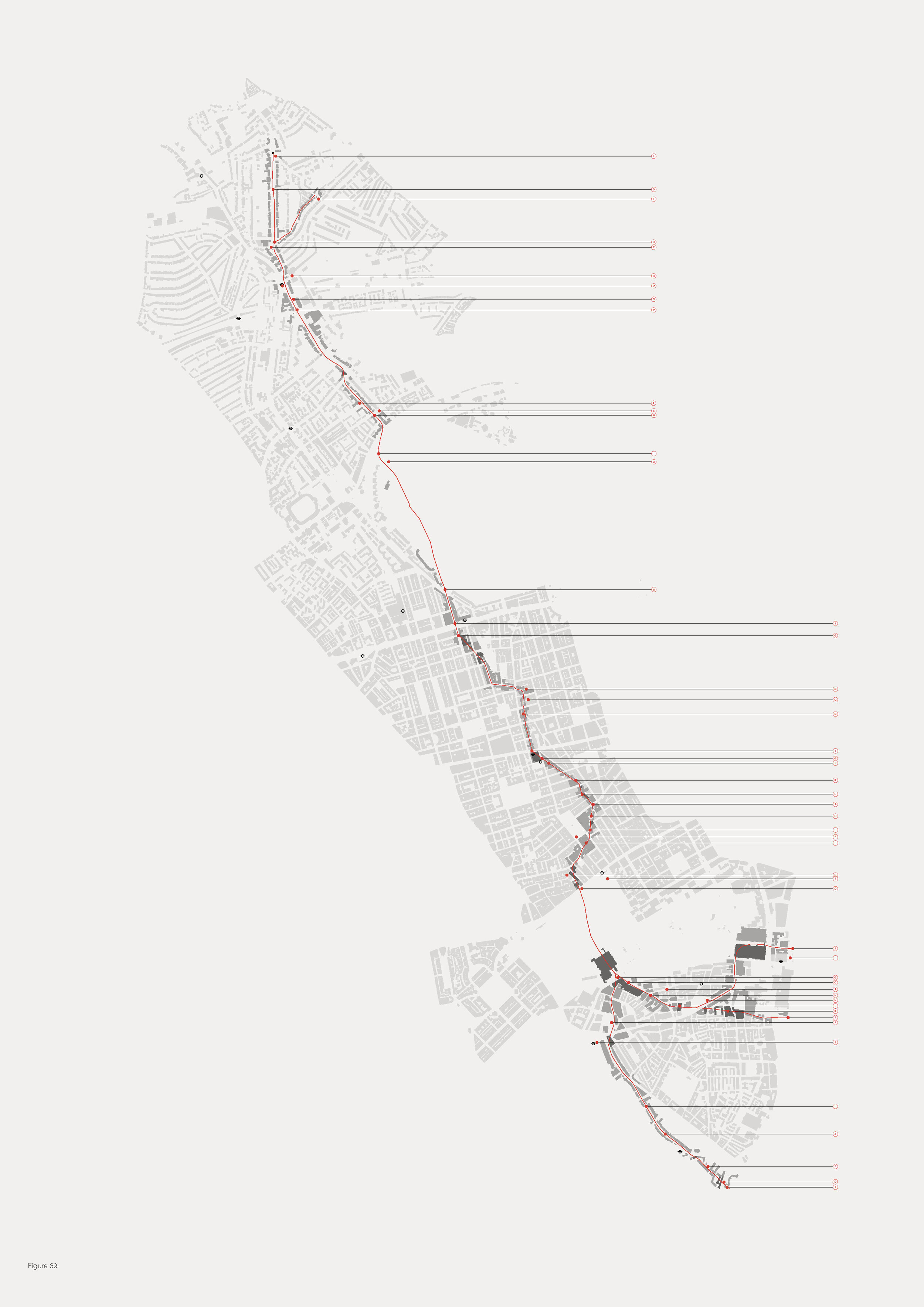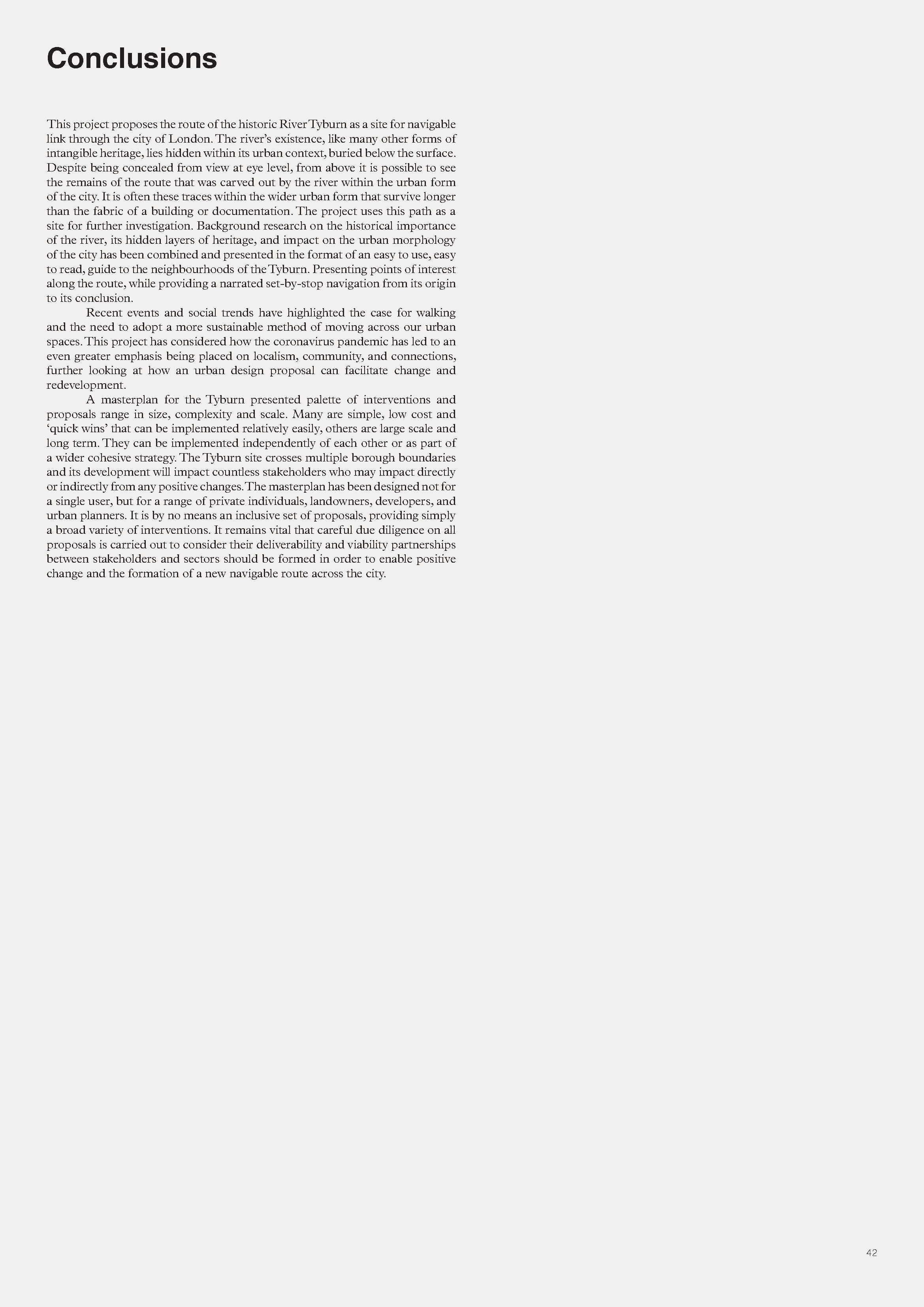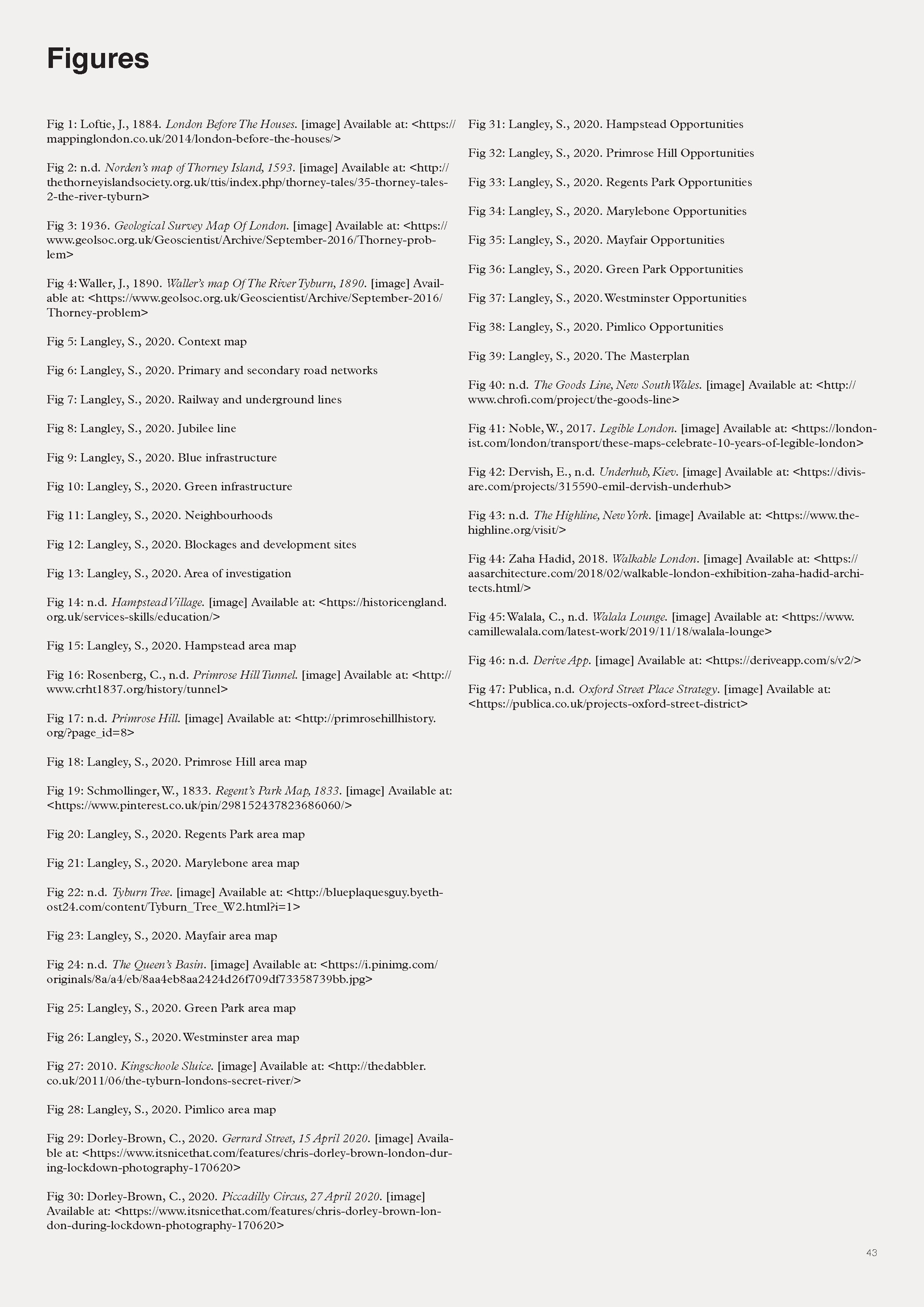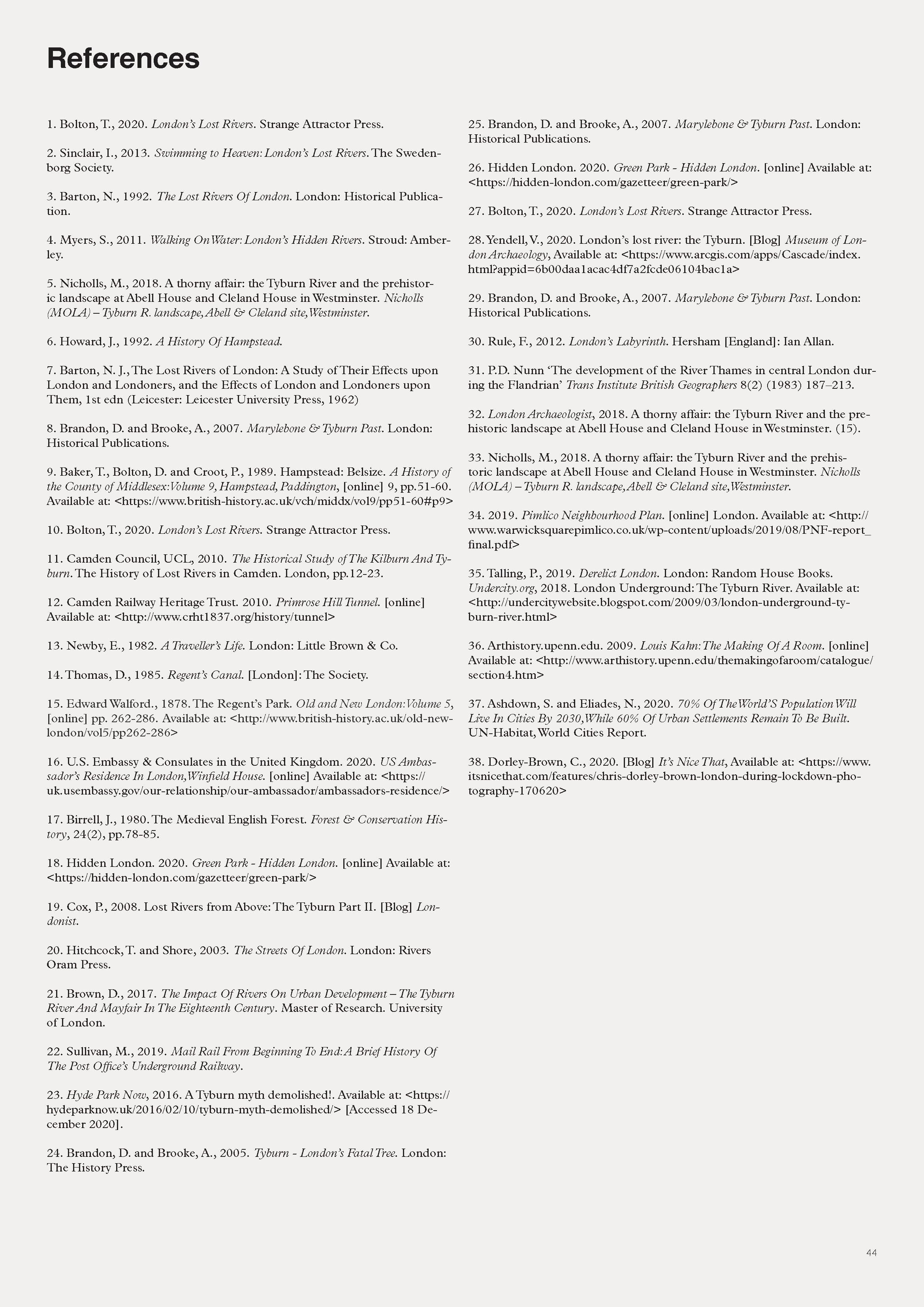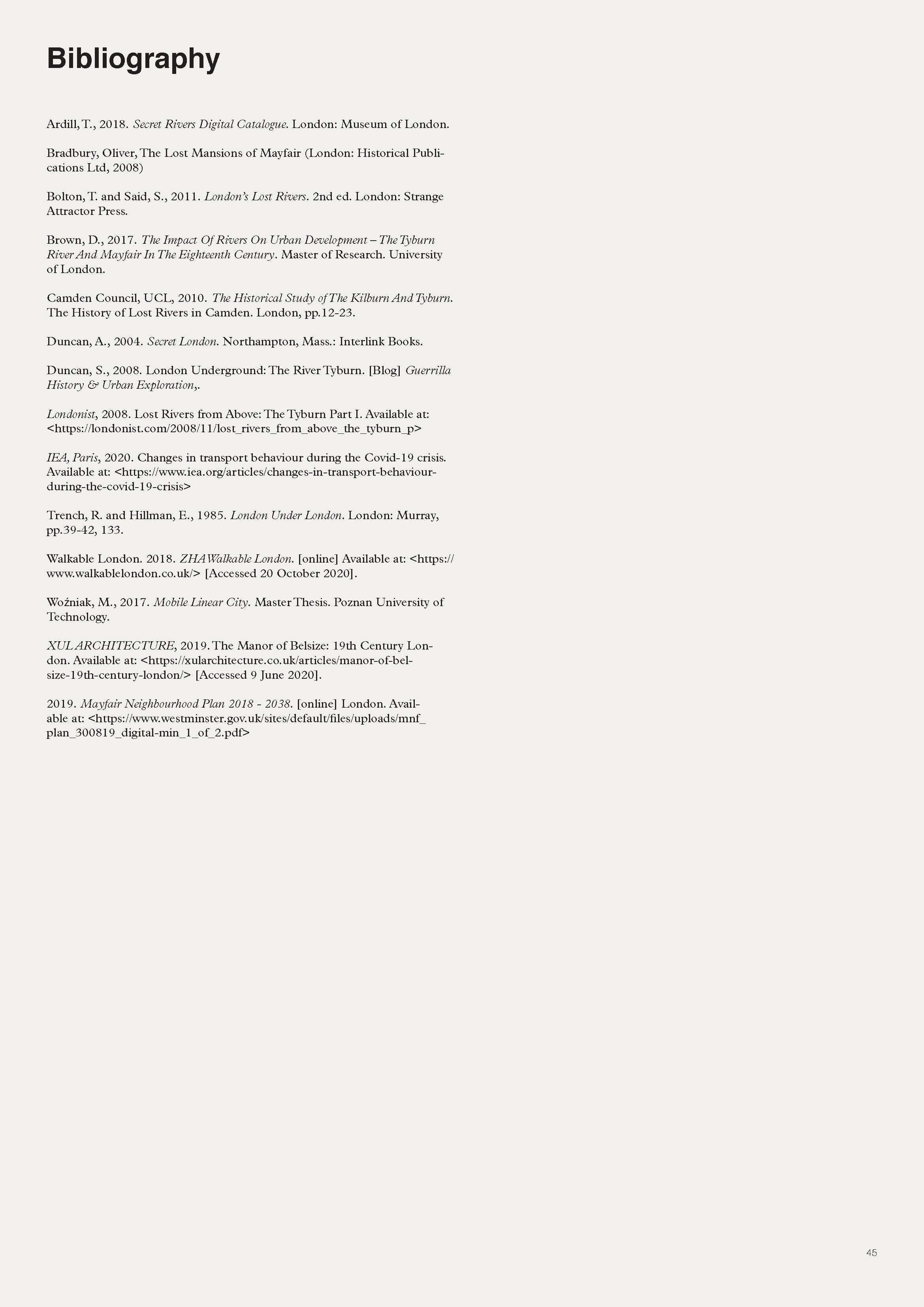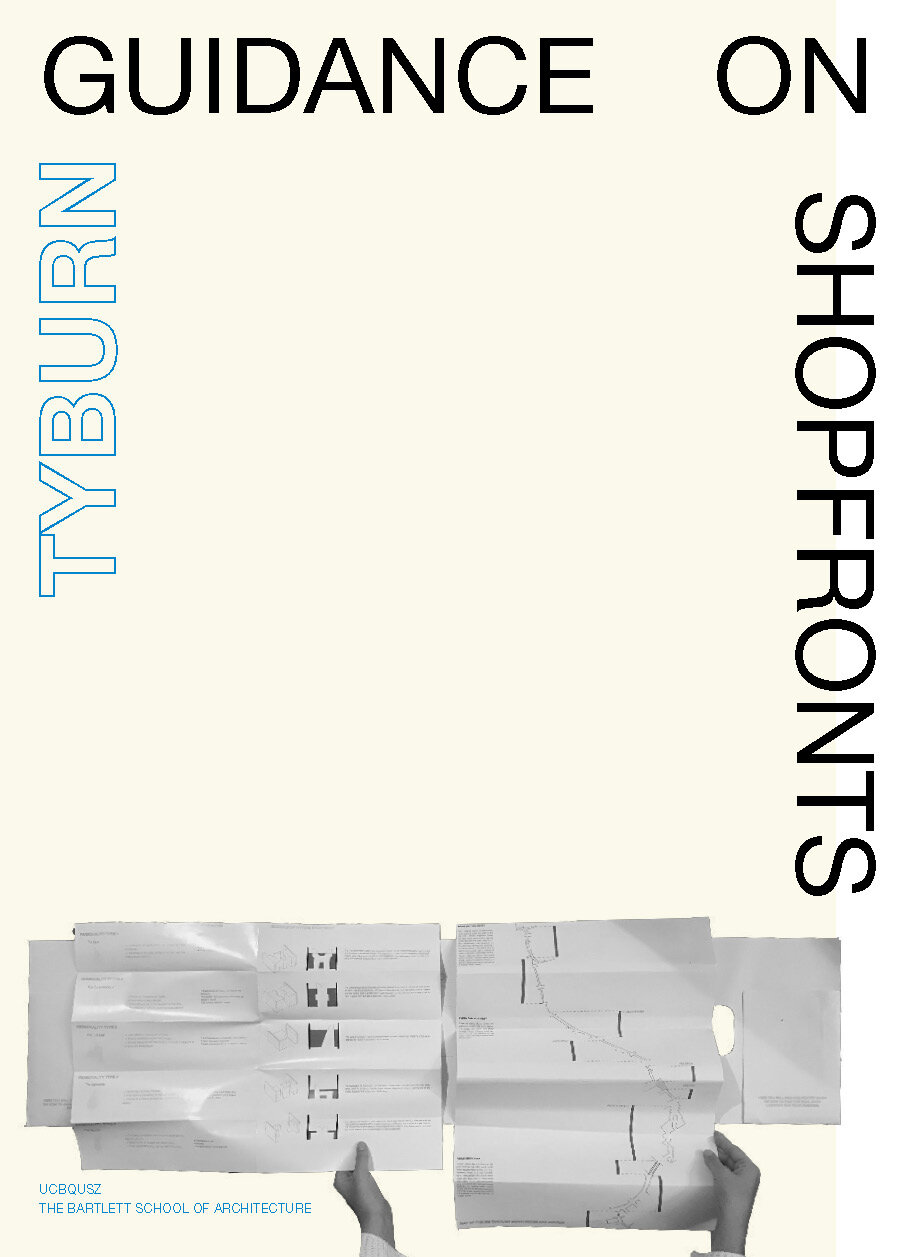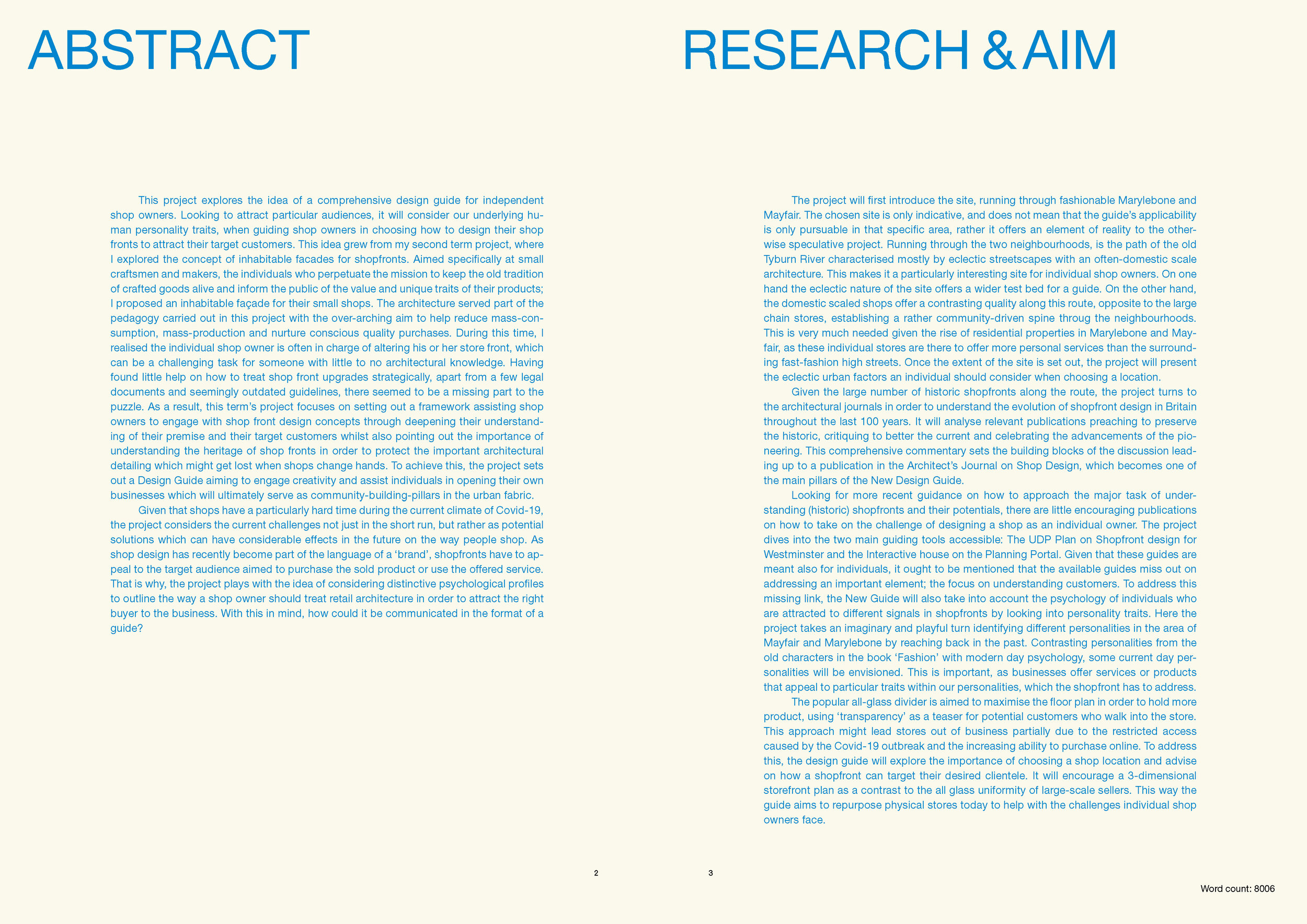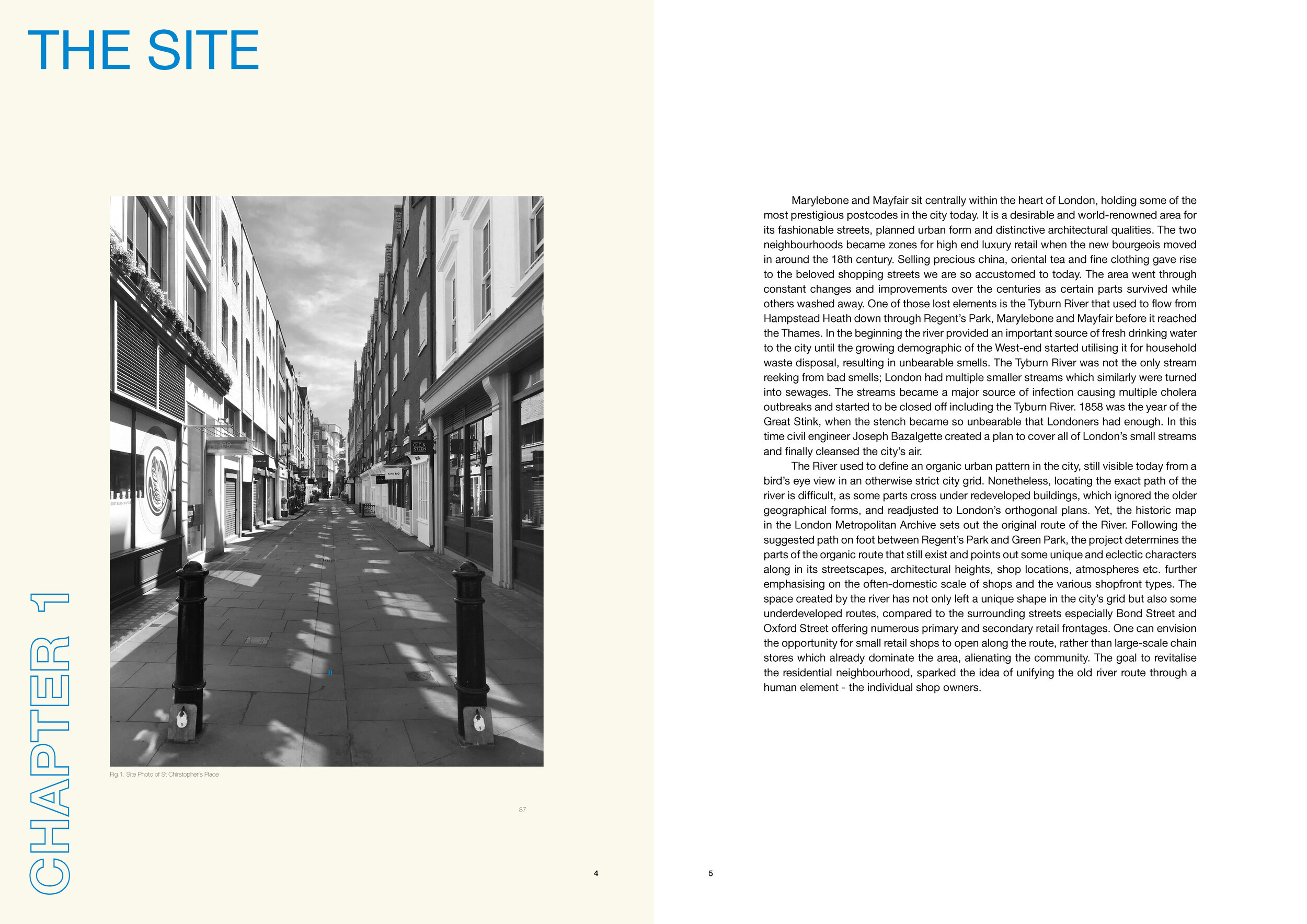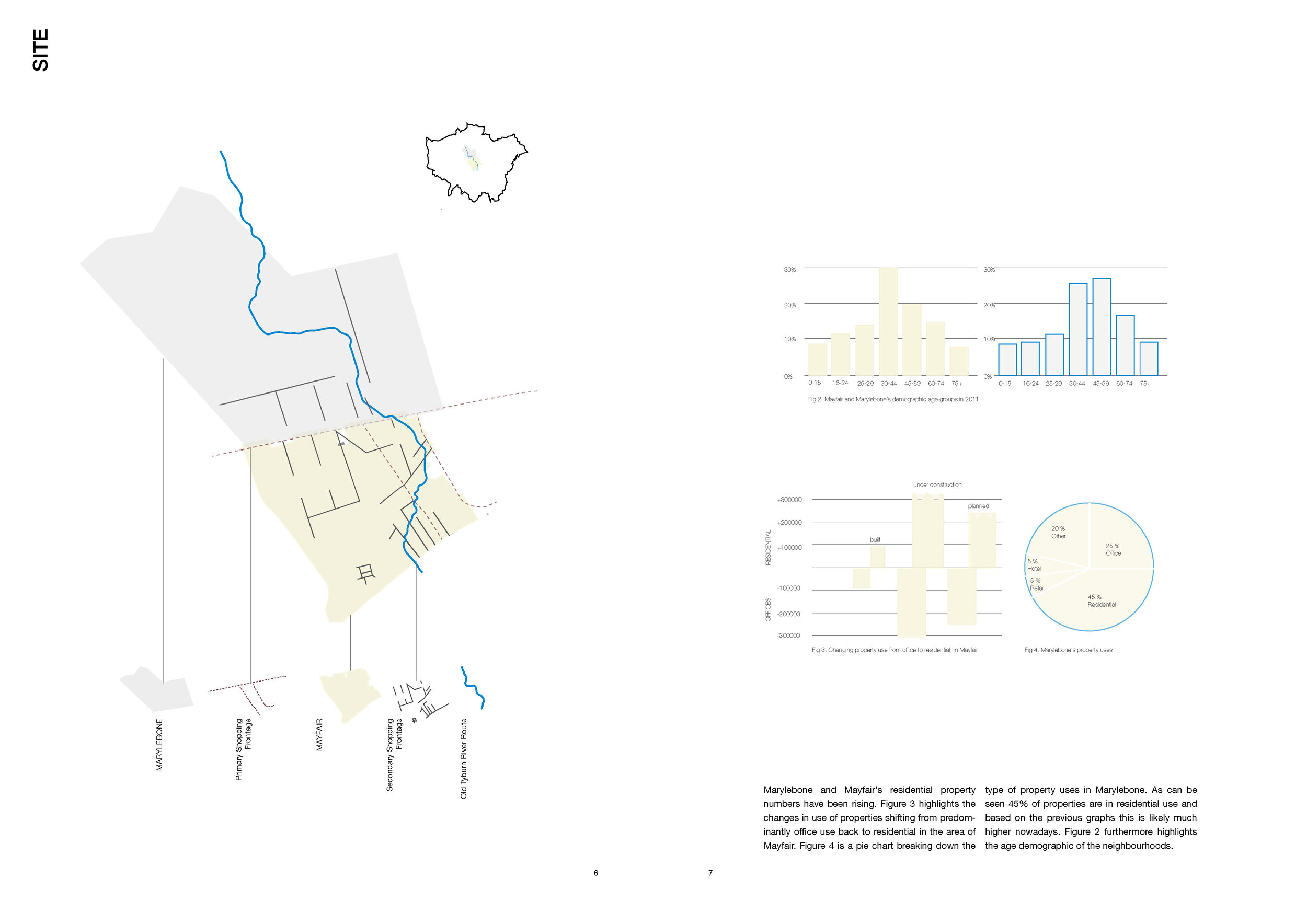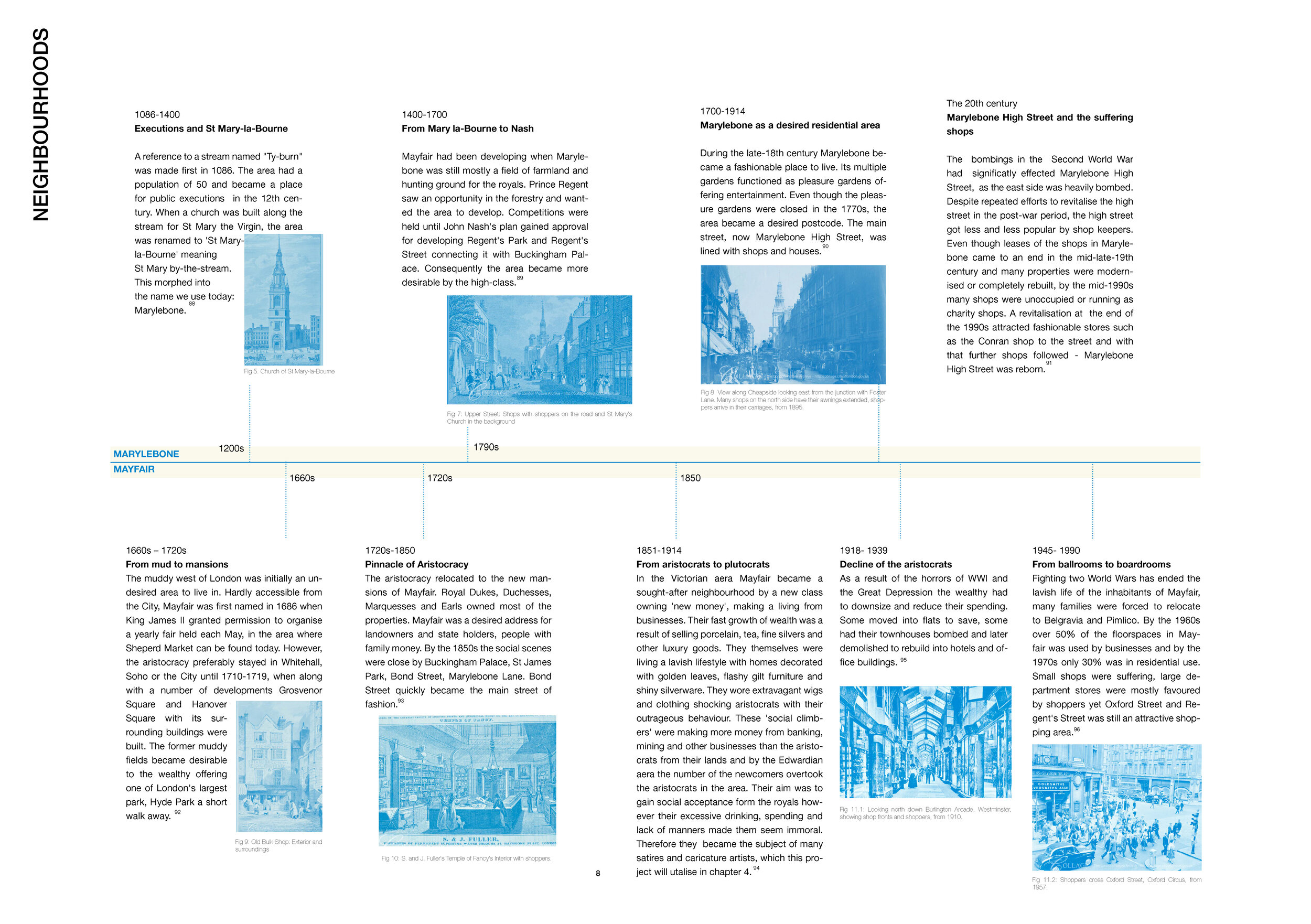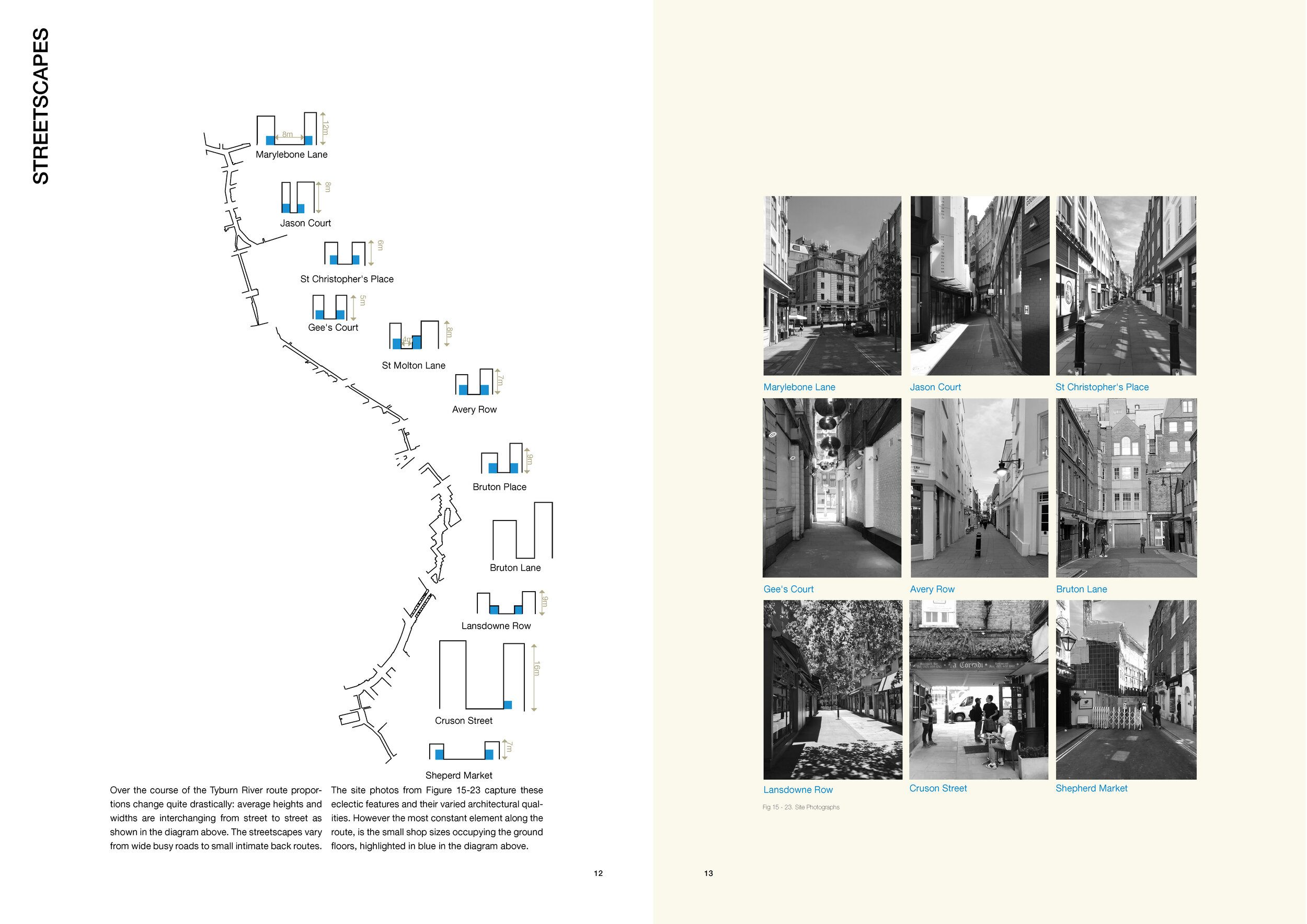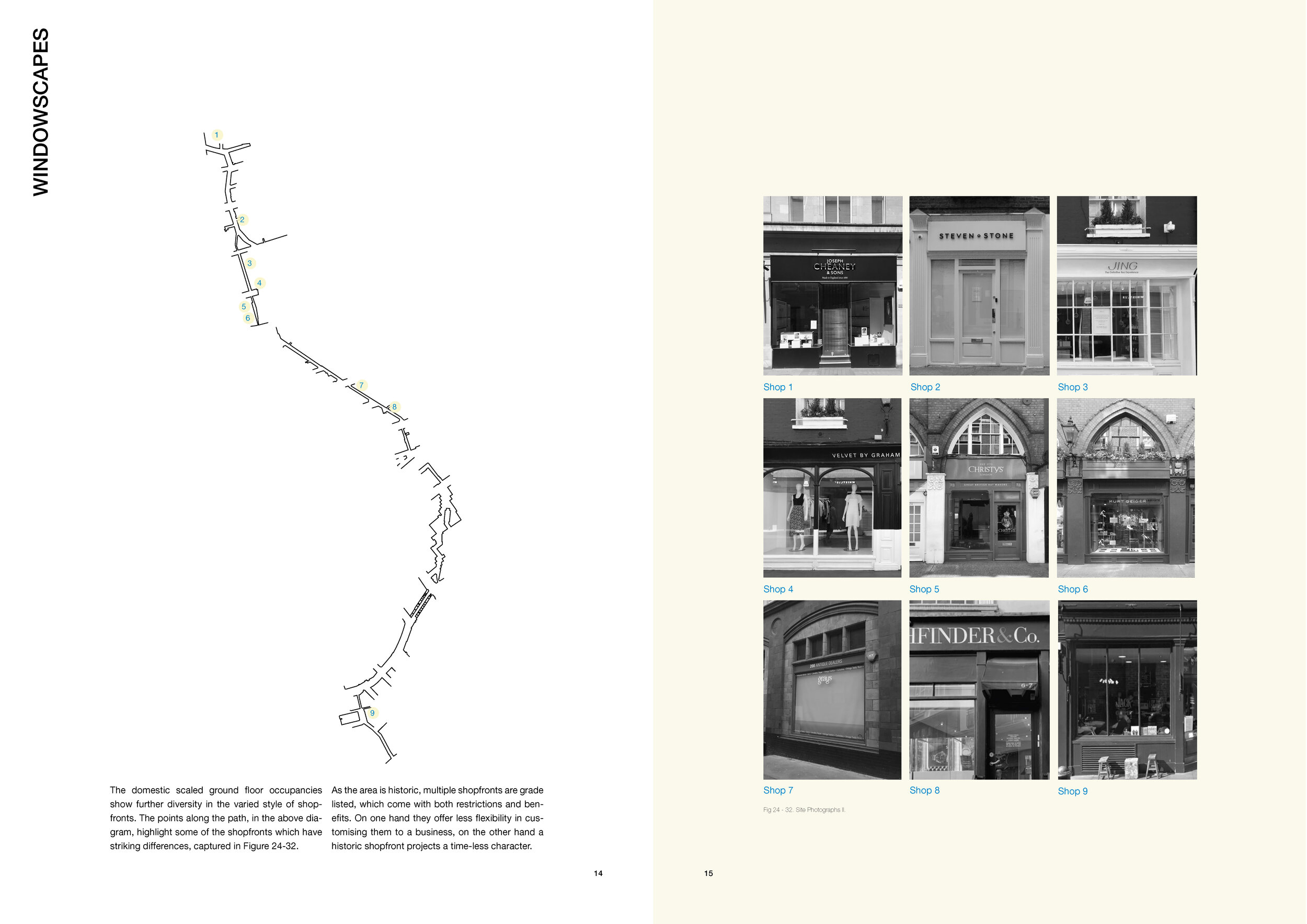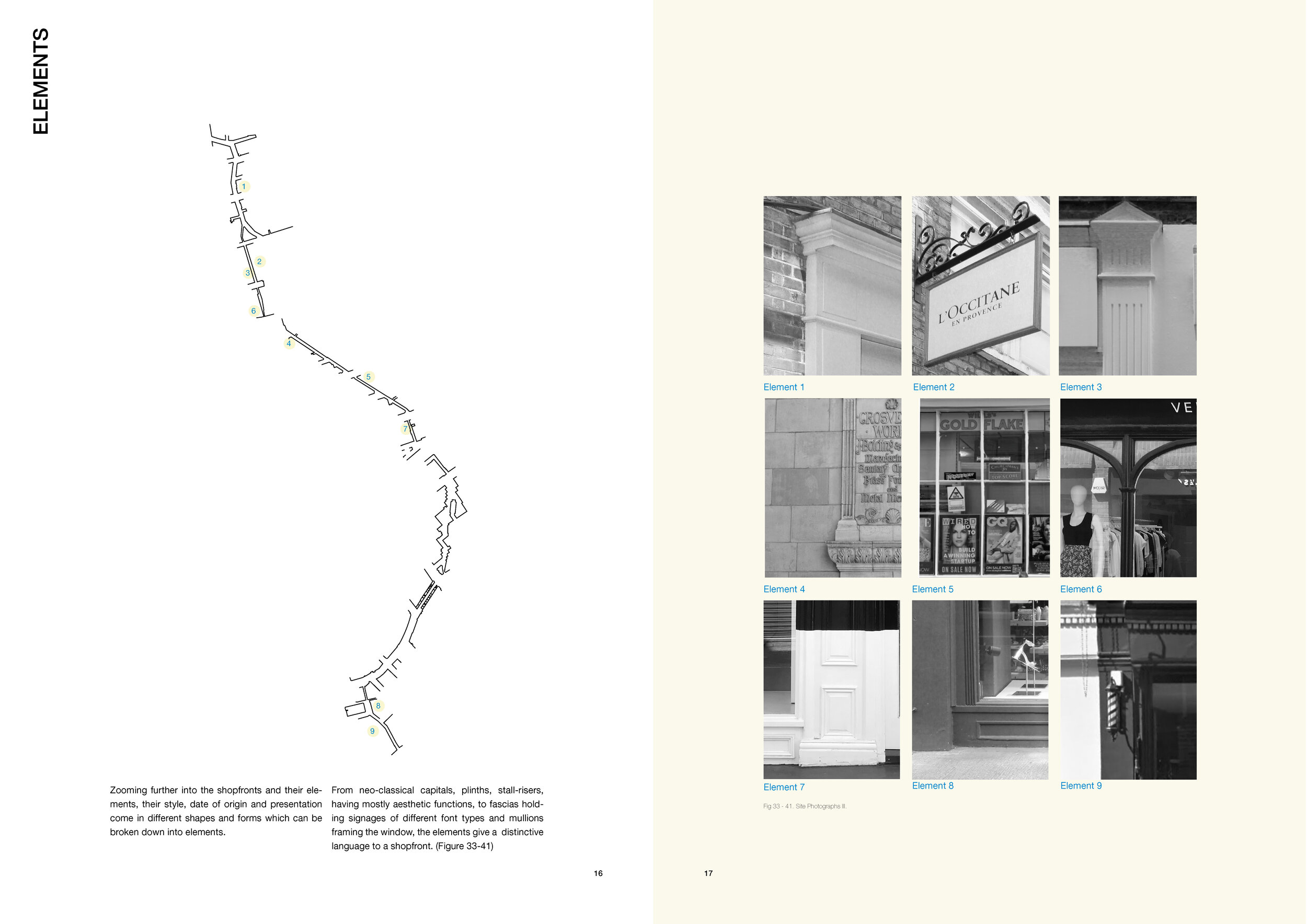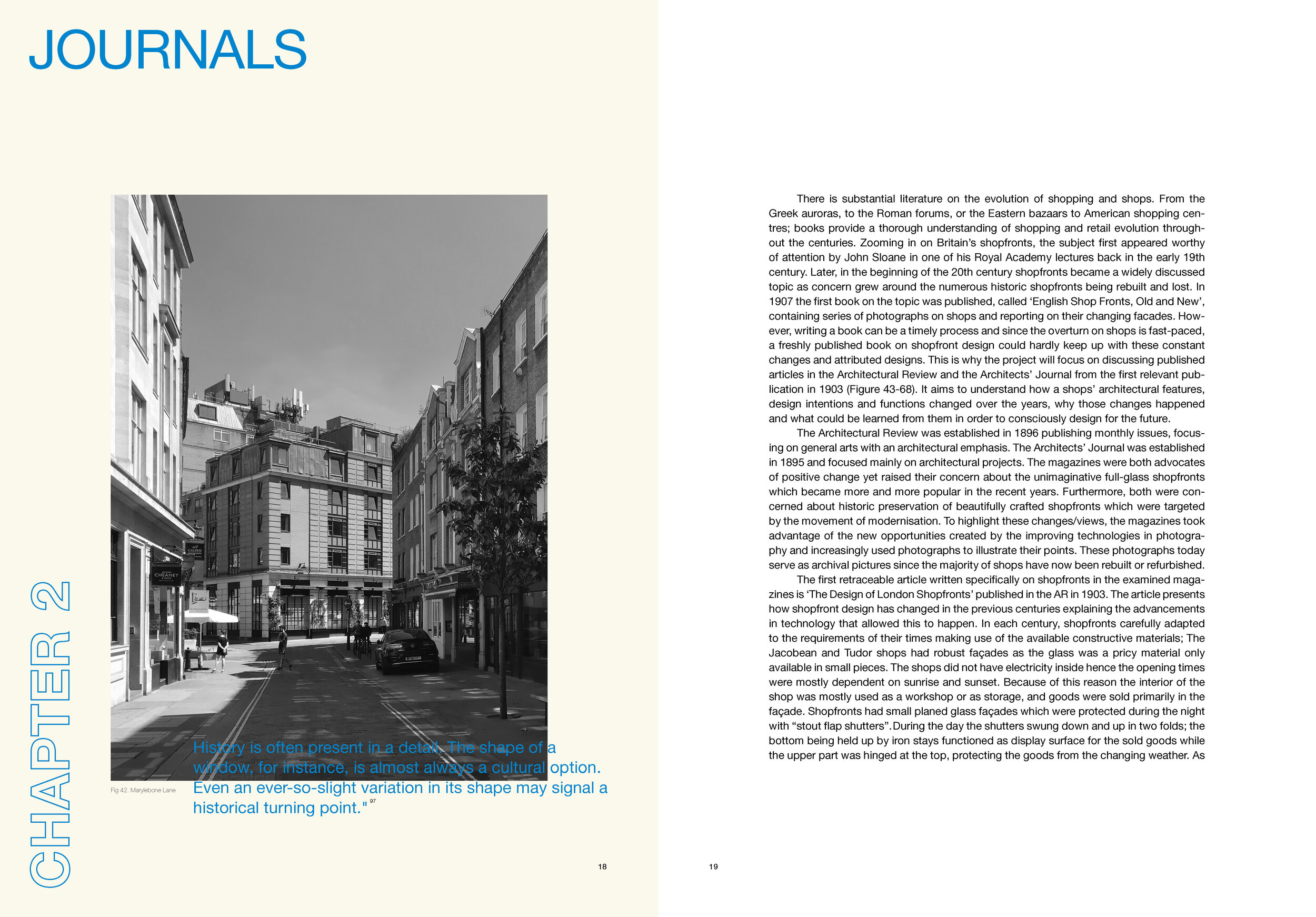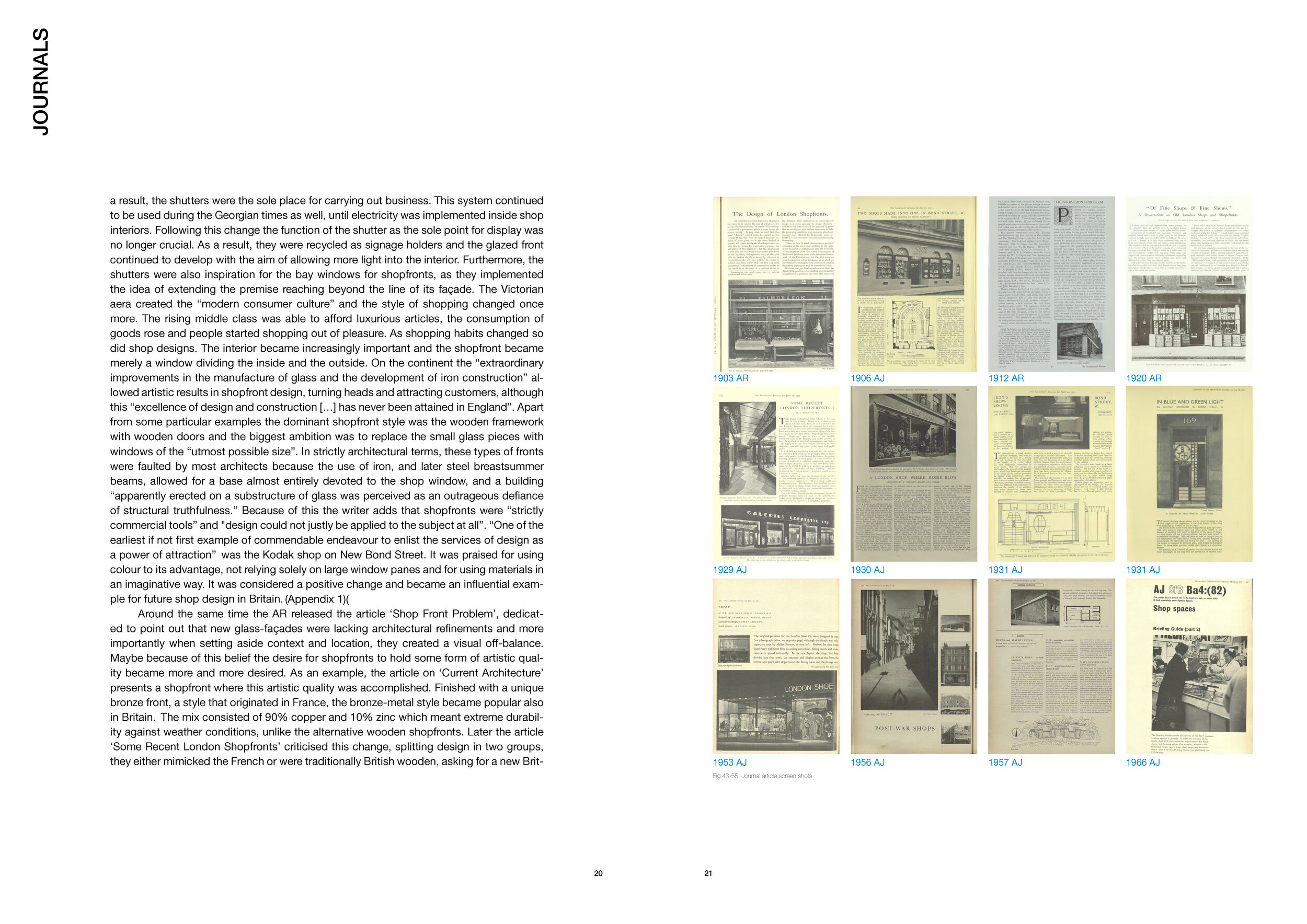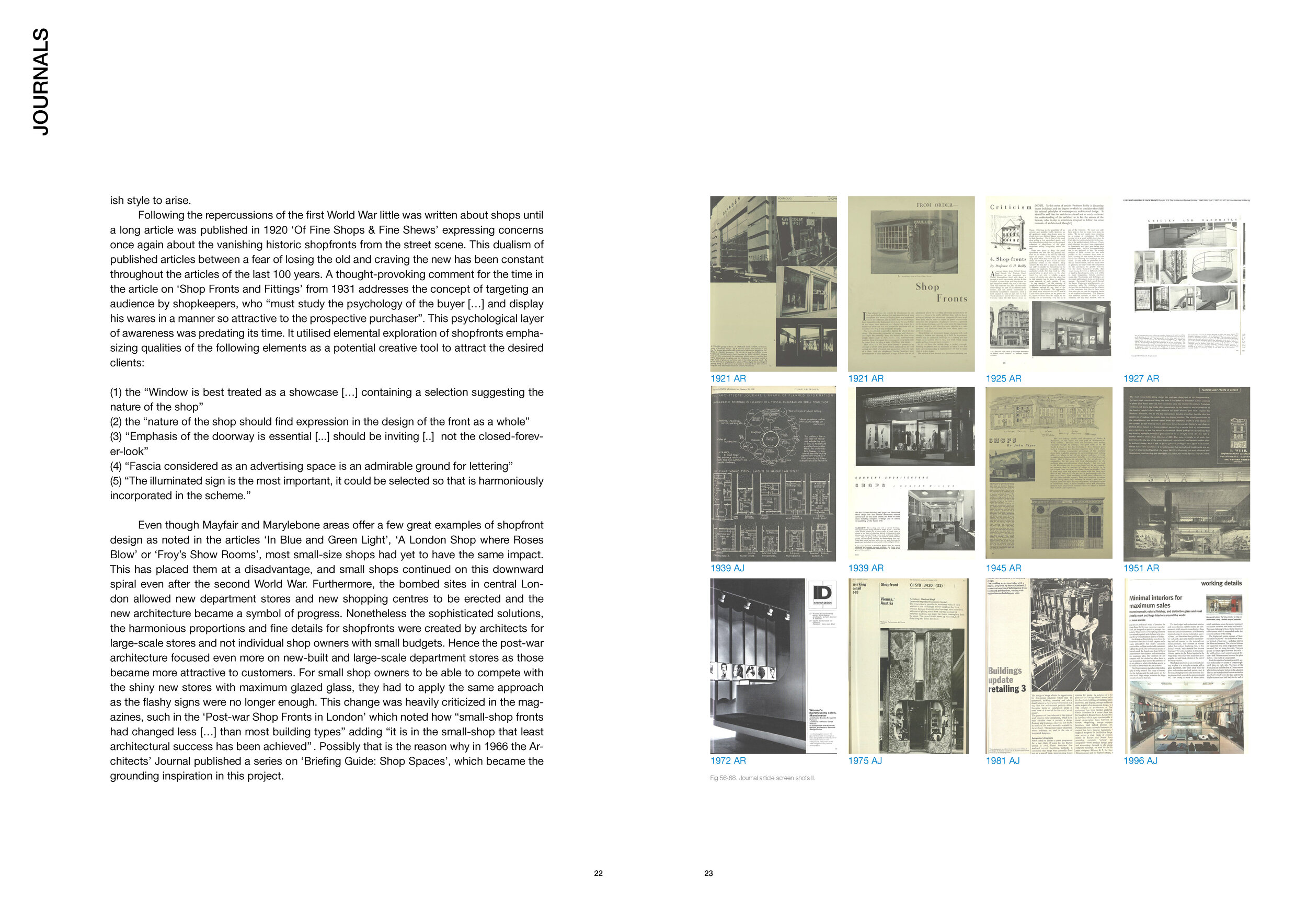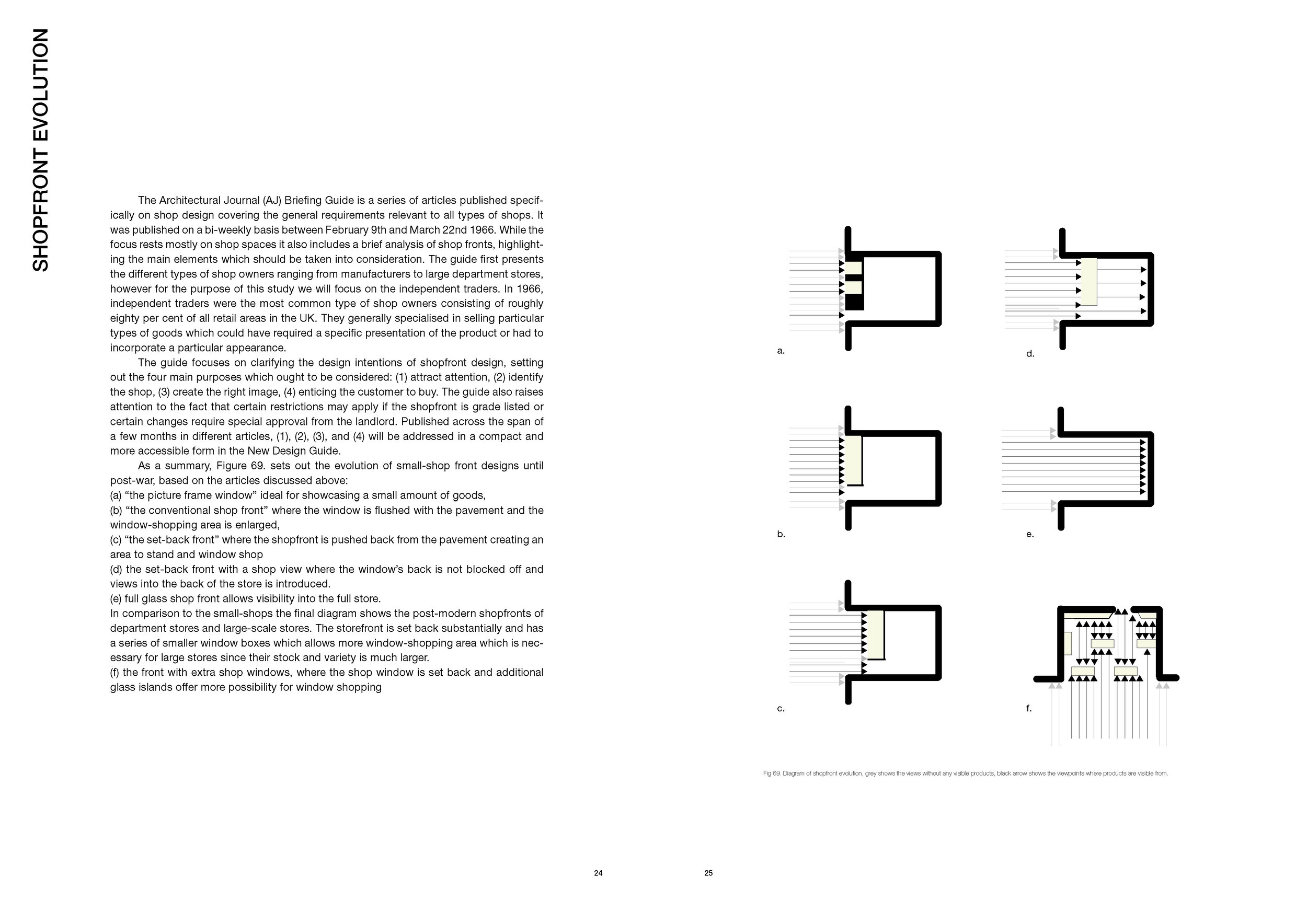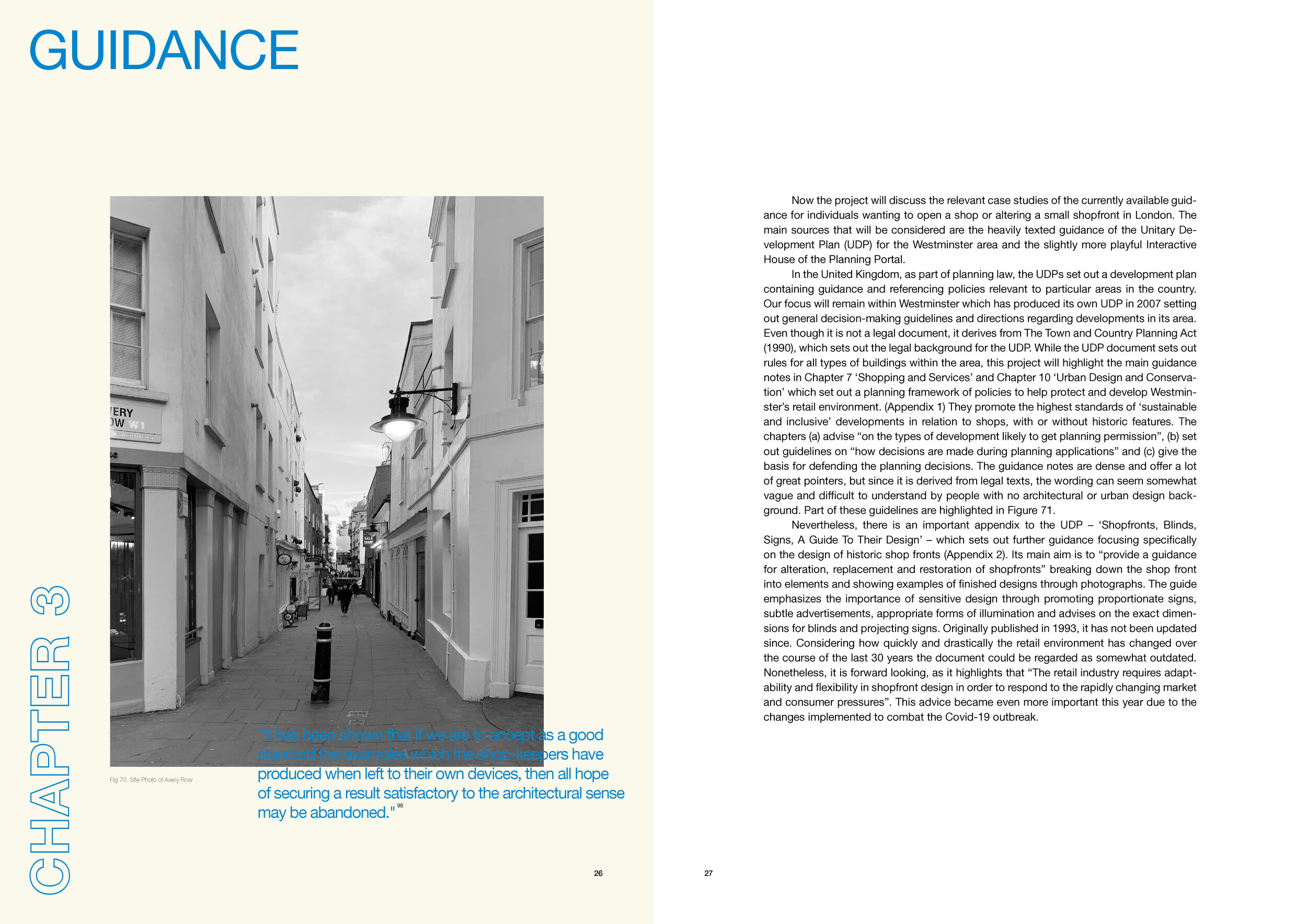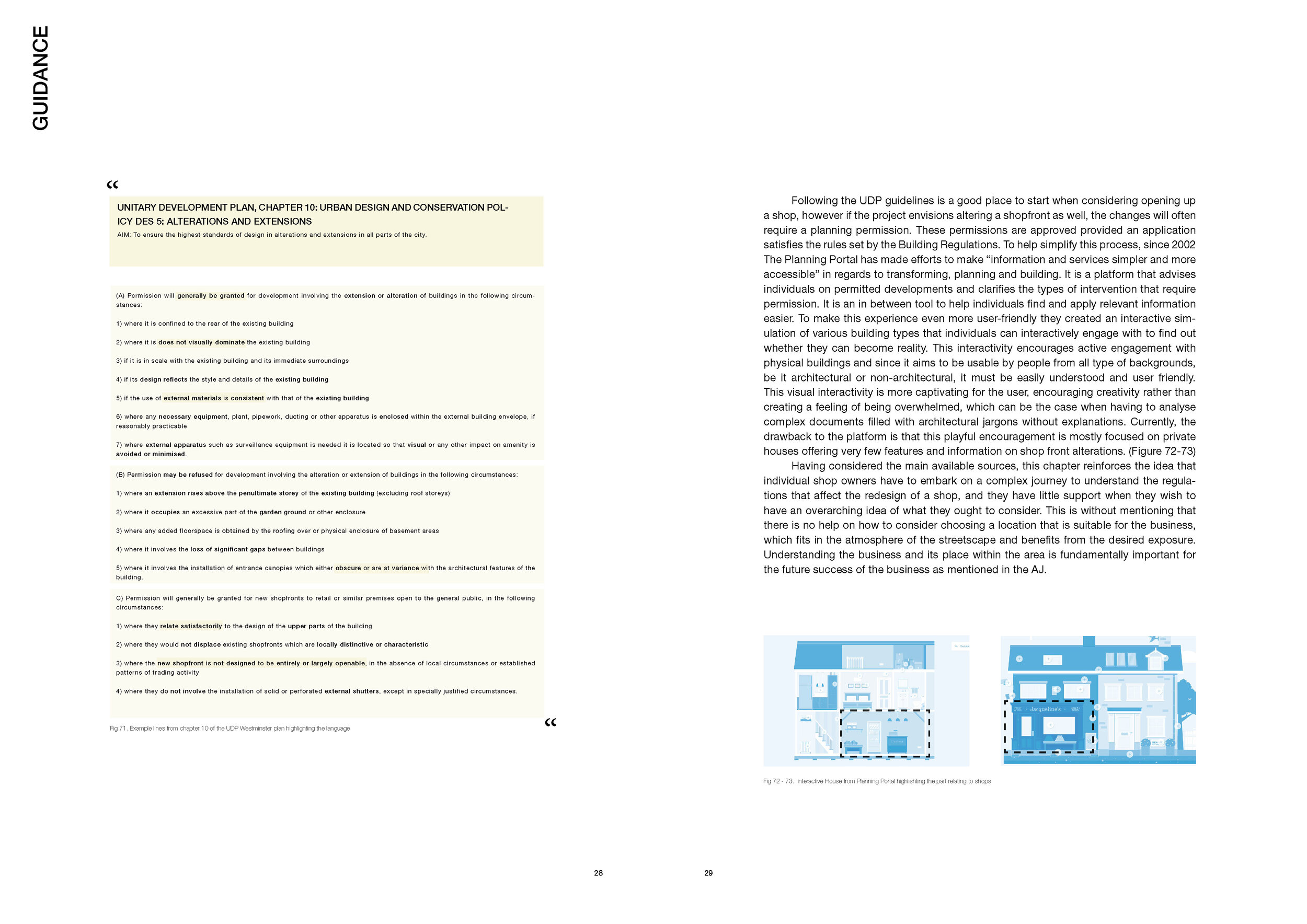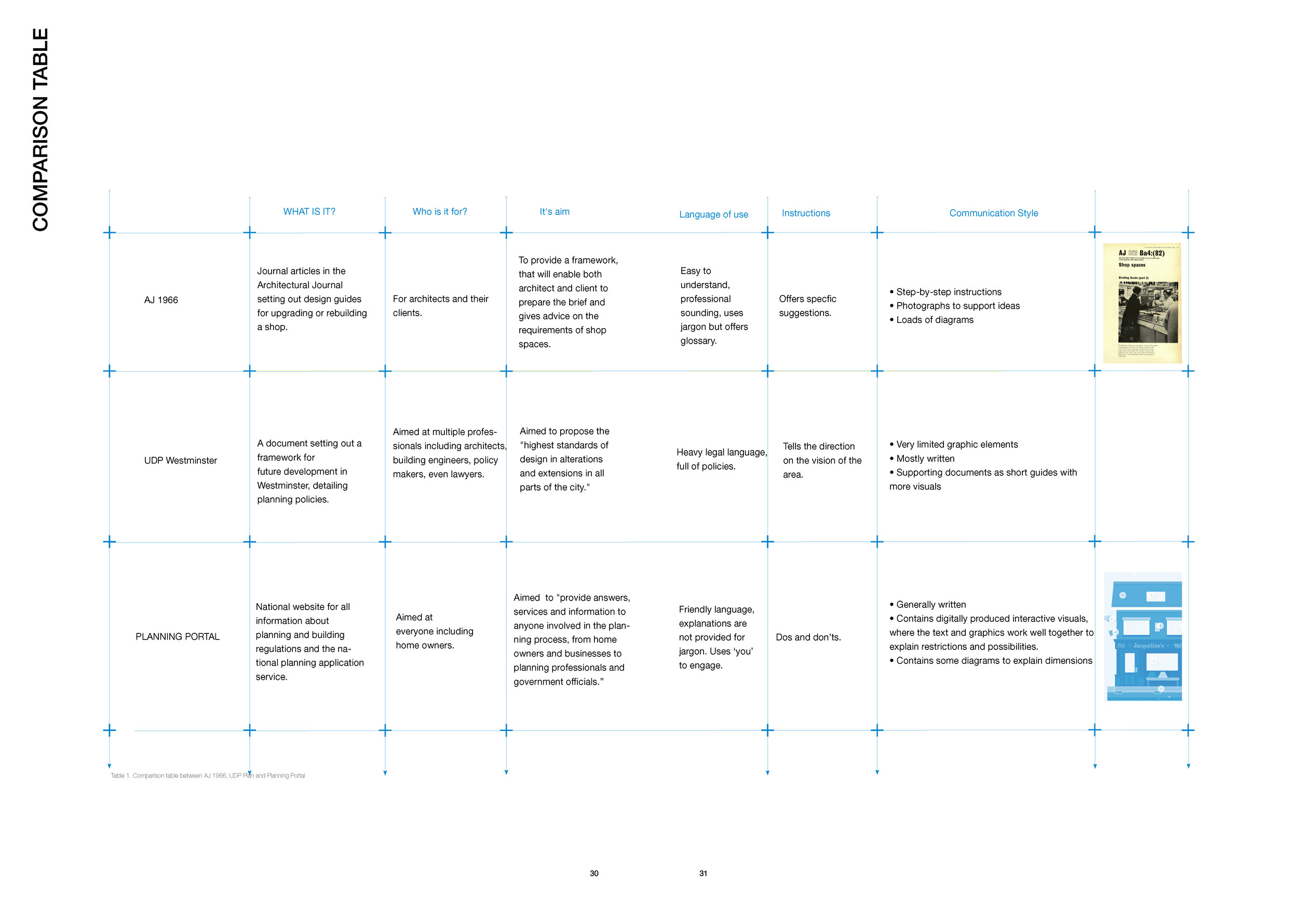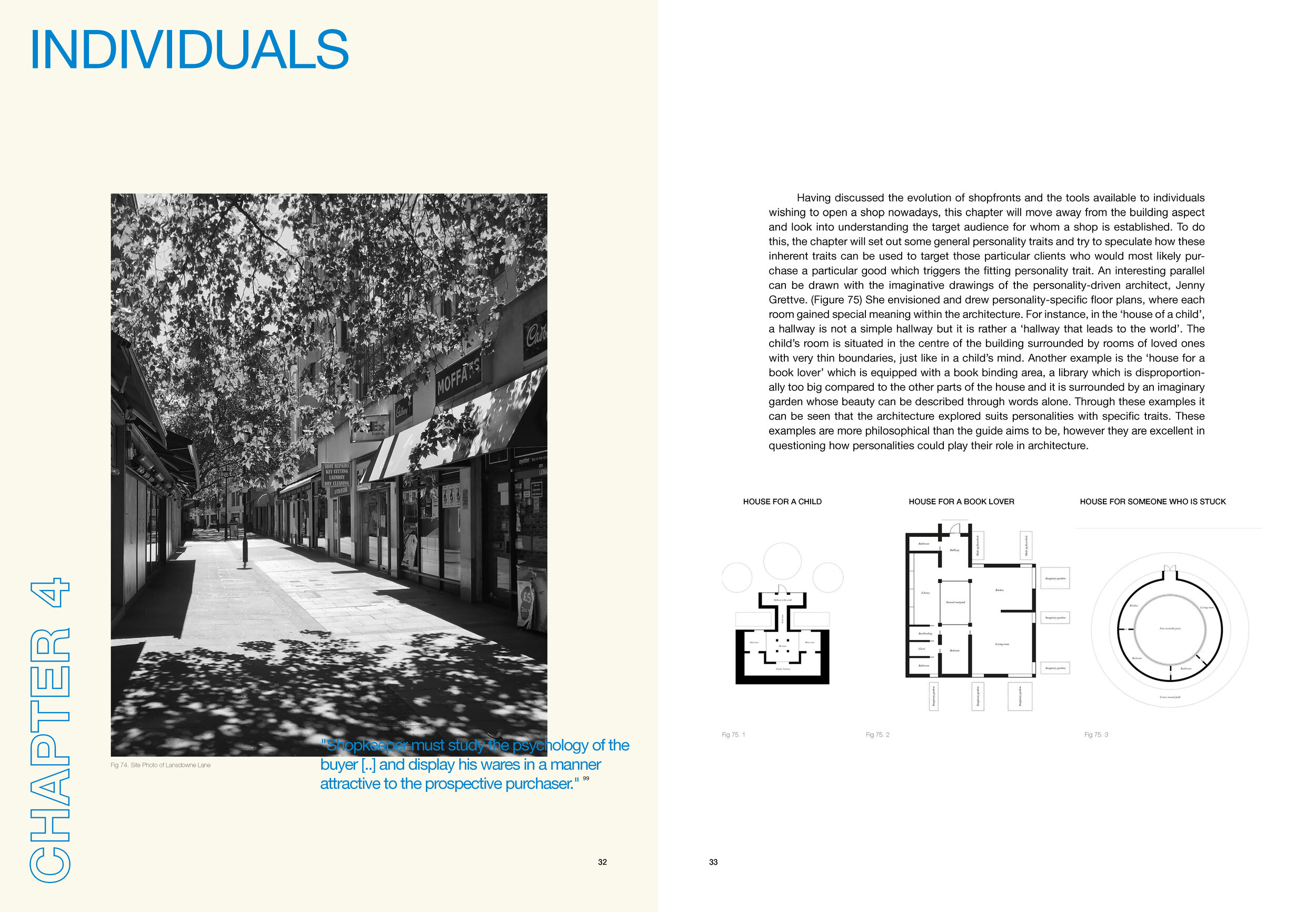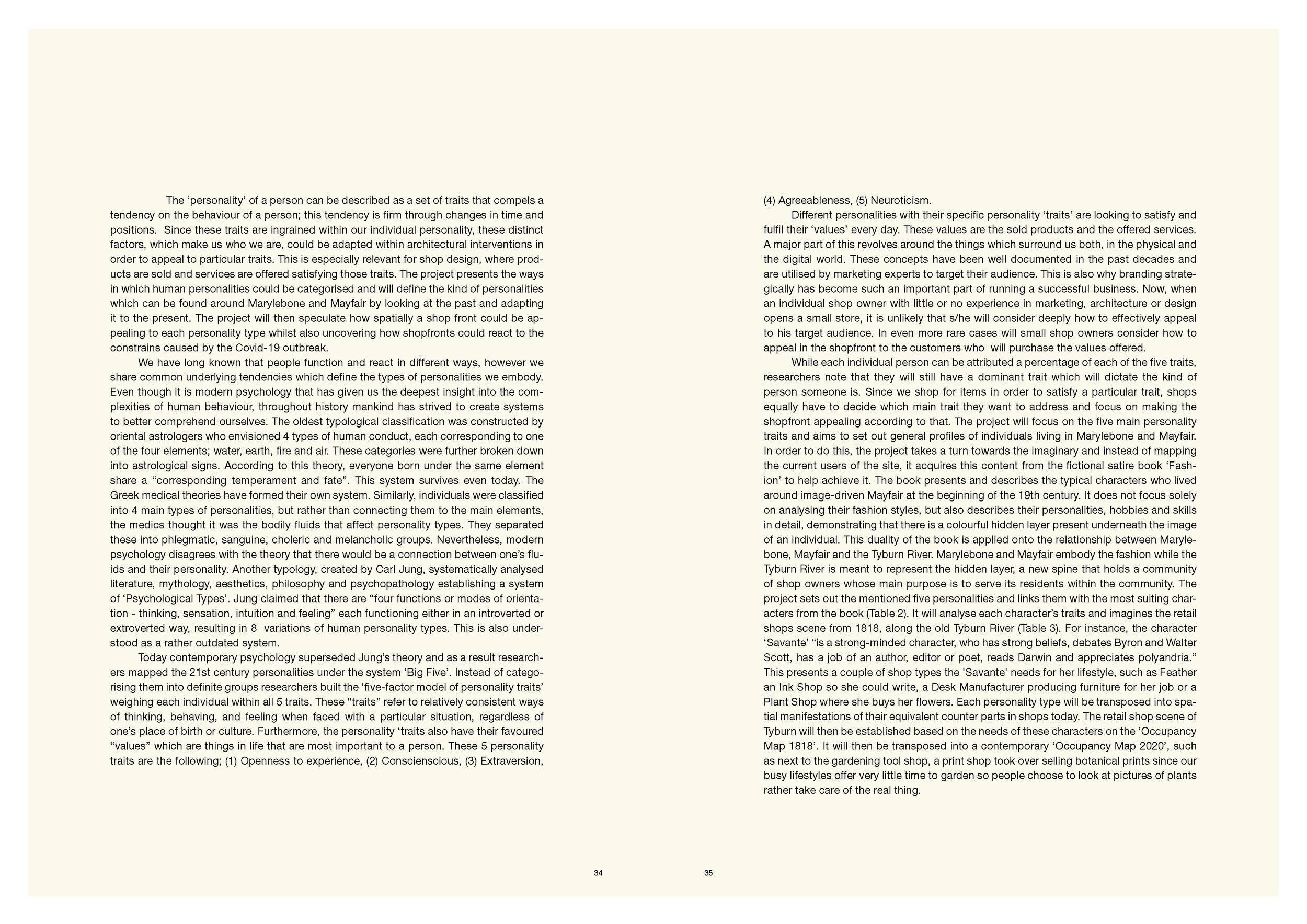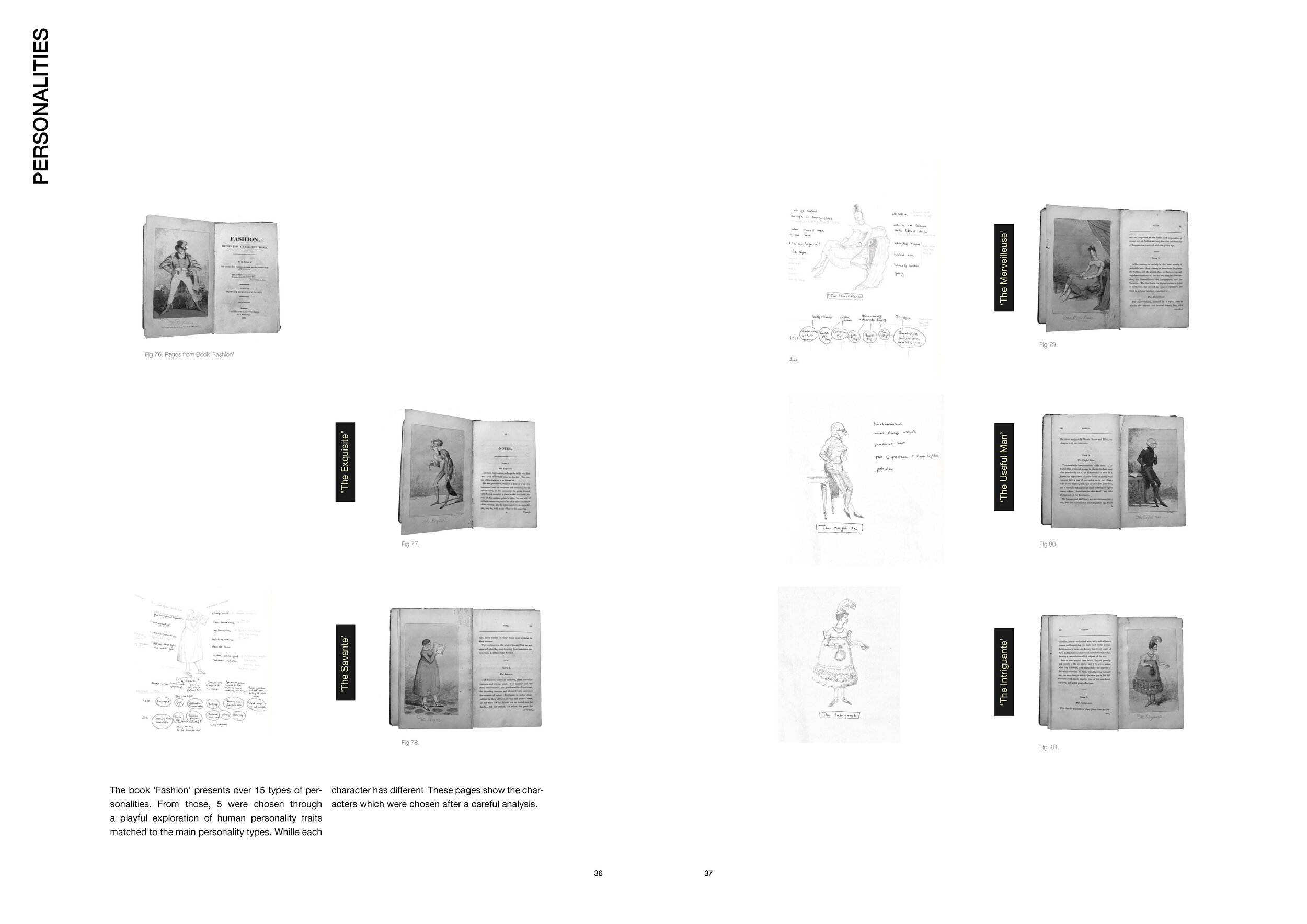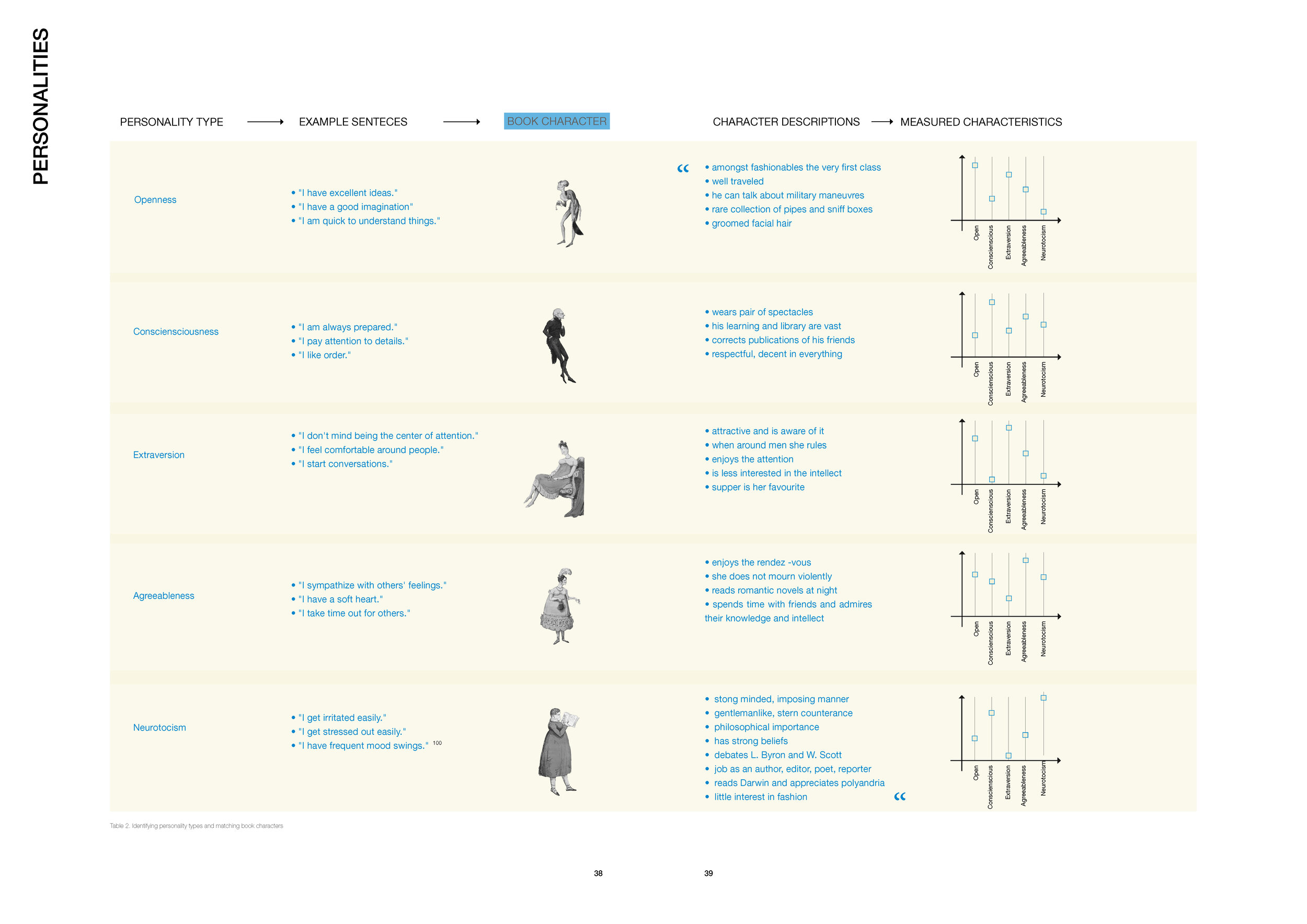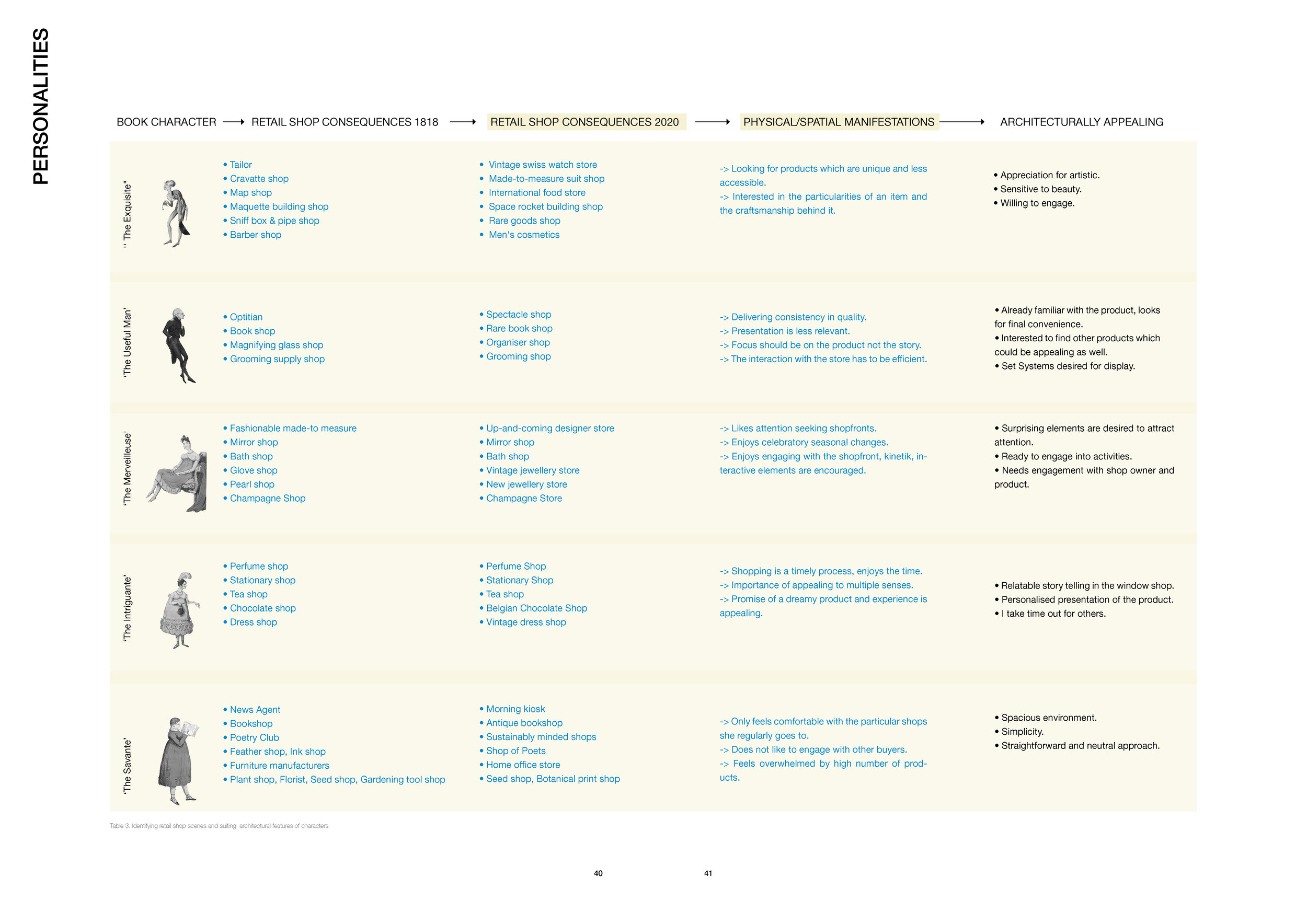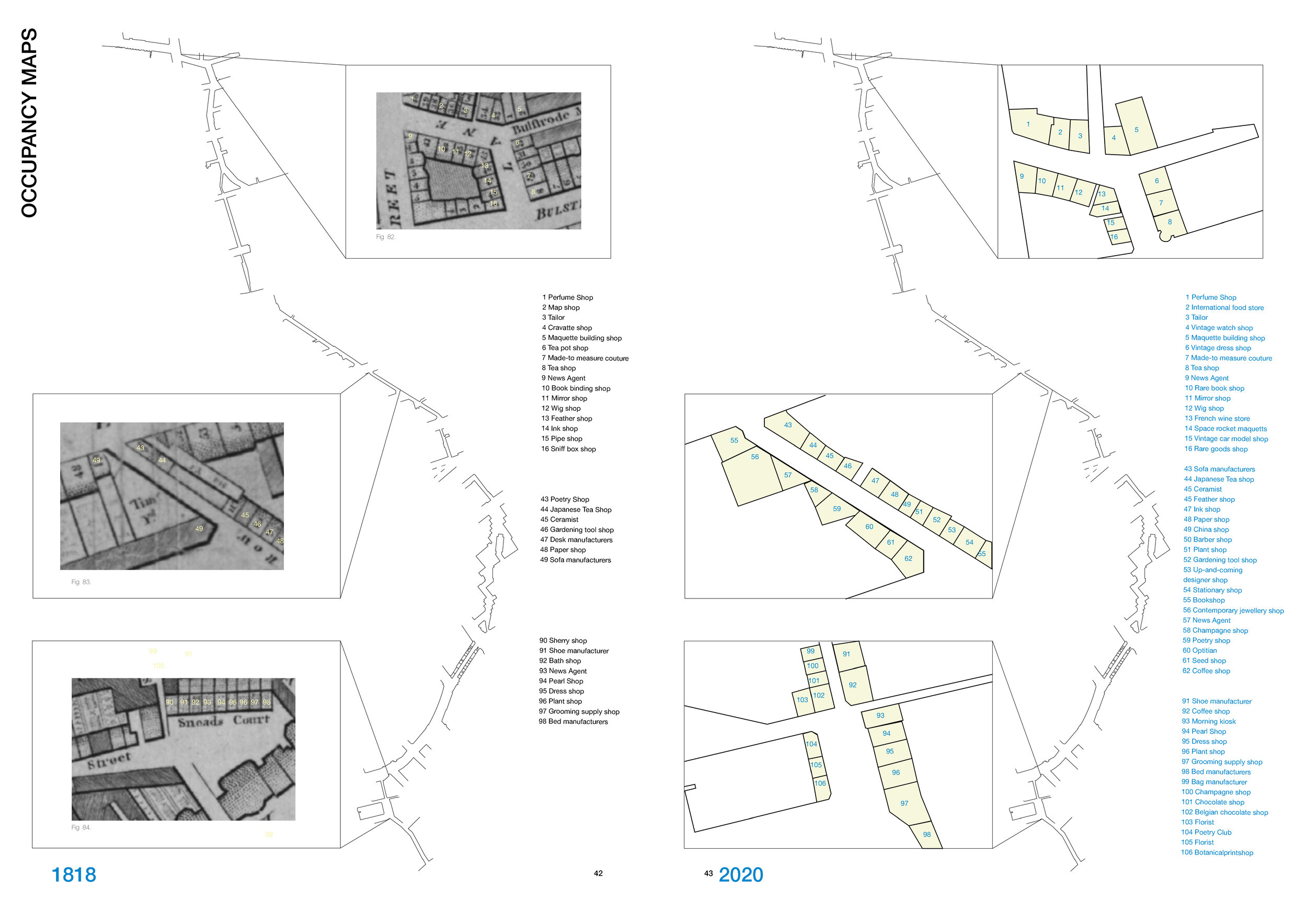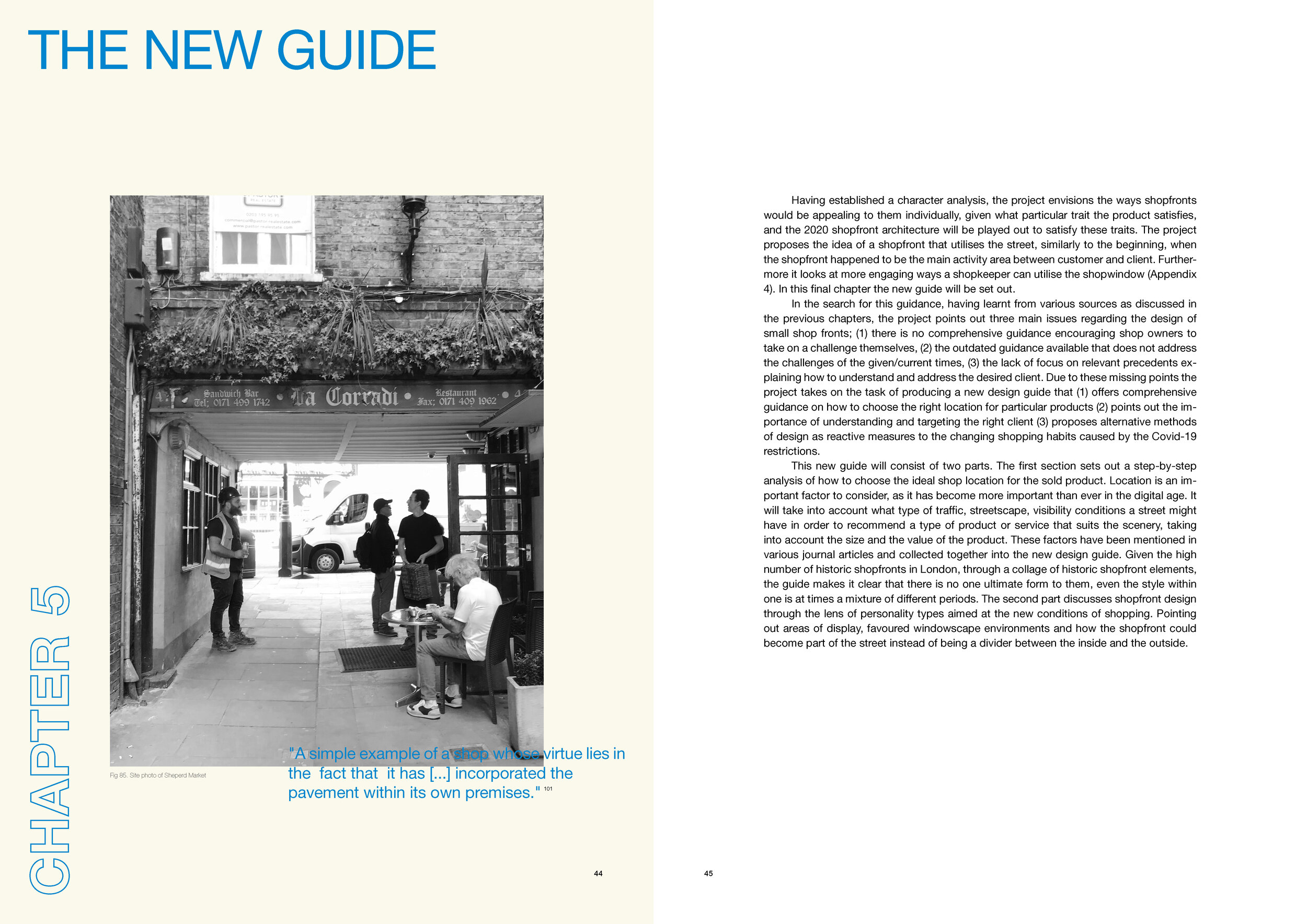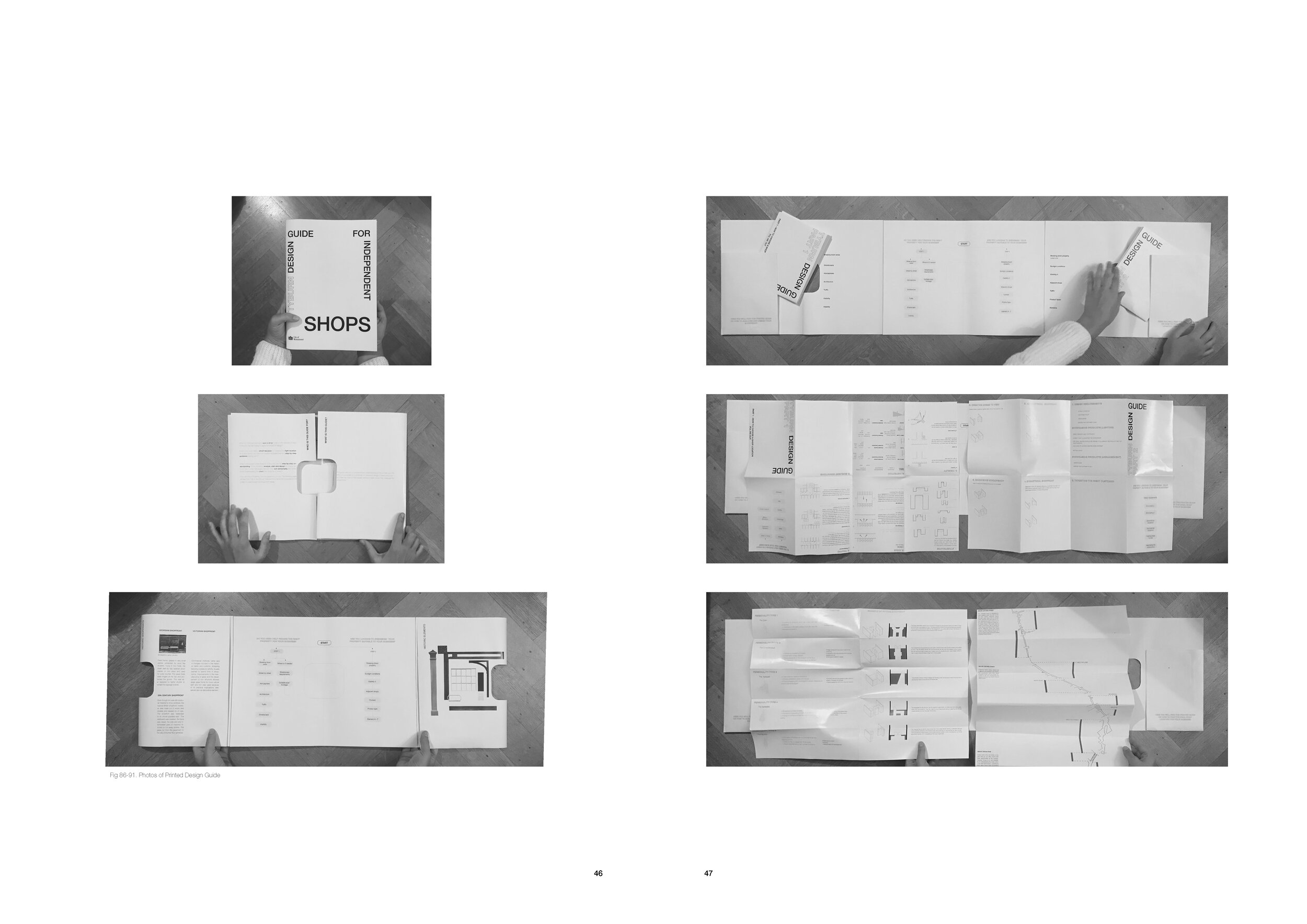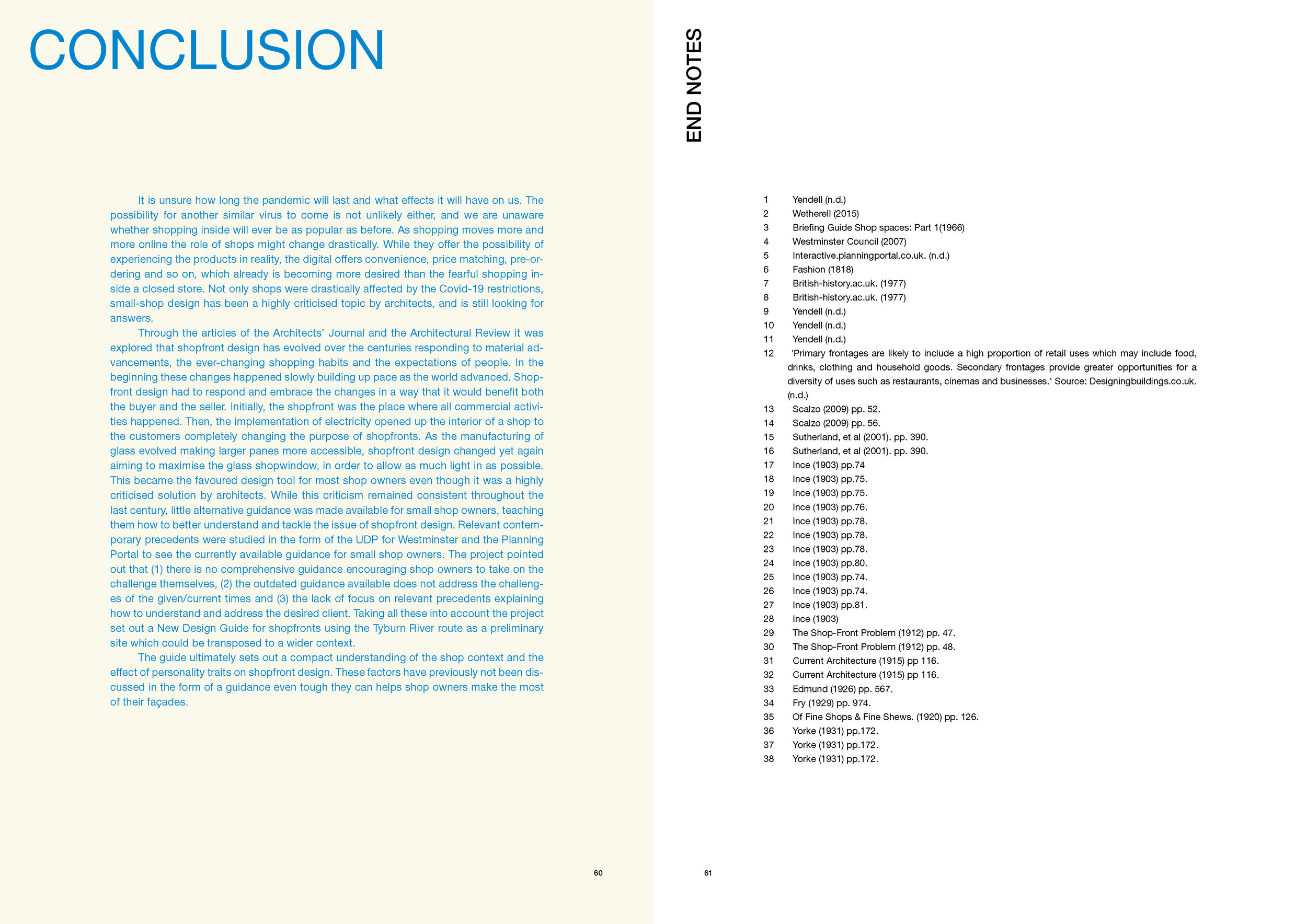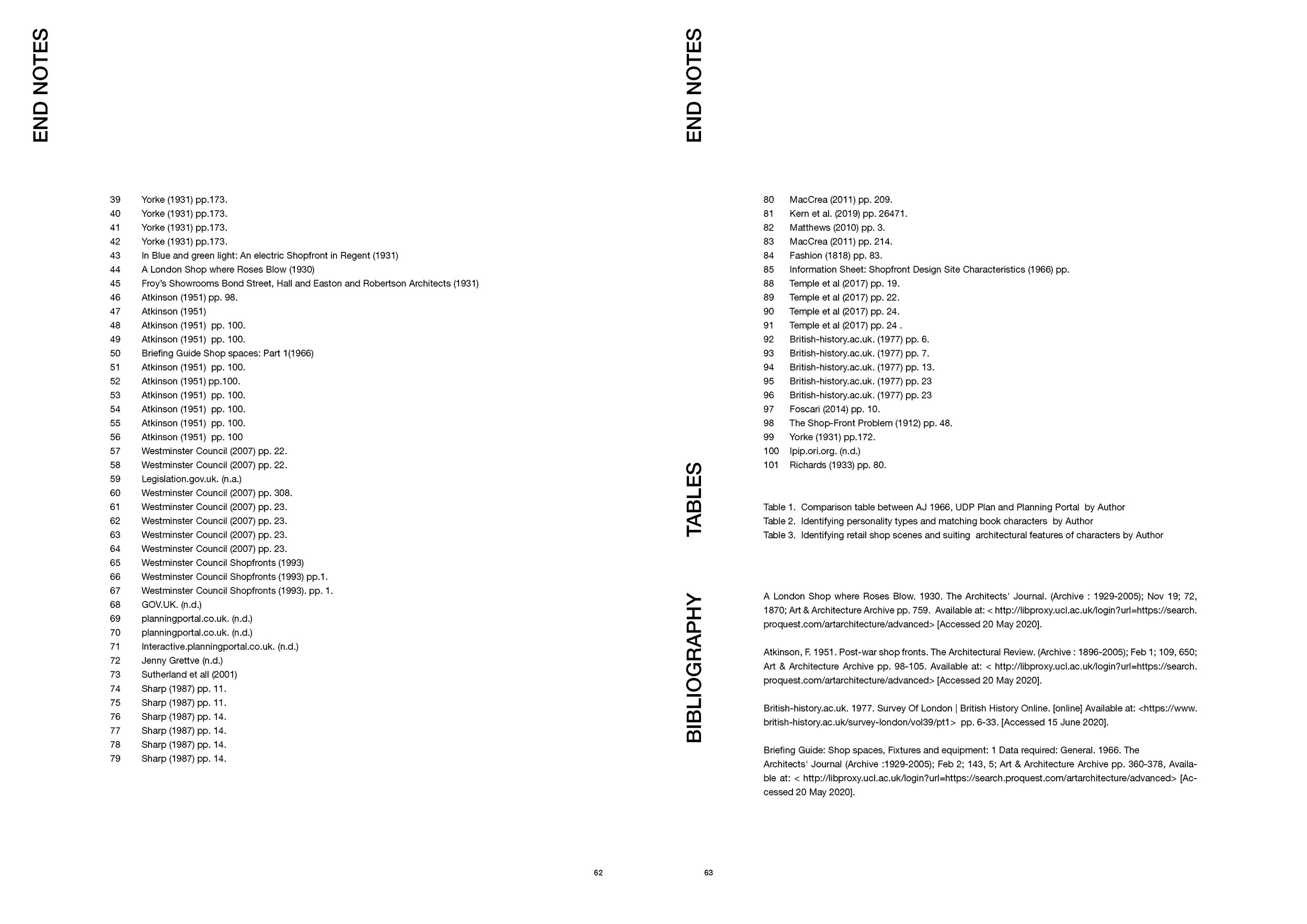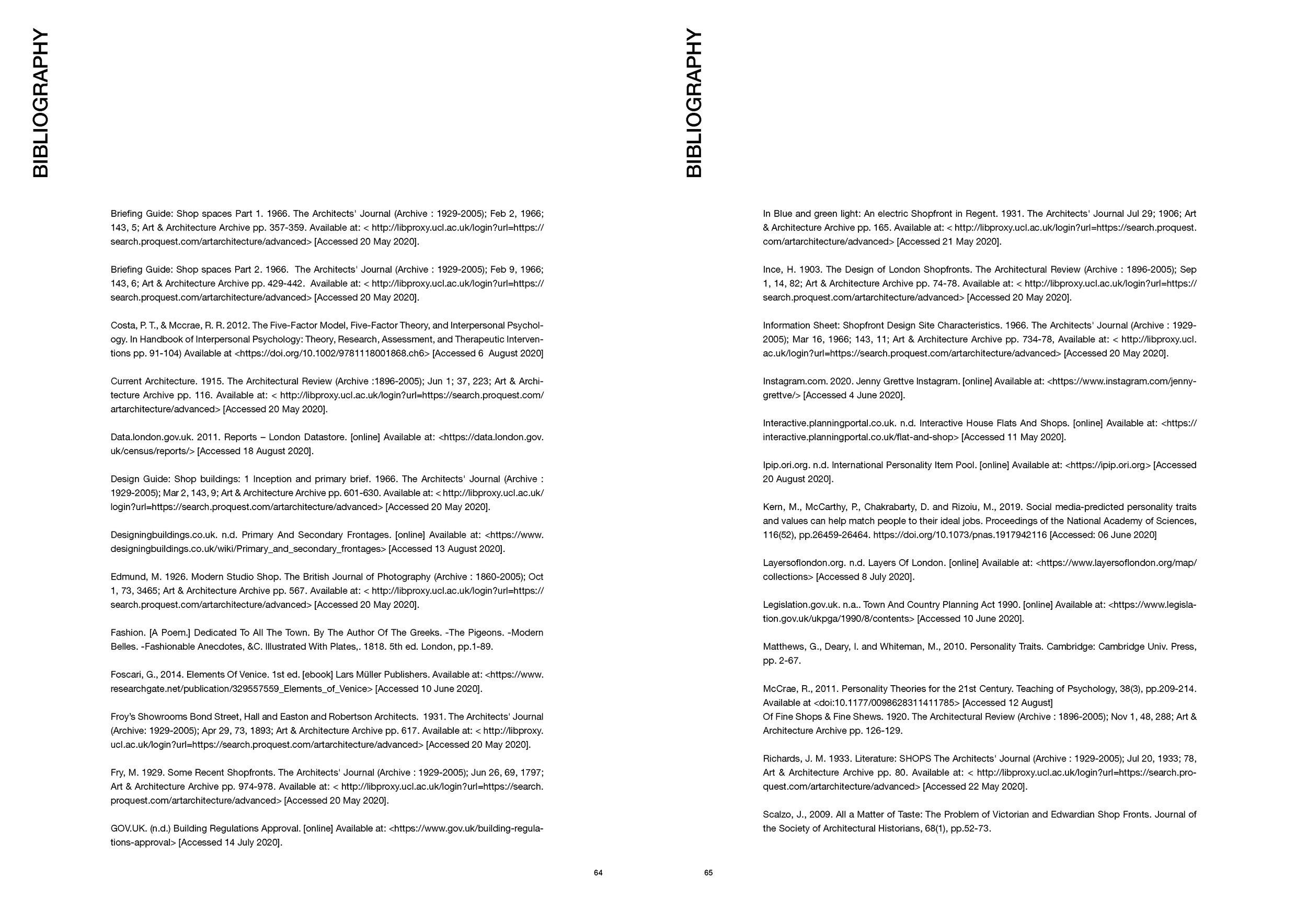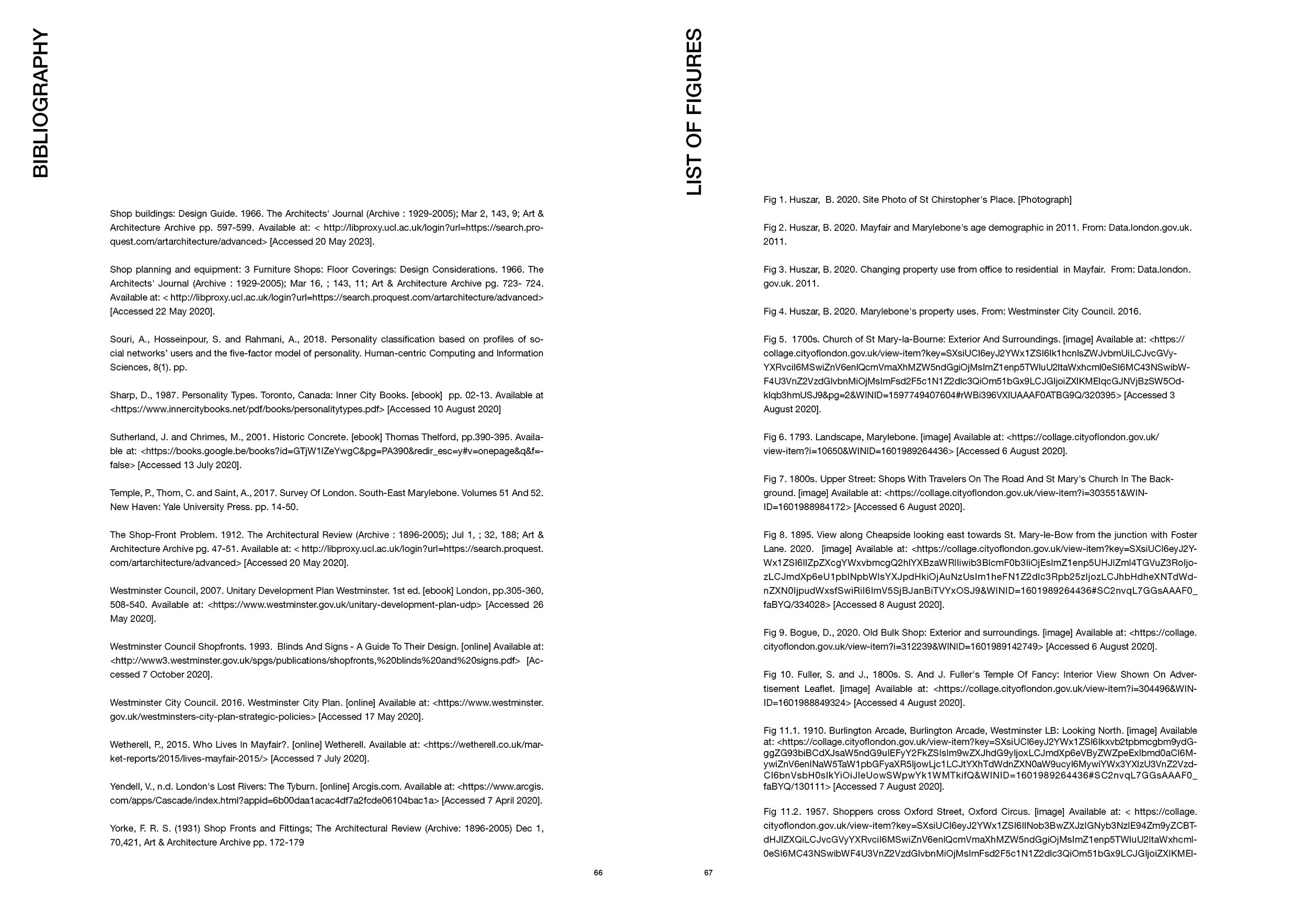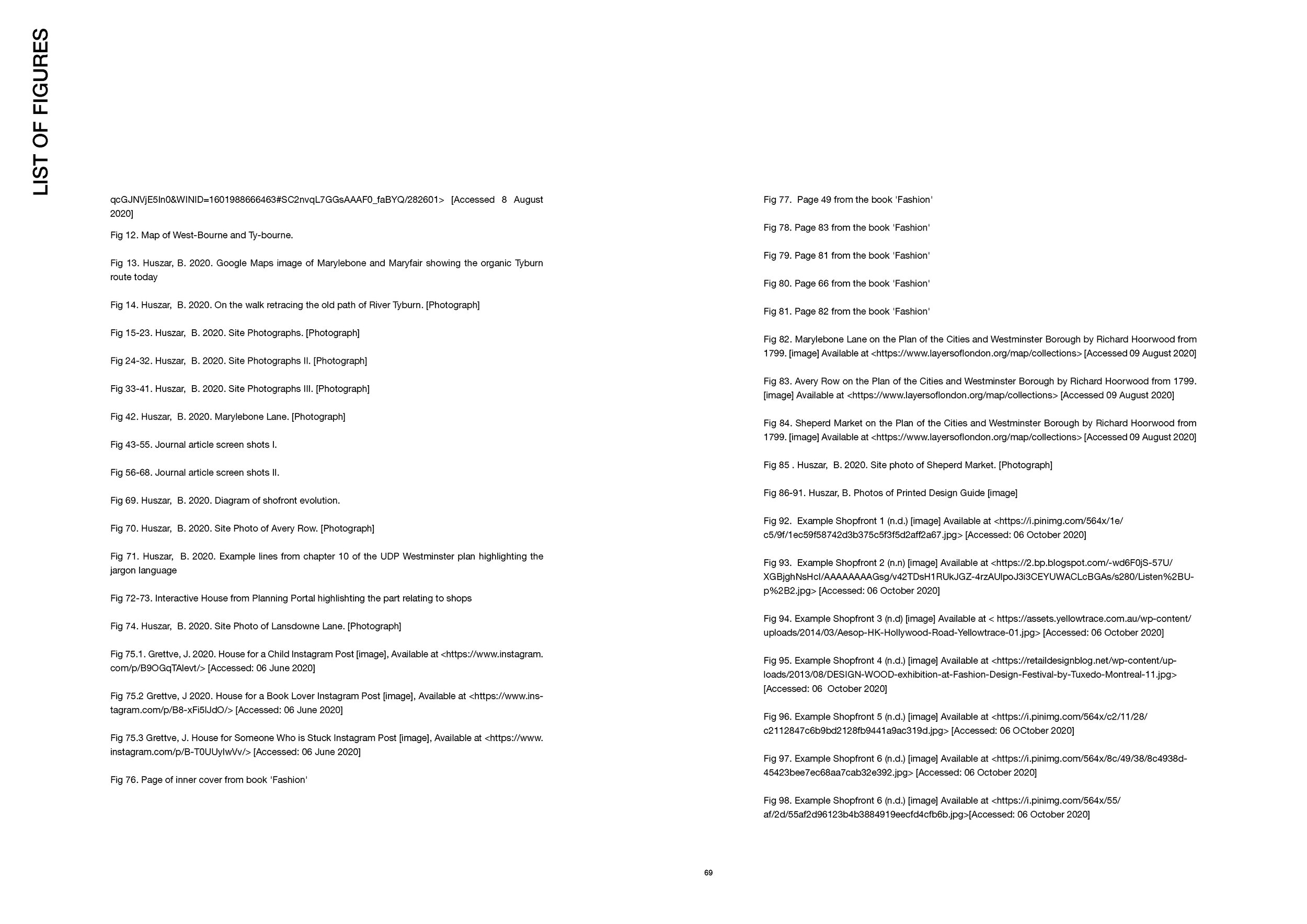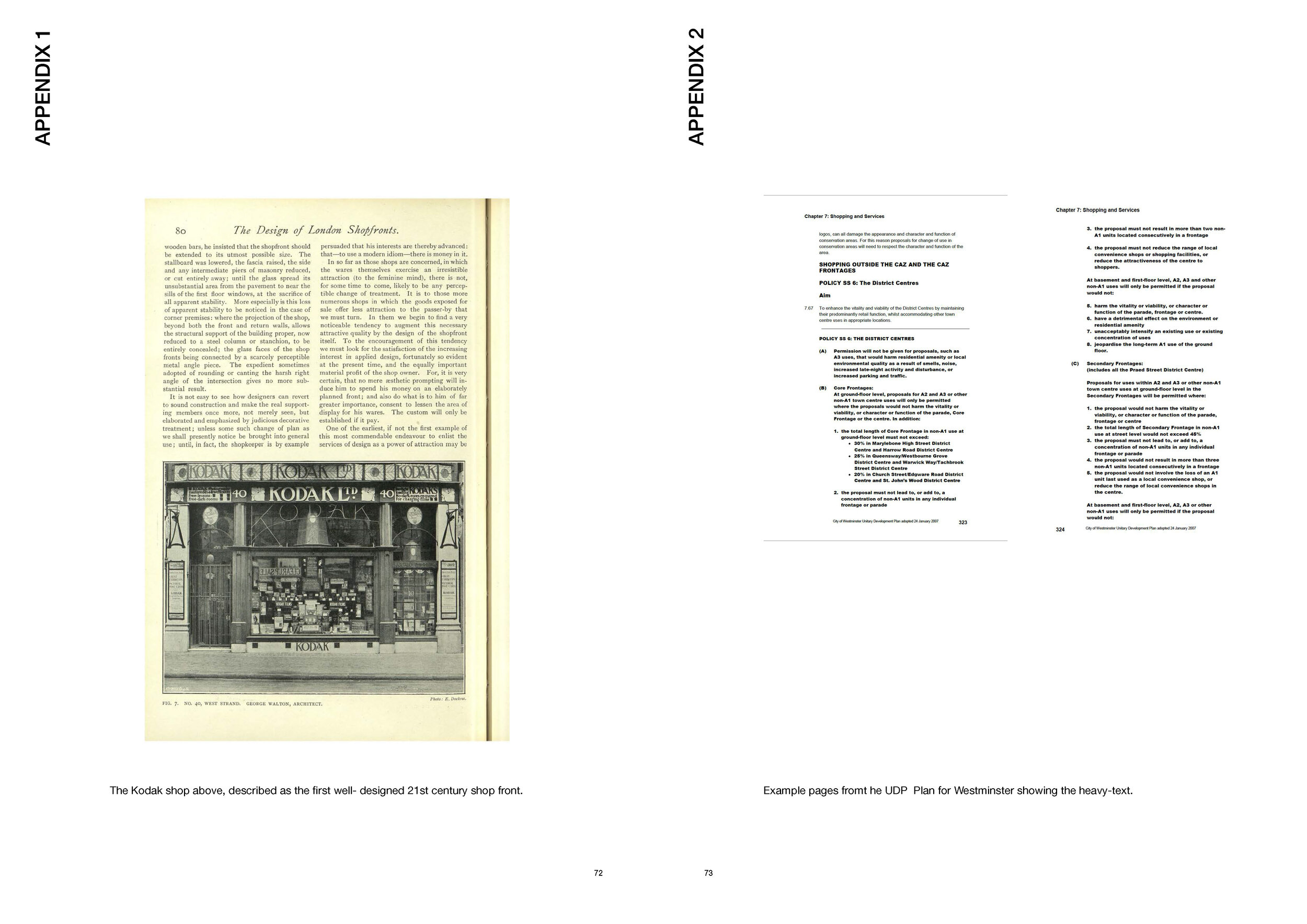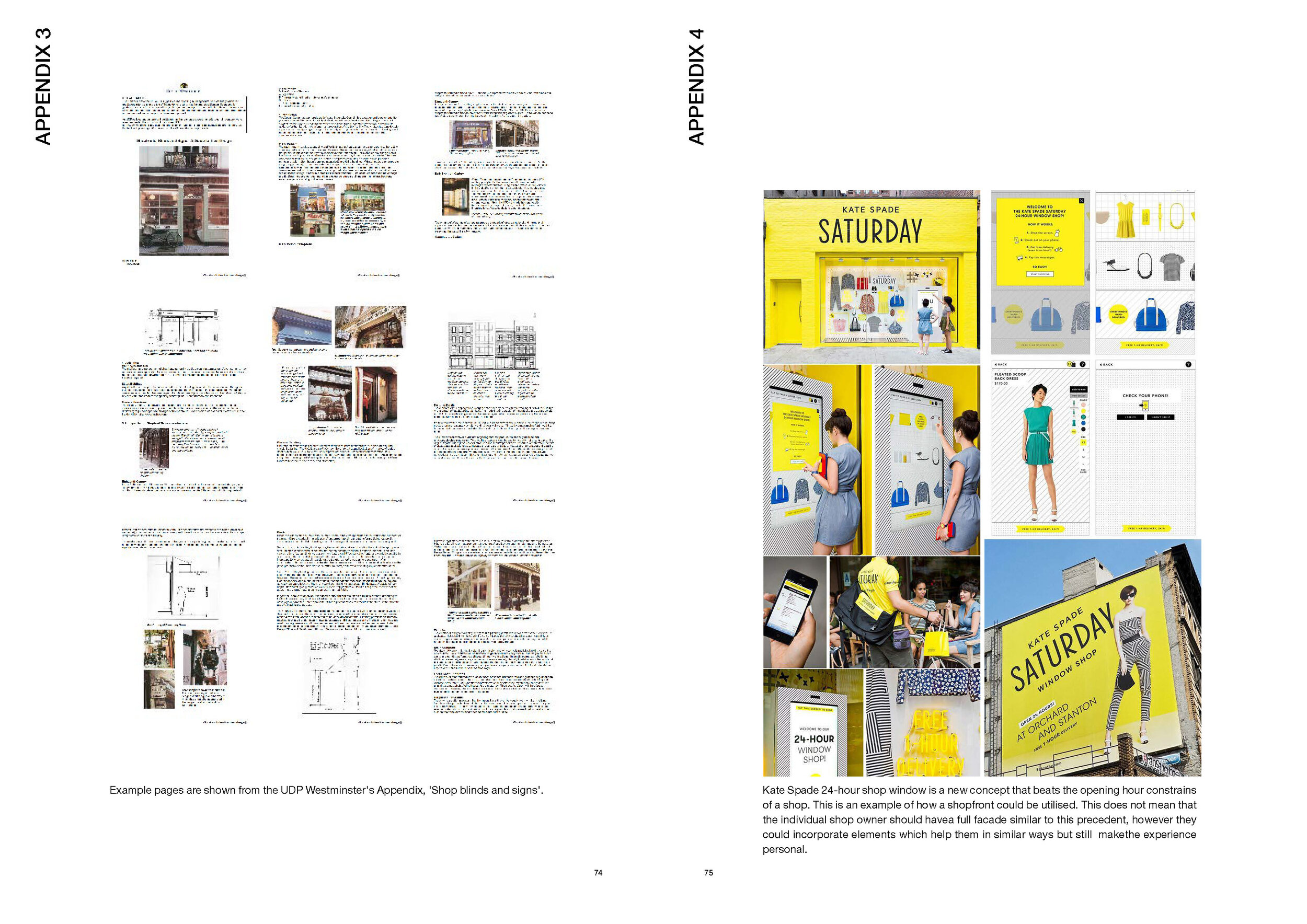FRONTAGE AS PEDAGOGIC DEVICE, TYBURN RIVER
This research provides an alternative to the dominant, consumerist retail environments that characterises London’s Oxford Street, where there is a disconnect between products and their production. This is achieved by introducing a transparent production line for the fashion industry, along the route of the historic Tyburn River. Acting as a place in which the public can view and discover the full process of garment creation from raw materials to completion.
Fashion and architecture are two fields that can exist independently from one another, they have their own individual functions, material construction and techniques. However, there are commonalities in both industries that this project aims to place focus on. They meet in their spatial design by providing shelter, reflecting an aesthetic or style and providing a mask/façade or frontage. Where these commonalities meet, there are opportunities for the two industries to inspire one another. Fashion inspired by architecture for example, often includes exaggerated proportions, geometric shapes and angles.
These proposals use the craft of a garment to provide the source of inspiration for the façade architecture of the street. The design of the street functions as a pedagogic device aimed at crafting garments focusing on the quality of hand-made garments. By placing an aesthetic as a common factor in the making and craft of a garment and the design of the building façade, the architecture will construct an underlying spatial meaning, that guides an individual through the garments production while also facilitating individual makers and craftsmen allowing the display of their craft to a wider audience. Questions over the value and significance of clothing in our culture have been addressed through the research of consumerist trends and the language of cosmetics in architecture over recent decades. An overarching aim is to address the current climate and trends in consumerist retail and fast fashion by promoting a more sustainable ethos of fashion creating and retailing; allowing both the conscious and unconscious individual an alternative to their current shopping habits. By highlighting the production methods involved in garment manufacture and creation, it is hoped that the value and significance placed on clothing can be altered and lead to new and more sustainable models of production and retail.
Barbara Huszar and Samuel Langley, UCL MA AHUE 2019/20
TYBURN RIVER: A RIVER REIMAGINED
London’s built landscape has been adapted and developed over the course of thousands of years. Yet despite widespread urban change, the natural geography of the land on which the city is built is still evident in London today, through both visual and physical geographical features and the existing urban form of the city.
London has always had a reciprocal relationship with its rivers and waterways. The River Thames, the dominant feature of the city’s geography acts as the main artery flowing west to east cutting across the London Basin. The Thames was once much wider and shallower and has since been heavily embanked as pressures of development have altered the geography of the city. The River Tyburn, a smaller tributary of the Thames, now lays below ground, tunnelled and resembling a city sewer, rather than the rural stream that it once was. It was these pressures and the growing need to expand the city during the 18th and 19th centuries that saw the Tyburn built over and in some places diverted. Today the route of the river Tyburn seems increasingly disconnected and has become hidden and peripheral to the city.
The aim of this research is to develop a vision for this largely disused and underutilised piece of city, encompassing the entire route of the known position of the subterranean Tyburn River. In doing so, proposing a new and strengthened navigable route through the city.
Key themes include an historical analysis of the route, recording historic development of the site through map progression and desk-based research. An evidence-based grounding in analysis and research informs the development of design proposals for the site’s public realm, and design strategy. Lastly a study of the opportunities and constraints of the neighbourhoods that the Tyburn passes through provides a basis on which site-specific design interventions can be proposed.
Samuel Langley, UCL MA AHUE 2019/20
GUIDANCE ON SHOPFRONTS, TYBURN RIVER
This research explores the idea of a comprehensive design guide for independent shop owners. Looking to attract particular audiences, it will consider our underlying human personality traits, when guiding shop owners through designing their shop fronts to attract target customers. The individual shop owner is often directly responsible for altering their store front, which can be a challenging task for someone with little or no architectural knowledge. Having found little guidance on how to treat shop front upgrades strategically, apart from limited often legal documents and guidelines aimed at professional, there was clearly a need for more accessible guidance.
This research focuses on setting out a framework to assist shop owners with shop front design through deepening their understanding of their premise and their target customers, whilst also outlining the importance of understanding the heritage of shop fronts in order to protect important architectural detailing from damage or removal when shops change hands.
To achieve this a Design Guide was set out to engage creativity and assist individuals to open their own businesses, which will ultimately serve the community. Shops have had a particularly hard time during the current climate of Covid-19, therefore the research considers the current challenges not just in the short term, but as potential long term solutions to effect the future of the way people shop. As shop design has recently become part of the language of a ‘brand’, shopfronts have to appeal to the target audience aimed to purchase the sold product or use the offered service. The research plays with the idea of considering distinctive psychological profiles to outline the way a shop owner should treat retail architecture in order to attract the right customers.
Barbara Huszar, UCL MA AHUE 2019/20

